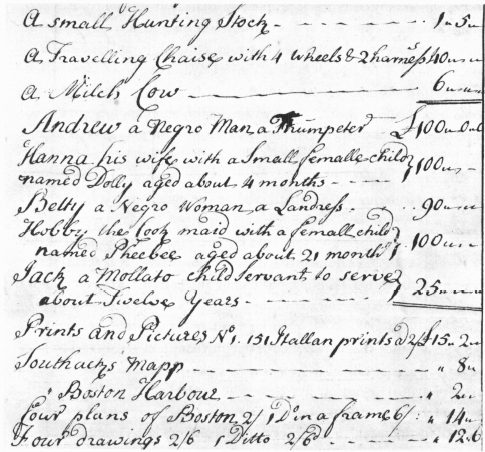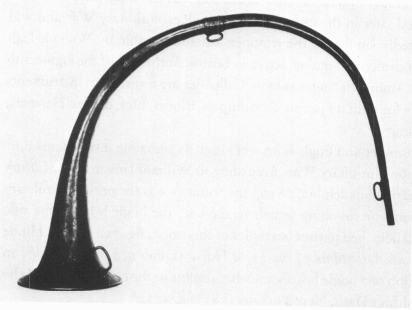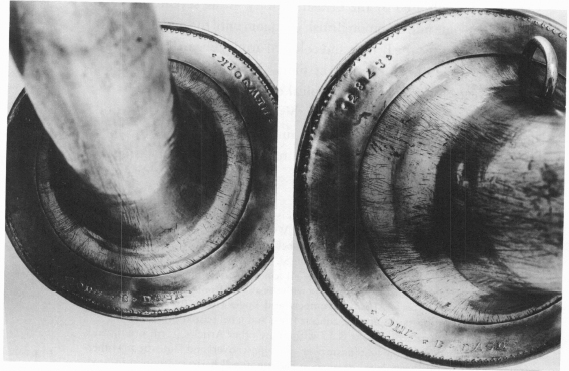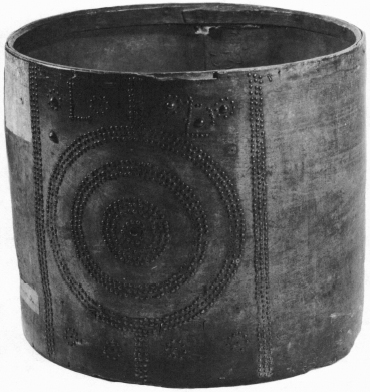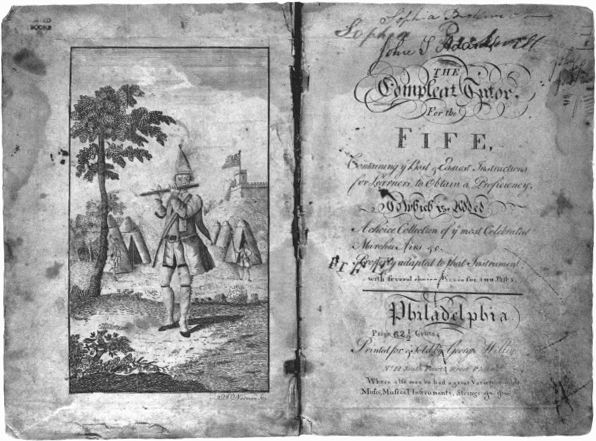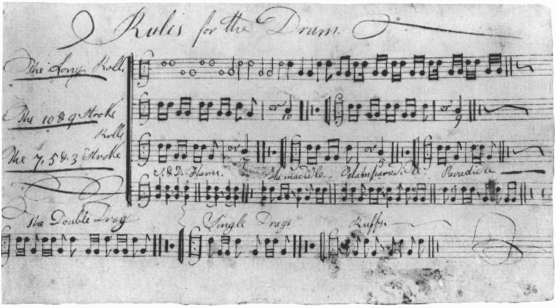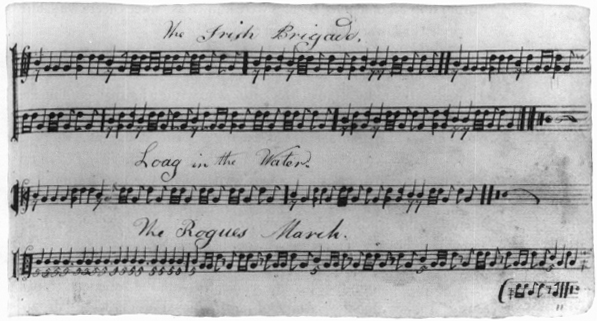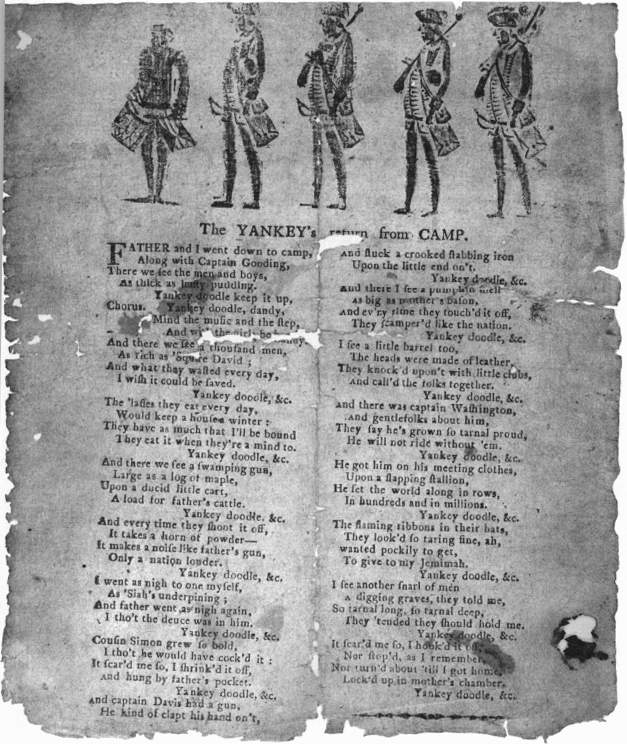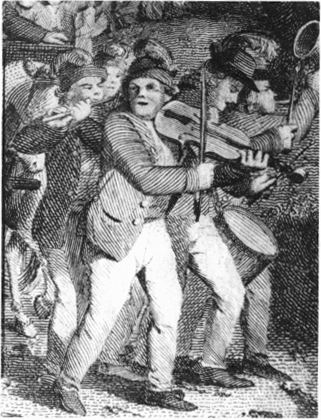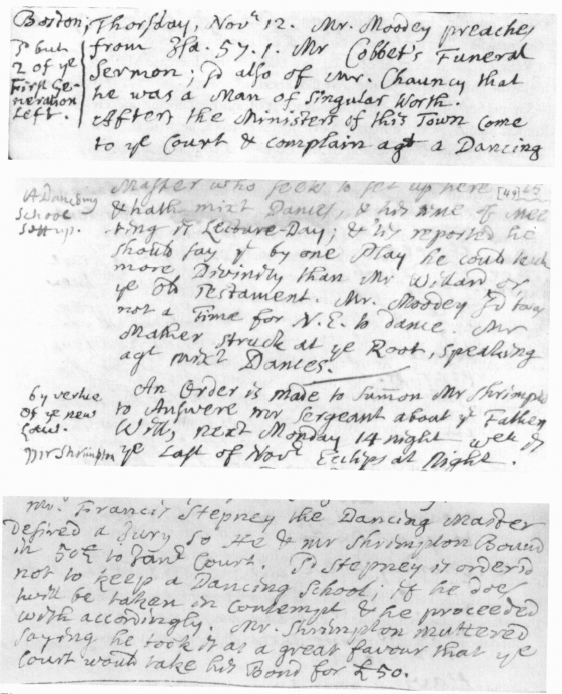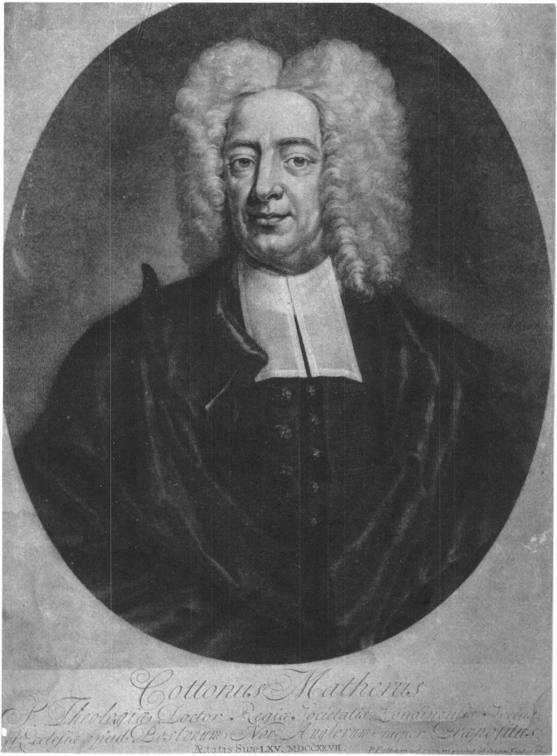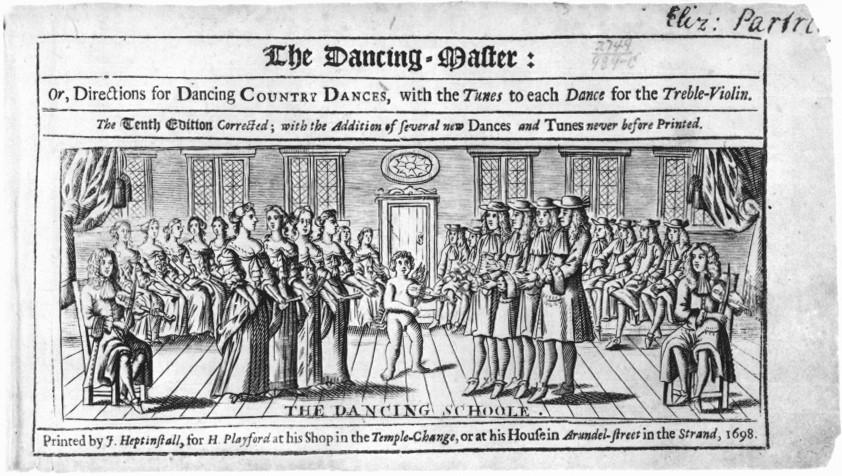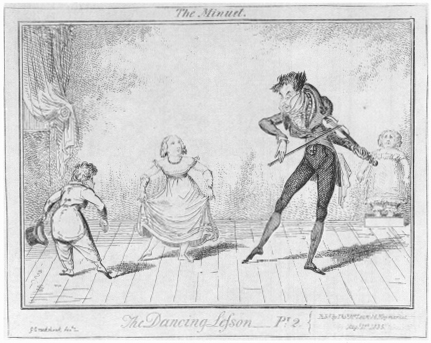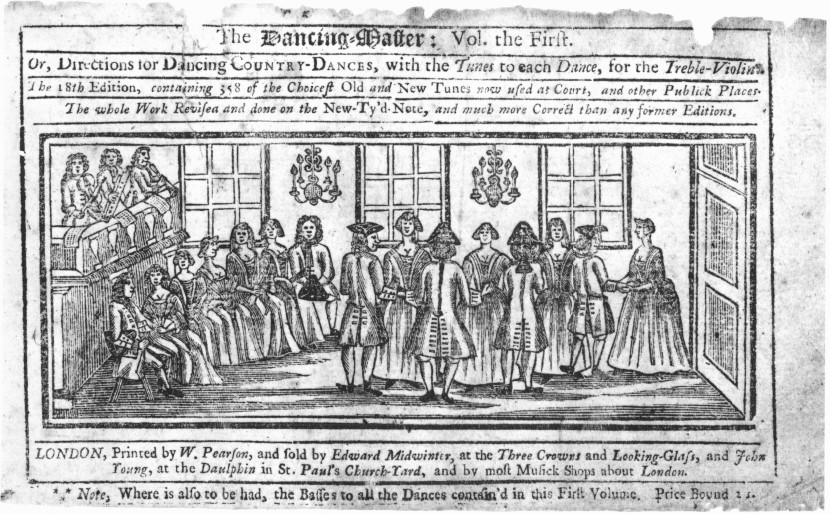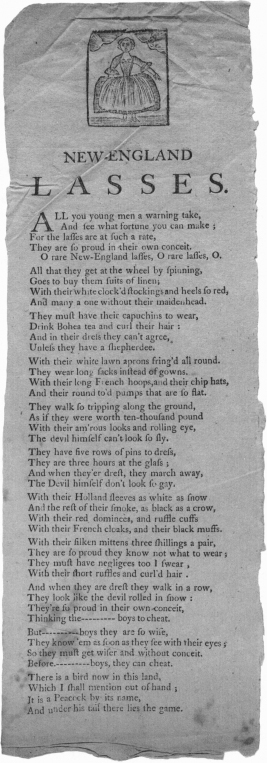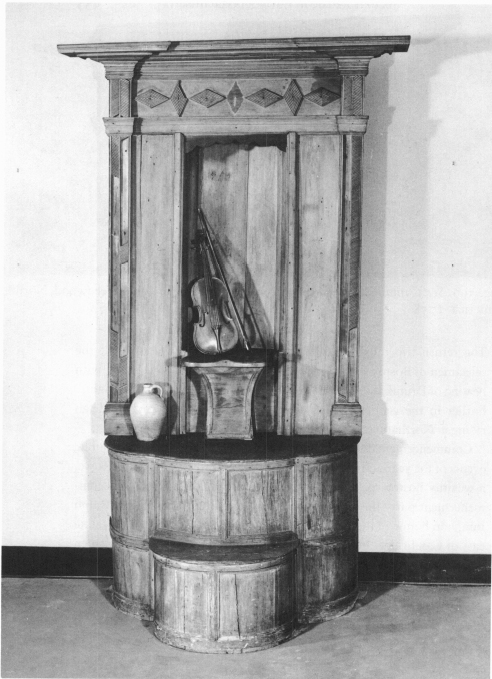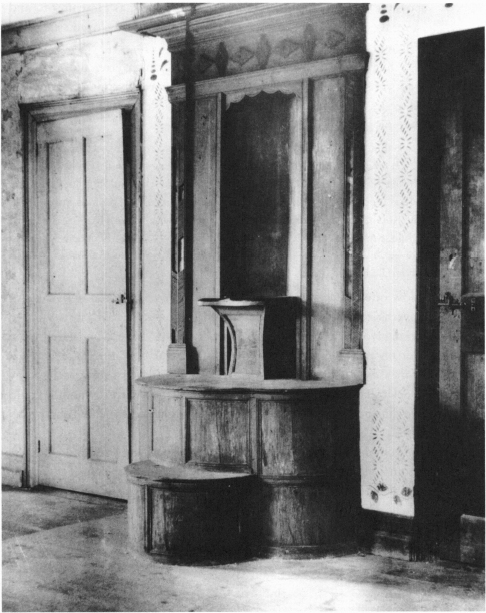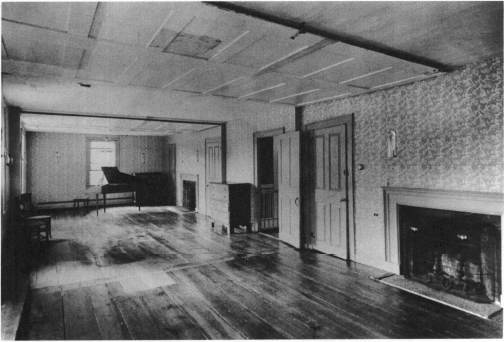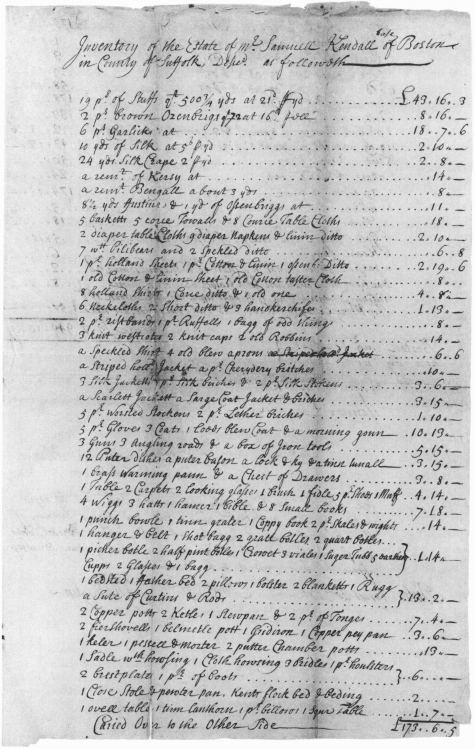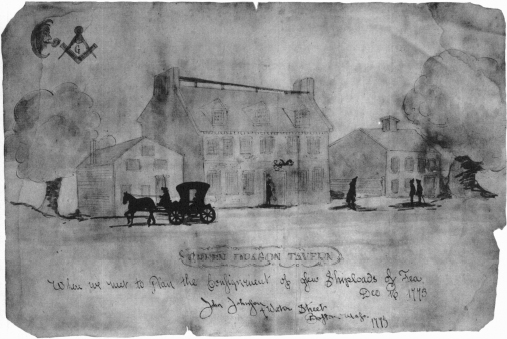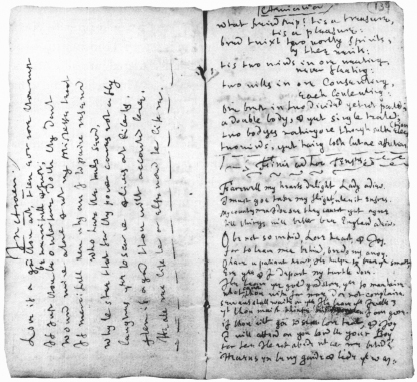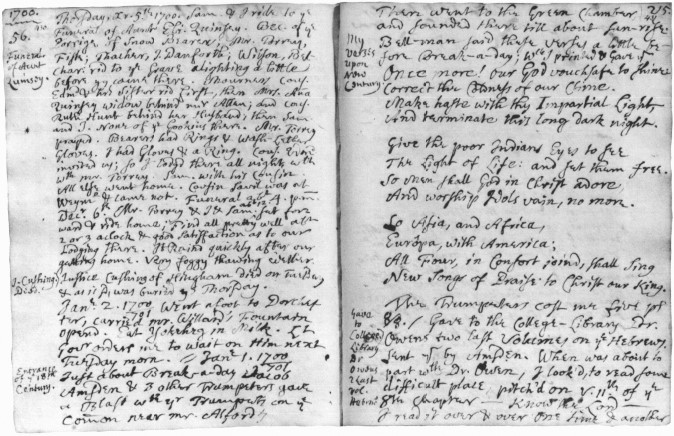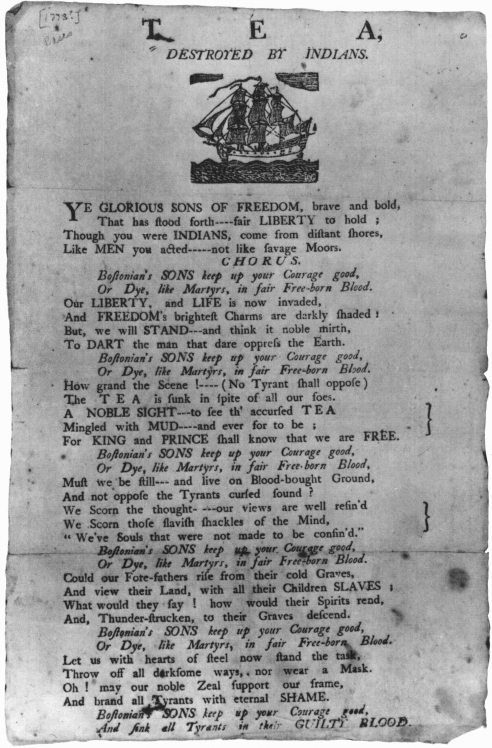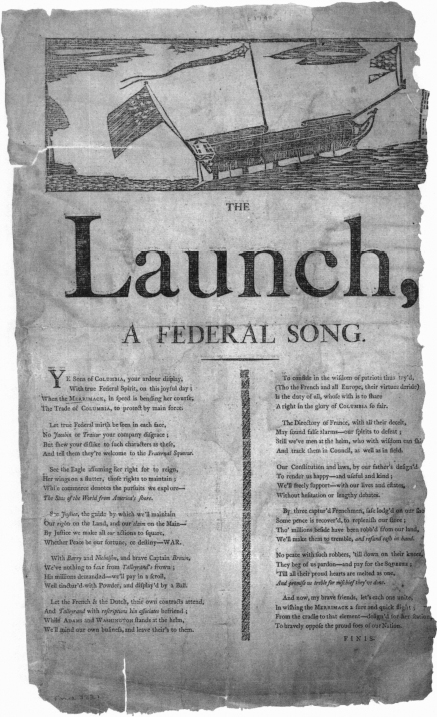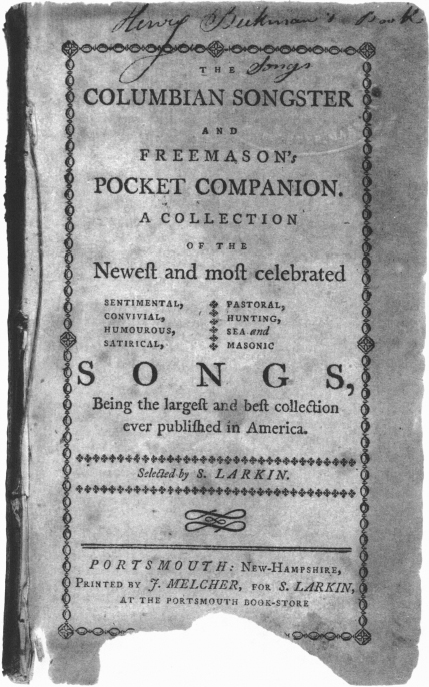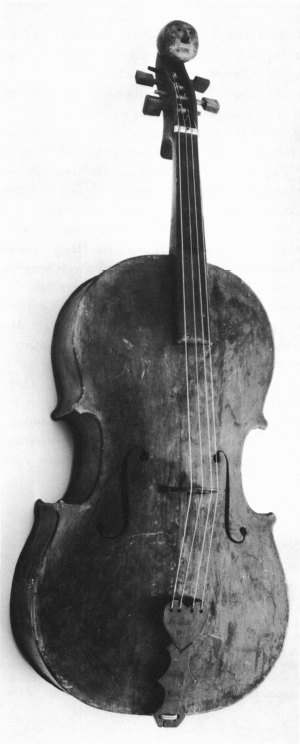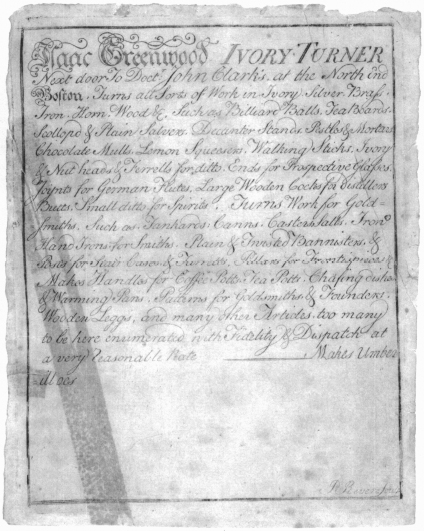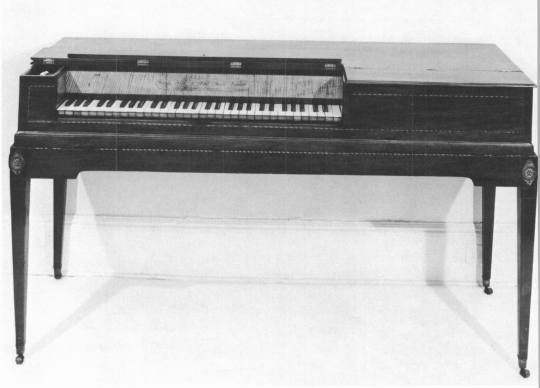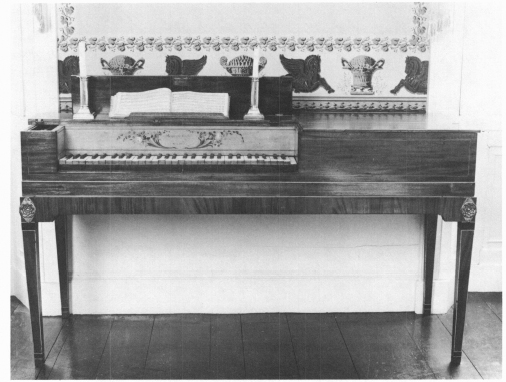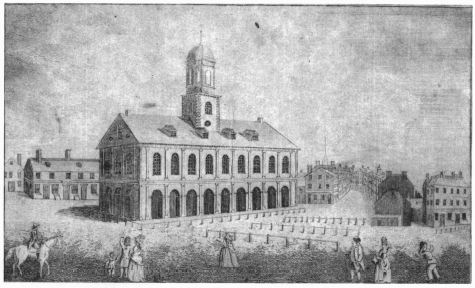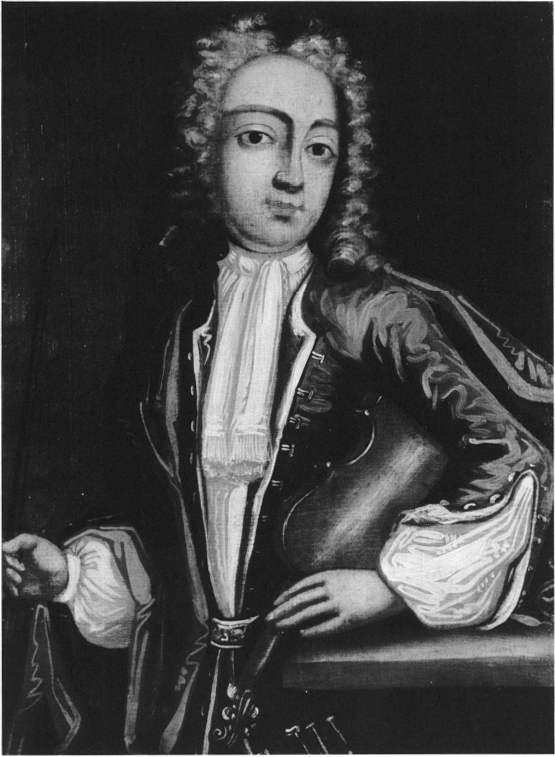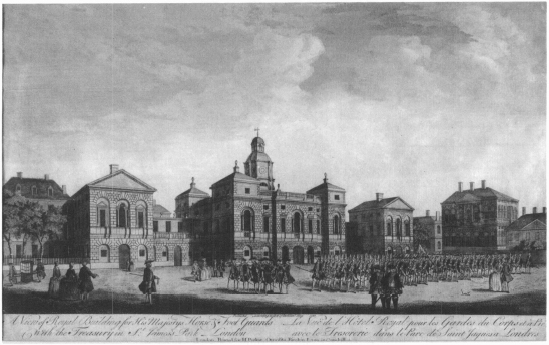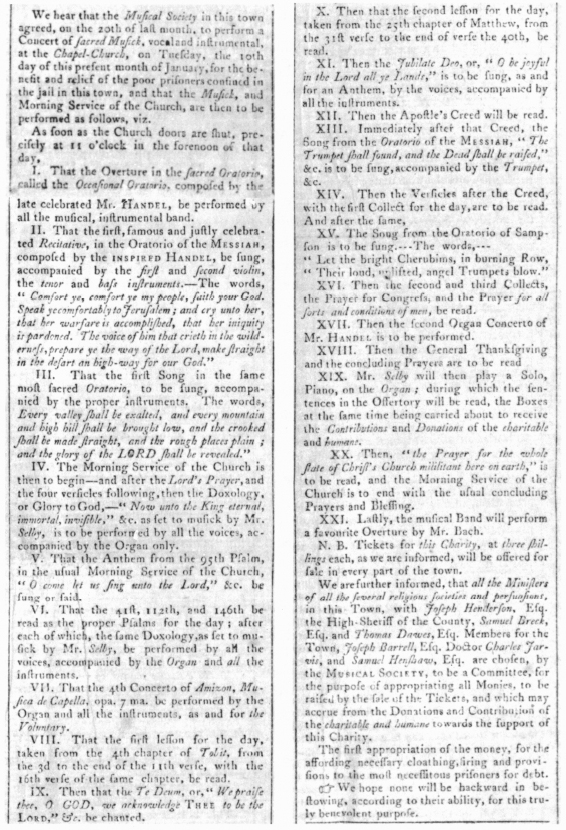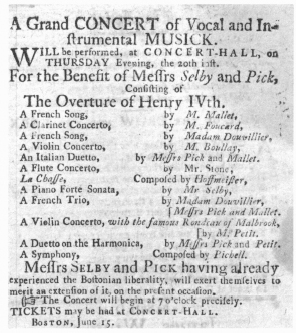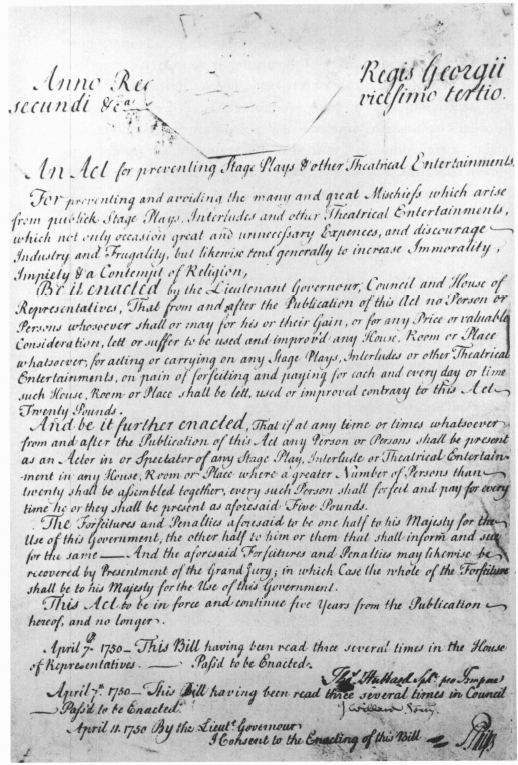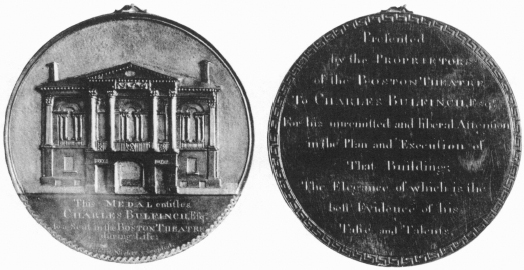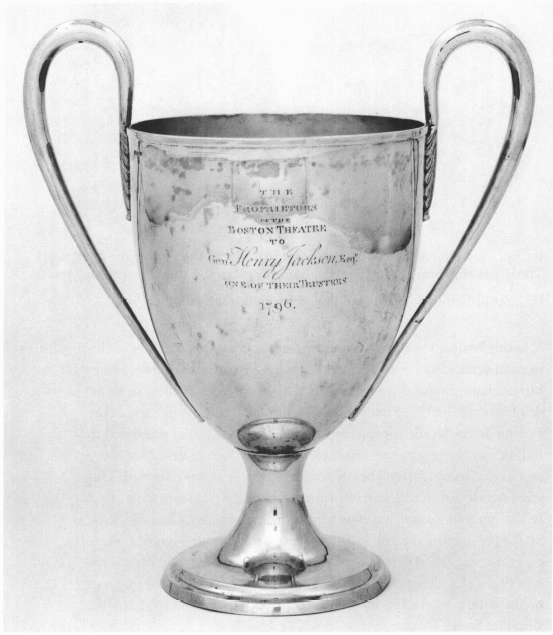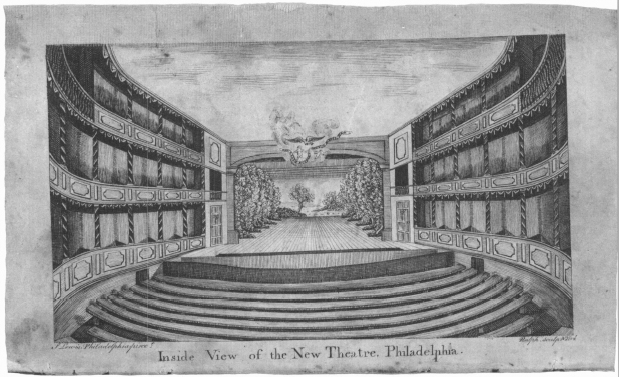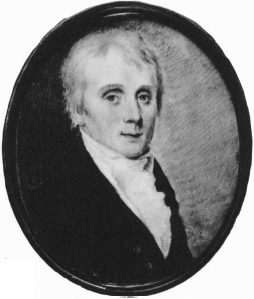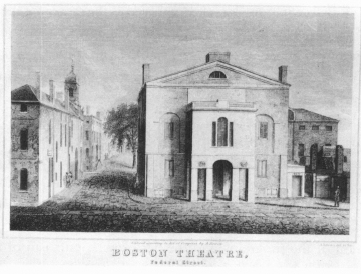Epilogue to Secular Music in Early Massachusetts
introduction
THE first Puritan residents of Massachusetts joined together in public and in private to hear and perform music. From the time of the initial settlements, music was performed on ceremonial and military occasions, in church, taverns and inns, and at home. Later New Englanders enjoyed secular music at dancing classes and assemblies, private societies, and concert and theater performances.
This Epilogue, written between 1973 and 1976, focuses on music heard in public places, secular music that was part of the fabric of everyday life in early Massachusetts: how and where colonists enjoyed their music, where they learned it, and where they could obtain music and instruments. Concert and theater life are treated in greater detail than military music, dance, and secular song since the latter subjects are discussed in depth elsewhere in these volumes.
Barbara Lambert’s contributions to this Epilogue and her generosity in sharing her findings with me are gratefully acknowledged here and elsewhere throughout the pages which follow.
ceremonial and military music
In the first year of settlement, the Pilgrims record the use of musical instruments. On March 22, 1621, King Massasoit and Governor William Bradford met to discuss a treaty of peace, a meeting described in a journal thought to have been kept by William Bradford and Edward Winslow. According to the account, Capt. Standish and Master Williams met the king at the brook, then “conducted him to an house then in building, where we placed a greene Rugge, and three or foure Cushions, then instantly came our Governour with Drumme and Trumpet after him, and some few Musketiers.” In one day the Pilgrims and Indians concluded a treaty of peace which lasted well into the seventeenth century. As busy as Massasoit must have been, he took notice of the instruments. The account reports that “hee marveiled much at our Trumpet, and some of his men would sound it as well as they could.”1
The trumpet may have been an object of marvel and curiosity to King Massasoit, but to the early settlers the trumpet and drum were more than objects for pleasure. They served as signal instruments to assemble citizens to meeting, to call them to battle, or to announce laws and other important news. (For a compilation of primary sources on civic announcements, see Appendix B.) Edward Johnson records one use in Wonder-Working providence. Wandering westward from his home in Charlestown in 1636 on an Indian trail toward what is now Cambridge, he heard a drum and demanded “of the next man he met what the signall of the Drum ment, the reply was made they had as yet no Bell to call men to meeting; and therefore made use of a Drum.”2
Before communities could purchase a bell, they considered the possession of a drum so essential that towns and town officials were fined if they were without one. In 1658 Plymouth Colony passed an ordinance “that every towne that shalbee defective in the want of a drum att any time for the space of two monthes shall forfeit the sum of forty shillings to the collonies use.” Two selectmen of Manchester were reprimanded in 1665 “for withholding pay for a drum bought for the town, to the value of 45s.”3
That these instruments were used in the years to follow for many occasions and by all types of people is evident from official records and diary accounts. Samuel Sewall of Boston (for his portrait, see fig. 241 in this volume) notes the use of “but four Drums” in an Election Day parade on May 20, 1691. On New Year’s Day in 1697 Sewall writes that “one with a Trumpet sounds a Levet at our window just about break of day, bids me good morrow and wishes health and happiness to attend me.” Sewall and the new century are welcomed on January 1, 1700/1, with four trumpeters who “gave a Blast with the Trumpets on the common near Mr. Alford’s.”4
Even the Barbers’ Union gathered at the sound of the trumpet in Boston in 1724. The New-England Courant of November 30, 1724, reports: “Boston, Dec. 7, on Tuesday the first of this Instant in the Evening, Thirty-two Principal Barbers of this Place, assembled at the Golden Ball, with a Trumpeter attending them, to debate some important Articles relating to their occupations; where it was propos’d, that they should raise their shaving from 8 to 10 s per Quarter, and that they should advance 5 s, on the Price of making common Wiggs and 10 s on their Tye ones. . . .”
Although it is not always clear who was playing the instruments, many references indicate that the instrumentalists were part of a military unit. The Rev. William Adams of Dedham wrote in 1670 that “Francis Willoughby Esquire was solemnly interred w/ye attendance of 11 foot companys (with ye doleful noise of trumpets and drums) in their mourning posture all marching. . . .”5 The account of the funeral of Gurdon Saltonstall (Harvard class of 1684) on September 22, 1724, depicts another scene with military musical accompaniment: “The horse and foot marched in four files; the drums, colors, trumpets, halberts, and hilts of swords covered with black and twenty canons firing at half a minute’s distance.”6
Fig. 372. Detail from page 8 of the household inventory of Governor William Burnet, Boston, 1729.
Who played at Saltonstall’s funeral is unknown, but the year before in 1723 a slave, Nero Benson, was known to be serving as a trumpeter in the company of Capt. Isaac Clark in Framingham, Massachusetts. Other slaves and servants used these instruments also. The inventory of Governor William Burnet who died in Boston in 1729 (for his portrait, see fig. 269 in this volume) includes the listing of “Andrew a Negro Man a Trumpeter” (fig. 372) as well as “Two Brass Trumpets”7 (fig. 270 in this volume).
The trumpet played on these occasions was the same kind of instrument used later in the century during the Revolutionary War and was undoubtedly similar to the trumpets offered for sale by William Callender, a dealer and maker active in Boston at the end of the eighteenth century. Among the items sold by Callender are a variety of instruments available for military purposes: trumpets, bugles, fifes, drums, clarinets, and oboes.8
The trumpet and bugle horn were used as signaling instruments during the Revolutionary War. According to William Duane in A Military Dictionary (Philadelphia, 1810), the trumpet was the principal military instrument for sounding signals to the line, the bugle horn to the rifle men and detached parties (see vol. I of this book, fig. 71). Robert Hinde in his book Discipline of the Light Horse (London, 1778) includes an illustration of a bugle horn somewhat similar to the bugle horn made by John Balthius Dash, New York, in 1783 (fig. 373).9
The fife, though used by the British military in the seventeenth century, did not come into common British use again until the mid-eighteenth century. At this time the British and colonial armies began to enlist boys as young as nine or ten to serve as fifers. A fife stamped “Callender Middle Street No. 62 Boston” is typical of the type of fife used by the time of the Revolution (see fig. 260 in this volume). Made of boxwood, with brass rings, it has the usual six fingerholes on which the fifers learned to play signals and commands, march tunes, and quicksteps of the day.
Fig. 374. Drum by an unknown maker, New England, 1675–1700.
The drum of the Revolutionary War period was made of wood, usually painted with the color, number, and markings of the regiment. The two skin heads were held by wooden hoops laced with ropes tightened by leather tabs or ears. Two gut snares were usually stretched across the bottom drumhead. Although the size varied according to the maker, the snare drum of the second half of the eighteenth century was smaller than one of the first half. The shell of the drum (see fig. 268 in this volume) made by Robert Crossman of Taunton in 1739 is 15 inches high with a diameter of 16⅝ inches; the drum carried by John Robbins in the Revolutionary War is 9½ inches high and 16½ inches in diameter (see fig. 76 in volume i of this book). Eighteenth-century drums, in turn, were smaller than seventeenth-century drums. The only drum known to have survived from seventeenth-century New England is from Connecticut and measures 19⅝ in. in height and 23¾ in. in diameter (fig. 374).
Fig. 375. Frontispiece and title page,? 1805.
The musicians learned to play by drilling and listening to each other, by studying any available fife or drum manuals (usually they were British), and by copying down the drum cadences and fife tunes in their own copybooks. Although some eighteenth-century American manuscript copies of fife books are known, American fife tutors with an American imprint are rare. A Compleat Tutor for the Fife advertised in the Pennsylvania Gazette for July 3, 1776, as “just published and to be sold by Michael Hillegas” is unlocated. But the 1776 tutor may exist in a slightly altered form in The Compleat Tutor for the Fife, printed for and sold by George Willig in Philadelphia, ca. 1805 (fig. 375). A study of the tunes as well as the engravings by John Norman who was active in Philadelphia from 1774 to 1781 suggests a possible connection between the two editions.10
One of the earliest American documents with drum notation is a manuscript, “Benjamin Clark’s Drum Book,” 1797, at the Massachusetts Historical Society. It contains drum beatings for thirty-seven tunes and thirteen additional titles of melodies to which the beatings can be played. Instructions for executing the various beatings are included on the verso of the last page (fig. 376a). Nearly all the tunes are known for which the beatings are given. A martial tune, “Loag in the water” (fig. 376b), for example, also known as “Logan water,” has been used for the setting of the anonymous broadside Canada Subjected (see vol. I of this book, fig. 158) in the study “Broadsides and Their Music in Colonial America” by Carleton Sprague Smith in this work.
Though not the first American to publish a drum tutor, Levi Lovering of New Jersey (formerly of Massachusetts) brought out The Drummer’s Assistant; or the Art of Drumming Made Easy in Philadelphia about 1818. In the tutor Lovering includes “his mode of notes to be beat on the Drum” as well as a plan showing the form of a battle. The engraving showing the battle plan places a fifer and drummer playing behind each opposing side. The drummers, especially, were expected to remain with their companies throughout the battle to give marching signals (fig. 377).
The drummers and fifers also helped to organize the activities of the regiment. Because the increased size of the army made it difficult to coordinate drum calls, Gen. Washington issued an order in 1777 for the drum of the regiment on the right to give three taps (in 1778 changed to three rolls), a signal to be repeated on down the line to alert the regiments for the signals to follow. By the nineteenth century these three drum rolls accompanied by fifes were known as “three cheers,” a salute included by Lovering in his drum manual.11
Fig. 376a. Instructions for executing drum beats, last folio, verso, from ms Benjamin Clark’s Drum Book, 1797.
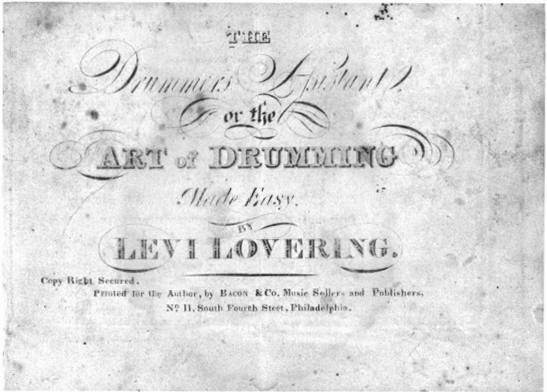
Fig. 377. Title page and engraved recto of last leaf, (opposite), 1818.
Fig. 376b. Drum-beat notation for two tunes, folio 11 verso, from ms Benjamin Clark’s Drum Book, 1797.
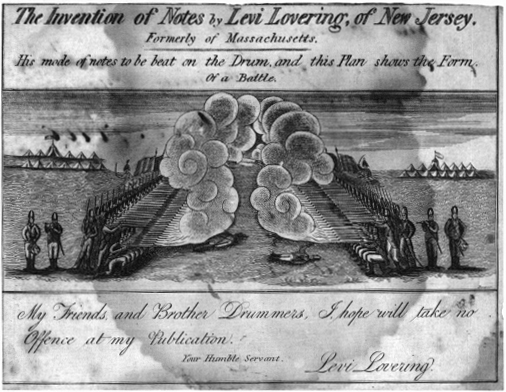
The fife and drum played for funeral marches, for executions, and for the drumming out of camp of a man or woman convicted of a crime or a breach of discipline. Daniel McCurtin, who wrote a journal recalling the time he was stationed in Cambridge during the siege of Boston in 1775, tells of a soldier found guilty of stealing a twenty dollar bill. After the soldier had received thirty-nine lashes, “he was drummed out of camp by fifty and two drums and as many whifers. This was the first time that ever I heard such a number of drums beat all together, they made such a report in my ears, when accompanied by such screaking of whifes that I could not hear the next man to me, or however could not hear what he said.”12
One of the tunes that became associated with the American troops was “Yankee Doodle,” a tune of undetermined origin despite the research of many scholars for many decades. The words, as seen on the broadside The Yankey’s return from Camp (fig. 378), date most likely from 1775 or 1776 after Washington took command of the Continental Army in Cambridge. One possible author of the words is Edward Bangs (Harvard class of 1777).13
Fig. 378. Broadside, ca. 1775.
That the tune had come to represent the most familiar American march by the time of the British defeat on October 19, 1781, is indicated from several reports following the surrender. Although the honors of war usually allowed for the defeated while retreating to play a melody of the victors, the terms of the Yorktown surrender stated that the British were to return to their camp accompanied, not by an American march, but by a British or German march. Since the British had refused to accord the honors to the Americans defeated at Charleston on May 12, 1780, Washington defended the same arrangement in a letter to Lord Cornwallis on October 18, 1781. When the terms were publicized, one happy American, Henry Knox, wrote to his wife on October 19, 1781, “they will have the same honors as the garrison of Charleston; that is, they will not be permitted to unfurl their colors, or play Yankee Doodle.”14
Many regiments had bands of music, often made up of professional musicians who had no military connections. The typical regimental band was usually made up of eight players: pairs of oboes, clarinets, French horns, and bassoons. The activities of this type of band are discussed in more detail in the section on concerts (pp. 814–825) and in the detailed study “Military Band Music in Colonial Massachusetts” by Raoul F. Camus (vol. I of this book).
Sometimes, though, the typical grouping was not always observed. Some bands had fiddlers. The use of fiddlers is recorded by an anonymous soldier of the 4th Massachusetts Regiment stationed in Louisbourg in 1745. He wrote, “we had Thirty Six Drummers, who was ordered to beat at once, which we did for a considerable time, altho i knew no reason for it. There was also many Fiddlers, Trumpetters etc which were pleasing.” The engraving by Elkanah Tisdale of New York in 1795 shows a group of four marching musicians: players of the fife, drum, bugle horn, and fiddle or possibly a viola (fig. 379; for a full view of the instrumentalists, see vol. I of this book, fig. 68).
The fiddle made by Simon Snow in 1779 in Lexington may have been used to entertain the troops in time of war. Though lacking its scroll and not in playing condition, this Snow fiddle is one of the few documented eighteenth-century American-made fiddles extant (fig. 380). This fiddle at one time belonged to Stiles Edward Shirley, a sea captain, who played it on his voyages.15
Fig. 379. Detail from an etching “The Procession” by Elkanah Tisdale, North America, 1795.
dancing
The fiddle or violin brought great pleasure to many New Englanders as the principal instrument used for dancing. On the title page of most editions of The English Dancing Master, a dance book popular in England and the colonies following its publication in London in 1651, John Playford advises: “The tune to each Dance to be played on the Treble-Violin.” Publishing at a time of Puritan rule in England, Playford cites the Ancient Greeks, Plato, and lawyers of the “Innes of Court” who were noted for their grand balls and skillful dancing as persons who approved the art of dancing. Dancing, according to Playford in his introduction, is “Excellent for Recreation, after more serious Studies, making the body active and strong, graceful in deportment, and a quality very much beseeming a Gentleman.”16
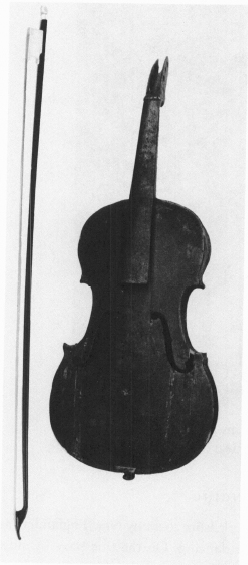
Fig. 380. Violin by Simeon Snow, Holden and Lexington, Massachusetts, 1779.
Leading colonial Puritan ministers acknowledged this point, although they felt it could be carried too far. In An Arrow Against Profane and Promiscuous Dancing, Drawn out of the Quiver of the Scriptures, a tract against mixed dancing dated 1684, they include “Plea 2. The Design of Dancing is only to teach Children good Behaviour and decent Carriage. Ans. Religion is no Enemy to good Manners, to learn a due Poyse and Composure of Body is not unlawful, provided it be done without a provocation to Uncleanness, and be not a Nurse of Pride and Vanity. . . .” The plea goes on to warn parents to find a suitable teacher for these good traits. This same desirability of dance is repeated by John Locke a few years later (1690) in Thoughts on Education, a book used by many New Englanders in raising their children.17
From the early settlements, leading clergy expressed their limited approval of dancing. John Cotton, father-in-law of Increase Mather and grandfather of Cotton Mather (for the portrait of the last, see fig. 386 in this contribution), wrote on the subject before beginning his successful career in Boston in 1633. On March 3, 1625, in reply to a question of whether dancing was lawful, Cotton wrote:
Dancing (yea though mixt) I would not simply condemn. For I see two sorts of mixt dancings in use with God’s people in the Old Testament, the one religious, Exod., xv, 20, 21; the other civil, tending to the praise of conquerors, as the former of God. 1 Sam. xviii, 6, 7.
Only lascivious dancing to wanton ditties and in amorous gestures and wanton dalliances, especially after great feasts, I would bear witness against, as great flabella libidinis.18
Formerly head lecturer at Emmanuel College and vicar of St. Botolph’s at Boston, England, Cotton no doubt had in mind “lascivious dancing” familiar to him in England. Clerics of the time often cited the celebration of May Day as one filled with wanton and heathen dancing. Through the dancing on this day, wrote John Northbrooke in 1577, “many may dens have been unmaydened.”19
Thomas Morton, who founded the unusual community of Merry Mount on Mount Wollaston in Plymouth colony, celebrated May Day of 1627 by setting up “a goodly pine tree of 80 foote long . . . with a peare of buckshorns nay led on somewhat neare unto the top of it.” According to contemporary accounts, “there was likewise a merry song made, which (to make their Revells more fashionable) was sung with a Chorus, every man bearing his part; which they performed in a daunce, hand in hand about the Maypole, whiles one of the Company sung and filled out the good Liquor, like Gammedes and Jupiter.” Governor William Bradford of Plymouth described them as “drinking and dancing aboute it many day togeather, inviting the Indean women for their consorts, dancing and frisking togither (like so many fairies, or furies rather), and worse practises.”20 The Maypole was still part of colonial life in 1687, for Sewall in his diary for May 26 and 27 mentions one in Charlestown.21 A children’s song, “Dancing Round the May-Pole,” appears in Isaiah Thomas’ A Little Pretty Pocket-Book of 1787 (fig. 381).
John Cotton was also said not to favor dancing at marriages. At weddings in England at that time, wedding guests were known to have led the bride and groom to the bridal chamber dancing to “The shaking of the sheets,” or as Playford calls it, “Nightpiece.” The guests at colonial weddings must also have celebrated heartily, for a Massachusetts law was passed on May 7, 1657, against such events. The law stated: “Whereas it is observed that there are many abuses and disorders by dancing in ordjnarjes, whether mixt or vnmixt, vppon marrjage of some persons, this Court doth order, that henceforward that shallbe no dancing vppon such occasion, or at other tjmes in ordinarjes, vppon the pajne or poenajte of five shillings to euery person who shall so daunce in ordinarjes.”22
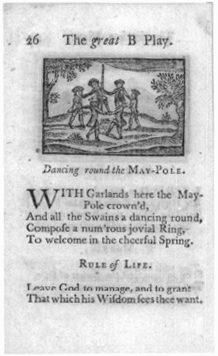
Fig. 381. Engraving from the childrens’ book: A Little Pretty Pocket-Book, Worcester, Massachusetts, 1787.
But even the “Ministers of Christ at Boston” (in the person of Increase Mather) in the tract An Arrow Against Profane and Promiscuous Dancing (fig. 382) recognized that “Dancing or Leaping, is a natural expression of joy: So that there is no more Sin in it, than in laughter, or any outward expression of inward Rejoycing.” The tract also says that some New England Church members have “sent their Children to be Practitioners or Spectators of mixt Dancing between young Men and Maidens.”23
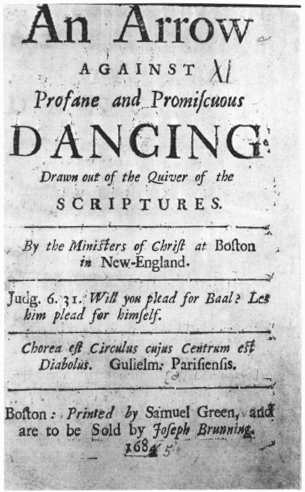
Fig. 382. Title page, probably 1686.
Public records of the last decades of the seventeenth century indicate that several attempts were made to establish dancing schools in Boston. One school, opened in 1672, was shortly put down by the authorities. In 1681 Monsieur Henri Sherlot, a French dancing master cited by the selectmen as a “person of very insolant & ill fame that Raues & scoffes at Religion,” was sent out of town. It is claimed that Increase Mather first issued his Arrow after the arrival of Sherlot.24
Samuel Sewall notes the arrival and retreat of another dancing master, Francis Stepney. On Thursday, November 12, 1685, he writes: “The Ministers of this Town Come to the Court and complain against a Dancing Master who seeks to set up here and hath Mixt Dances, and his time of Meeting is Lecture-Day; and ’tis reported he should say that by one Play he could teach more Divinity than Mr. Willard or the Old Testament. Mr. Moodey said twas not a time for N.E. to dance. Mr. Mather struck at the Root, speaking against mixt Dances.”
On December 17, Stepney asked for a jury; on January 29, 1686, “Mr. Francis Stepney has his Jury to try his speaking Blasphemous Words; and Reviling the Government”; on February 4, he is fined 100 pounds with Mr. Shrimpton and Luscombe his sureties. On February 16, Sewall notes: “The Arrow against Dancing comes out,” possibly a reissue by Mather through the press that Sewall himself had run until September 12, 1684. On July 28, 1686, Sewall notes: “Francis Stepney the Dancing Master runs away for Debt. Several Attachments out after him” (fig. 383).25
In the cases of both Sherlot and Stepney, the city fathers were agitated mostly by the dancing master’s lack of respect for religion. Sewall’s charge against Stepney was for “speaking Blasphemous Words; and Reviling the Government.” To say that he could teach more divinity through a play and to schedule his dancing class on Lecture Day was more than the ministers could take. Mather had been on record against mixed dancing. Had either Sherlot or Stepney been less antagonistic, their dancing classes might have survived in Boston.
But dancing itself did survive and prosper. In addition to the desires of the Puritan citizens to dance, the arrival of the Anglicans (who were appointed to official colonial positions by the late 1680s) brought a group of citizens who considered dancing the height of fashion. By the first decades of the eighteenth century, frolicking, balls, and dancing parties had become more common.
Fig. 383. Entries (opposite and above) from ms Diary of Samuel Sewall (1657–1730) of Boston, 1685, 1686.
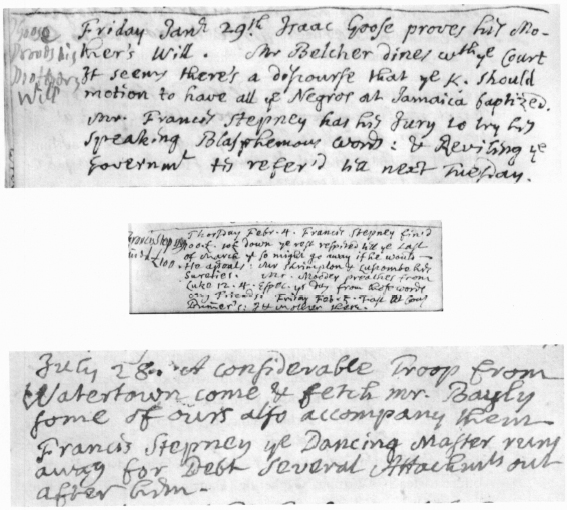
Cotton Mather still resisted. In his funeral sermon in 1708 for Ezekiel Cheever, the highly respected principal of the Boston Latin School, he urged parents to feed the minds of their children and not just “teach them some Trifle at a Dancing School.” In 1711 he was troubled when he learned of “a Number of young people, of both Sexes, belonging, many of them, to my Flock, who have had on Christmas-night, this last week, a Frolick, a revelling Feast, and Ball.”26
Among the more noted dancing teachers in Boston in the first half of the eighteenth century were Edward Enstone, George Brownell, and Peter Pelham. (For a list of dancing and music masters known to have been in Boston, see Appendix C.) Enstone was brought to Boston in late 1714 through a contract with the Anglicans to be the organist at King’s Chapel. The church records show that they based Enstone’s salary on the expectation that he would also teach dancing. Although the selectmen refused to grant him permission to keep “a School of Manners or Dancing School,” he must have sensed that it would be proper to proceed, for his advertisement in the Boston News-Letter, April 16, 1716, states the existence of his school in Sudbury Street, near the Orange Tree Inn (see fig. 276 in this volume).
Sewall, on November 29, 1716, notes “that a Ball was designed at Enston’s in the evening.” Enstone moved to King Street in September 1720 “where young Ladies may be accomodated [sic] with Boarding and taught all sorts of Needlework with Musicke and Dancing.” The daughters of Thomas Hutchinson were students of Enstone.27
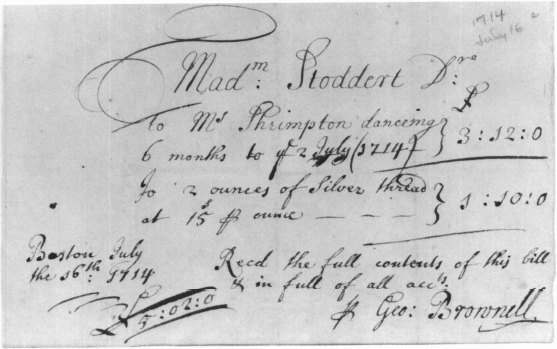
Fig. 384. ms bill for dancing lessons from George Brownell, Boston, 1714.
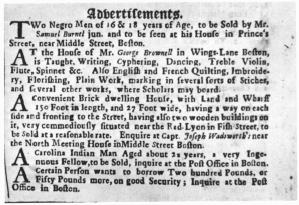
Fig. 385. Advertisement from the Boston News-Letter, March 2, 1713.
George Brownell was teaching dance before Enstone arrived, as the 1714 bill to “Madame Stoddert” indicates (fig. 384) and as does his 1713 advertisement in the Boston News-Letter. In his advertisement he offers to teach “Writing, Cyphering, Dancing, Treble Violin, Flute, Spinet” plus several types of stitchery (fig. 385; see also fig. 242 in this volume). One of Brownell’s most famous students, though not for dancing, was Benjamin Franklin. When Franklin’s father could no longer afford to send him to grammar school, he sent him at age nine for one year (as Franklin reports in his autobiography) “to a school for writing and arithmetic, kept by a then famous man, Mr. George Brownell, very successful in his profession generally, and that by mild, encouraging methods. Under him i acquired fair writing pretty soon, but i failed in arithmetic, and made no progress in it.” From 1721 to 1734 Brownell taught the same subjects in New York, returning to Boston to teach until about 1738 except for a brief sojourn in Philadelphia in early 1736.28
Fig. 386. Mezzotint by Peter Pelham, Boston, 1728.
Peter Pelham came to Boston in 1727 from London. He first came to notice for his mezzotint print of his portrait of Cotton Mather, who had died on February 13, 1728 (fig. 386). By 1730 he was known as a dancing teacher, by 1731, as organizer of concerts as well. From 1734 to 1737 he lived in Newport; on his return to Boston he again taught dancing and other subjects. Pelham should be remembered also as the father of the musician Peter Pelham (organist at Trinity Church in Boston and at Bruton Parish Church in Williamsburg) and step-father of John Singleton Copley.29
The dances taught by these masters would have included those found in Playford’s many editions as well as other dance instruction books, mostly English in origin. An English dance manual, Wright’s Compleat Collection of Celebrated Country Dances published in London about 1742, was in the possession of Richard Otto Bayer in Salem by 1749 (fig. 387; for the title page, see vol. I of this book, fig. 3 in Van Cleef and Keller, “Selected American Country Dances and Their English Sources”). On the outer page of the Salem copy are two later autographs, “Thomas Oliver Book” and “E. A. Holyoke’s 1755,” which indicates that the book must have been passed on to others, perhaps in a dancing class. It is interesting to note that Judith Holyoke, daughter of Edward A. Hol-yoke, one of the owners, married in 1795 William Turner, Jr., a dancing master of Boston. William represented the third generation of Turner dancing masters in Boston. William’s father, William Turner, Sr. (1745–1792), had taken over the dancing school of his father, Ephraim Turner (1708–1765), who had begun his Boston dancing school in 1738 in the house “. . . where mr Brownell lately kept his School, who is since Deceased. . . .” (See Appendix C for further information on the Turners.)
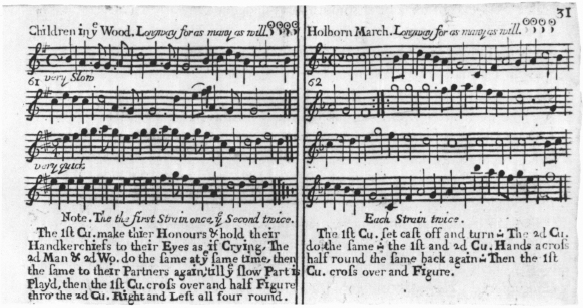
Fig. 387. Music and instructions for two dances from Wright’s Compleat Collection of Celebrated Country Dances, London, ca. 1742.
Wright’s Compleat Collection includes examples of the longways dance, “for as many as will.” (See vol. i of this book, fig. 4 in Van Cleef and Keller for a depiction of the longways dance.) This type of dance was also known as the “country dance.” In this dance everyone dances with everyone else; questions of precedence and rank were usually avoided. Although the more elegant French dances were retained for the beginning of an entertainment, the longways dance, jigs, and reels took up most of an evening.30
Fig. 388. Title page, 1698.
Fig. 389. Etching by George Cruickshank, published by Thomas McLean, London, 1835.
Throughout the eighteenth century, dancers must have moved with vigor. Richard Hall, sent from Barbados to Boston for his schooling, was reported in 1718 by his grandmother as a good boy who “minds his School and Latin and Dancing”—and who wore out “12 paire of shoes a year.” Hall may have danced with the flourishes used later in the century when “it was then the custom to take all the steps in each of the different dances, and to introduce the ‘Pigeon’s Wing’ or some other flourish, as often as possible; dancers at that time often boasted that they ‘put in so much work’ as to wear out a pair of dancing slippers in one evening.” John Adams in 1760 describes the dancing of Zab Howard at Weymouth, who “has had the Reputation, for at least fifteen years, of the best Dancer in the World in these Towns. Several attempted, but none could equal him, in nimbleness of heels.”31

Fig. 390a. Kit violin by Christ. Phil. Blumenshagen, Hanover, Germany, ca. 1750.

Fig. 390b. Kit bow, Europe, ? eighteenth century.
The title page of the 1698 edition of Playford might provide some indication of how dancing schools were conducted in the late seventeenth century (fig. 388). Four couples dance to music provided by violins although the number and placement of violinists on the title page were undoubtedly chosen for artistic balance (Cupid, in the center, is an alteration of the lute-playing Cupid found on the title page of the first edition of 1651). A more common scene would have had the dancing teacher playing on a fiddle or kit, not unlike the nineteenth-century dancing master shown by Cruikshank (fig. 389).
The dancing master’s kit was a small-sized violin that could be easily carried in the master’s coat pocket. The kit, sometimes called a pochette, shown here was made by Christian Phil. Blumenshagen in 1753 (fig. 390). Because of the smaller size, a kit was tuned either a fourth or octave above a regular violin. A “kitt” is listed in the inventory of Jonathan Hamilton of Middlesex County in the 1670s. (For a list of musical instruments cited in household inventories for the Massachusetts counties of Suffolk and Middlesex, see Table I of “Social Music, Musicians, and Their Musical Instruments in and Around Colonial Boston,” by Barbara Lambert in this volume.)
A dancing manual published in Northampton, Massachusetts, in 1794 by an itinerant dancing master, John Griffiths, includes a section at the end on “instances of ill manners to be carefully avoided by youth of both sexes.” The list of ill manners to avoid suggests a setting less urbane than the Playford “Dancing Schoole.” Bringing dancing to such rural areas as Northampton, Greenfield, and Brookfield, Griffiths spoke from experience when he forbade “throwing things instead of handing them, and crowding others in a passage or running against their elbows” as well as “surliness of all kinds, especially on receiving a compliment.” Griffiths’ dancing publications are important not only for indicating the social behavior of his students but also and more importantly for recording the cotillions and country dances then popular in America (fig. 391). His 1794 edition was republished and pirated for almost a decade.32
In the city, though, dancing classes, parties, and assemblies were the height of fashion. The illustration from the Playford title page of 1725 (fig. 392) indicates the type of fancy dress, wigs, and the genteel setting of such events.
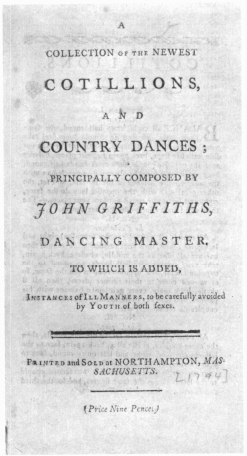
Fig. 391. Title page, 1794.
Even children held dancing parties. In 1719 when Sarah Hall at age eight came from Barbados with her own maid to join her brother Richard for Boston schooling, she gave a child’s dancing party at which she served sweetmeats left over from her sea provisions. Dancing remained an important activity in the lives of Sarah Hall and her sister Martha. They both married members of the Wentworth family of New Hampshire. Sir John Wentworth, nephew of Sarah Hall Wentworth and provincial governor of New Hampshire between 1767 and 1775, built a great dancing room in his mansion at Wolfeborough in 1770. The Went-worths intended to use the room, for in a letter to England in 1769 Wentworth requested two footmen “that can play well on a French horn also if they can, or one of them play on a violin; and will also serve me five years faithfully in my family.” After listing various benefits and qualifications, Wentworth adds that “neither is it essential that their musical execution should be of the first rate, as we are not great Connosseurs [sic] in that way.”33
Fig. 392. Title page, [1725].
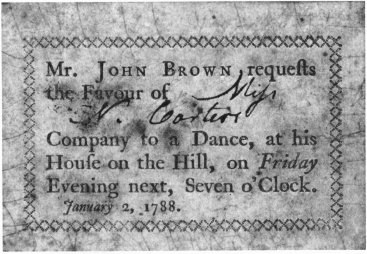
Fig. 393. Printed invitation ticket to a dance.
Many prominent New England families enjoyed dancing. Dances at private residences were by invitation, sometimes in the form of a printed card. One such invitation from John Brown to Miss Nancy Carter in Providence in 1788 exists at the John Carter Brown Library (fig. 393). Some houses were fitted with ballrooms, some with galleries for orchestras. Capt. Francis Goelet notes on a visit to Salem on October 20, 1750, a tour of the country home of Col. William Browne (for his portrait, see fig. 258 in this volume), who built it for his first wife, daughter of Governor William Burnet. The grand hall was designed for an assembly or ballroom with a gallery for musicians. An orchestra playing from such a balcony probably included a combination of violin and one or more wind instruments (flute, horn, oboe, bassoon), as suggested by the 1725 Playford (see fig. 392) and the Wentworth letter. A frequent combination was fiddles and flute.34
Fig. 394. Broadside, ca. 1750.
The public assemblies and dancing classes, though not as exclusive as private parties, were events of great moment to the fashionable society of Boston. The women dressed in their finest clothes which were not unlike those described in New-England Lasses, a mid-eighteenth-century broadside with verses well suited for singing (shown in fig. 394).
In a long newspaper commentary on the love of dancing and finery, an unidentified writer in the Boston Gazette (November 13, 1732) first gives a clue as to how the dancing events were publicized: “Passing by the Town-House on Saturday the 11th of this Month, a piece of Paper was slipt into my Hand, giving notice of an Entertainment of Musick and Dancing (call’d by the fashionable name of an Assembly) to be held at Mr. Pelhams Dancing School on the Thursday following, &c. which Entertainment, as I am inform’d is to be repeated Monthly, for the benefit of Gentlemen and Ladies.”
After invoking the piety of their forefathers and describing the present generation as “too delicate to follow their sober Rules, and wise Maxims, and crying out for Musick, Balls, and Assemblies, like Children for their Bells and Rattles,” the writer points out the vanity in the activity (a vanity the author of An Arrow warned against):
In vain will our Legislature provide wholesome Laws to suppress this Epidemical profuseness. In vain will our Ministers preach Charity, Moderation and Humility, to an Audience, whose thoughts are ingaged in Scenes of Splendour and Magnificence, and whose Time and Money are consumed in Dress and Dancing. In vain will Masters secure their Treasure (the fruit of long toil and Industry) with Locks and Bolts, while their Wives and Daughters are invited to Balls & Assemblies, where a great part of the pleasure consists in being gaz’d at, and applauded, for the richness of their Cloaths, and the elegancy of this Fancy. This is laying a foundation for Pride, vain Emulation, Envy, & Prodigality.
The last sentences in the article reveal what might be the real reason for writing it; a long-suffering husband and father has his chance in this tongue-in-cheek piece to reply to the pressures of his lovely ladies: “For what single Person tho’ ever so Prudent or Stouthearted, durst deny a beloved Wife, or favorite Daughter, the Liberty of a Pleasure indulged to all their Neighbours and Acquaintance? And if Madam & Miss are not suffered to shake their Heels Abroad, they will make House & Family shake at Home.”
Dr. Alexander Hamilton of Maryland, who traveled to Boston in 1744, wrote approvingly of the Boston scene: “Assemblies of the gayer sort are here; the gentlemen and ladys meeting almost every week at consorts of musick and balls. I was present at two or three such and saw as fine a ring of ladys, as good dancing, and heard musick as elegant as I had been witness to anywhere.”35
Throughout the century, some leading citizens enjoyed dancing, some did not. Robert Treat Paine’s diary includes several notations about attending dancing school in 1745 and 1746. Harrison Gray Otis (Harvard class of 1783 and later senator from Massachusetts) loved dancing so much that he and several friends formed in 1785 the “Sans Souci Club.” It met every two weeks at the Concert Hall for card playing and dancing. Samuel Adams attacked the club for its luxury and pernicious dissipation. After a heated newspaper battle, the editor of the Massachusetts Centinel, Benjamin Russell, published a pamphlet about the club entitled San Souci, alias Free and Easy; Or, an Evening’s Peep into a polite Circle.36
Samuel’s cousin, John Adams, was not himself a dancer. About fifteen years before his cousin’s attack he wrote in his diary in 1771:
I never knew a good Dancer good for any Thing else. I have known several Men of Sense and Learning who could Dance. Otis, Sewal, Pain, but none of them shone that Way, and neither of em had the more Sense or Learning, or Virtue for it.
I would not however conclude, peremptorily against sending sons or Daughters to dancing, or Fencing, or Musick, but had much rather they should be ignorant of em all than fond of any one of em.37
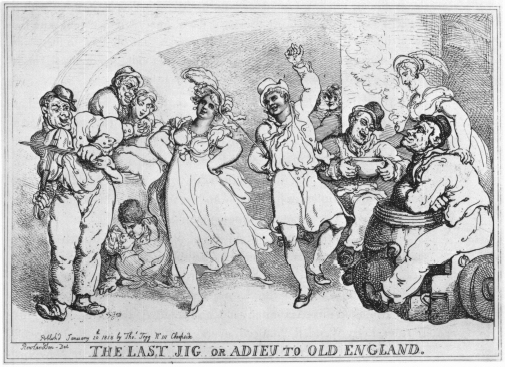
Fig. 395. Etching by Thomas Rowlandson, London, 1818.
taverns
Dancing was not reserved for dancing school or fancy balls and assemblies. In spite of the earlier restrictions against dancing in ordinaries or taverns, these establishments were the scene of many hours of entertainment not dissimilar to a caricature by Thomas Rowlandson (fig. 395).
John Adams himself recounts the jollity following a ship launching on November 25, 1760. With a few friends he went to smoke a pipe at Benjamin Thayer’s tavern in Weymouth, where
Every Room, Kitchen, Chamber was crowded with People. Negroes with a riddle. Young fellows and Girls dancing in the Chamber as if they would kick the floor thro. . . . Fiddling and dancing of both sexes, and all Ages, in the lower Room, singing, dancing, fiddling, drinking flip and toddy, and drams.—This is the Riot and Revelling of Taverns and of Thayers frolicks.38
A frolick in Charlestown earlier in the century must have included as much dancing, for the Boston Gazette, September 11–18, 1727, issued a notice that the sponsor, Mrs. Whyers of Charlestown, wanted the “Set Company that went upon a Frolick” at her place on September 12 “to pay the Just Reckoning that was then due to the House. And likewise to pay the honest Fidler for his trouble and wearing out of his strings, for he gathered but 12 d. among the whole Company that night.”
A turtle frolic became a special event of the well-to-do when West India turtles, towed astern from the Caribbean, arrived in port. In 1750 Francis Goelet attended near Boston a turtle dinner with forty gentlemen (returning home at five in the morning) and a few days later he went to a turtle frolick in mixed company in Cambridge. At the latter, he and his partner, Betty Wendell, “danced several Minuits and Country Dances.” An account of a turtle frolic in 1752 on Goat Island near Newport reports some specific tunes danced: “Pea Straw,” “Faithful Shepherd,” and “Arcadian Nuptials.”39
Sleighing parties also provided much enjoyment for colonial Americans. Harrison Gray Otis recounted with pleasure the many happy evenings he spent with his friends riding by moonlight in open sleighs to such places as Ames Tavern in Dedham, the Punch Bowl in Brookline, or Porter’s in Cambridge. Hiring their own fiddlers, who sometimes played while on horseback, they drank mulled wine, danced country dances, and paired off for the ride home.
The ride home included the singing of ballads and other merriment. The return trip must have disturbed some citizens, for in 1775 the selectmen of Boston forbade the “driving of Slays thro’ the Town, with beating of Drums and other noises, at unseasonable Times of the Night.” Earlier in the century Jonathan Edwards had disapproved of sleigh riding in Northampton.40
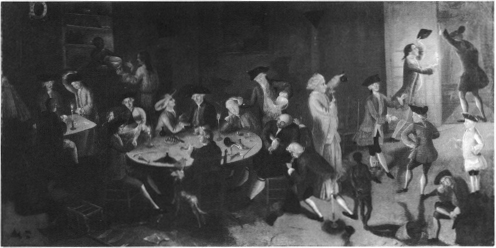
Fig. 396. Sea Captains Carousing in Surinam, a painting by John Greenwood, North America, 1758.
Commencement day at Harvard was one of the most important public events of the year and crowds gathered to celebrate the day. John Rowe, a wealthy Boston merchant, notes in his diary an elaborate post-commencement party on July 16, 1772, given by his brother-in-law Ralph Inman in honor of the graduation of Inman’s son George. At his estate east of Cambridge, Inman “had Three hundred forty-seven Gentlemen and Ladies dined. Two hundred and ten at one Table.” The guests included the families of the governor, lieutenant governor, the admiral, “and all the Remainder, Gentlemen and Ladies of Character and Reputation.” After the dinner they went to the Town House in Cambridge for dancing. A gathering of most of these same guests would not have been possible two years later, for the governor, Thomas Hutchinson, and several other loyalists had left similarly elegant and beloved estates for England.41
Fig. 397. Fiddler’s throne from the Mack Tavern, Deerfield, New Hampshire, early nineteenth century.
Fig. 398. Photograph of the fiddler’s throne in situ, Mack Tavern, Deerfield, New Hampshire, late nineteenth or early twentieth century.
While many of the dancing scenes cited in taverns and at public occasions involve the gentry, Goelet gives some clue about the activities of the less wealthy. On the return from his turtle dinner in 1750, singing with his gentlemen friends who were
Exceeding Merry untill 3 a Clock in the Morning, from whence Went upon the Rake, Going Past the Commons in Our way Home, Surprised a Compy Country Young Men and Women with a Violin at A Tavern Danceing and makeing Merry, upon Our Ent§ the house they Young Women Fled, we took Posession of the Room, havg the Fidler and the Young man with us with the Keg of Sugard Dram, we where very Merry, from thence went to Mr. Jacob Wendells where we where Obliged to Drink Punch and Wine, and abt 5 in the morng made our Exeit and to Bed.42
How often “Country Young Men and Women” danced until three in taverns is unknown, but one could well understand the hasty exit of the young women upon the arrival of a crowd of “Exceeding Merry” men out on the town. The mid-eighteenth-century painting Sea Captains Carousing in Surinam depicts a scene not unlike that just described by Goelet. Painted by former Boston resident, John Greenwood, it could well include some of Greenwood’s New England mariner friends (fig. 396).
From the instances cited, the only musician mentioned is the fiddler. From none of the descriptions cited is it clear where the musicians sat or stood. The vigor and chaos described by Adams suggests that the fiddler ought to be set apart from the dancing crowd. One solution for this was a fiddler’s throne, built for the Mack Tavern in Deerfield, New Hampshire, about 1810 (fig. 397). The throne, made of pine, is 97¼ inches high, just high enough to meet the molding near the ceiling of the tavern (fig. 398). The throne was originally recessed into the wall of the tavern ballroom to provide even more distance between the dancers and musician. The fiddler probably played sitting down; the seat on the platform is formed with a slight rise in the center for more comfortable sitting.
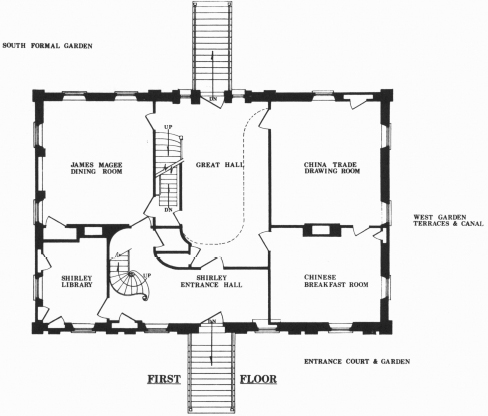
Fig. 399. First floor ground plan showing super-imposed location of the second storey musicians’ gallery, above the great hall of the Shirley-Eustis House, Roxbury, Massachusetts, ca. 1746.
Although other fiddler’s thrones have not been discovered, musicians’ galleries were sometimes built into tavern ballrooms and private homes. Already cited is the balcony admired by Goelet in the house of William Browne of Salem. A later Salem building, Hamilton Hall, 1805–1807, designed by Samuel McIntire, also includes a gallery for musicians. Shirley Place, built in Roxbury by the royally appointed governor, William Shirley, shortly after his return from the first battle at Louis-bourg in 1745, and occupied in the early nineteenth century by William Eustis, contained a large hall for state receptions, banquets, and balls and a musicians’ balcony. Just what the formal “saloon” and musicians’ gallery looked like when the Shirleys occupied the house is not certain. However, the architectural drawings based on the house’s physical evidence reconstruct its earlier appearance (fig. 399).43
Architects planned for dancing in other building details. Some taverns were fitted with movable walls that could be swung up to create a larger meeting or ballroom. When the entertainment was over, the innkeeper could move the wall back to provide him with smaller meeting or bedrooms. One example of this type of partition can be found at the Keeler Tavern in Ridgefield, Connecticut, which was built in the 1760s and converted to a tavern in 1772 by Timothy Keeler, Jr. In this tavern the wall between two of the bedrooms was hinged and the entire wall with doorway was raised and supported by counterweights to make a single large room. One of the walls includes an oval triangular niche that may have been used for storing tricorn hats—or even for providing the fiddler with a seat. The Pomeroy Stage House of 1801 on the Boston Turnpike in Coventry, Connecticut, is another example of a public house with swinging walls. Hooked to the ceiling, two paneled walls, each eight feet high by fourteen feet wide, when lowered divide the forty-two-foot-long open room with two fireplaces into three rooms (fig. 400).
Ballrooms were usually built on the second or third floors of taverns. In some of the later ballrooms, the floors were built of supple woods like spruce, pine, or magnolia in a special construction that allowed the floors to spring. Accounts of dancers in the nineteenth century confirm their enjoyment of the bounce and swing provided by the rhythm of these springing floors. The spring was created by the lack of supports beneath the ballroom floor and the use of springy woods for floor joists (fig. 401). Examples of these floors still exist at Hamilton Hall in Salem, the Wayside Inn in Sudbury, the Exchange Hall in South Acton, and the Ben Smith Tavern in Hadley. At the King Hooper House in Marblehead and the Jones Tavern in Weston, the floors have been “tied” or fastened so that they no longer spring.44
Fig. 400a. Forty-two foot long ballroom with its two swinging-divider walls pinned to ceiling of Pomeroy Stage House, Coventry, Connecticut, 1801.
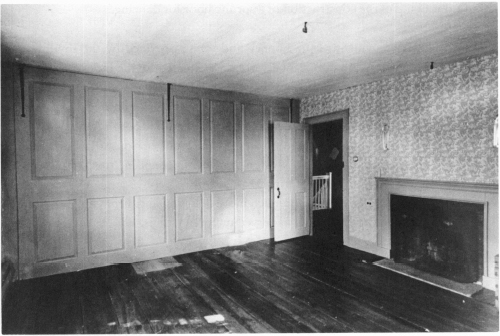
Fig. 400b. Lowered swinging-divider wall in ballroom of Pomeroy Stage House, Coventry, Connecticut, 1801.
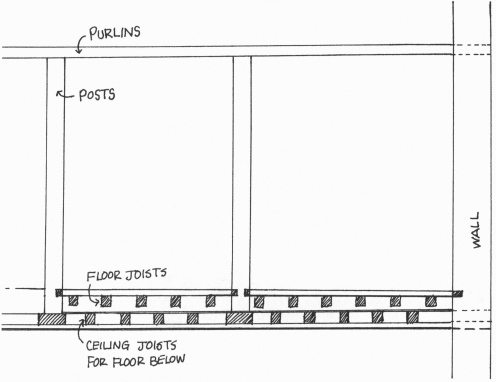
Fig. 401. Drawing of the construction of a sprung floor for dancing.
But taverns existed for much more than dancing. From the beginning of the settlements, taverns served many functions. For the traveler they provided food, drink, and lodging. For the local citizens, they served as the hub of the city, dispensing warmth after a chilling morning in the meetinghouse; food and drink; news of events; mail; rooms for club meetings; and later entertainments ranging from fireworks, Punch and Judy shows, and waxworks to theater productions and the highly successful creation of James Bridges, the “Elaborate and Matchless Pile of Art, called the Microcosm or the World in Miniature,” complete with a reproduction of a Greek temple, celestial phenomena, music, and landscapes.45
The town officials carefully regulated the taverns, for it was there that most of the liquors were dispensed. The colonists were heavy drinkers: drinks such as rum, punch, wine, cider, and beer were consumed in great quantities.46 All classes—whether gentry, clergy, tradesmen, or seamen—needed an innkeeper of character presiding in the taproom. For instance, the Boston Town Records of October 29, 1705, report that the selectmen rejected Samuel Kendall’s petition “to be an Inholder at the House comonly Called ye Green Dragon” when a check of his character showed that since “he hath Lately been Convict of Keeping bad orders in his House they are of Opinion that he is not a Sutable person to be admitted to keep a Tavern in this town.” From Samuel Kendall’s inventory (fig. 402) entered on August 20, 1711, it is not clear what occupation he followed before his death, although listings of large quantities of silk and a quantity “to payd upon the Safe arrivall of ye Ship Mary Galley” at Barbados suggest that he was in trade. Two items, “1 punch bowle” and “1 fidle,” suggest an association with taverns possibly at an earlier time.47
Fig. 402. Page from the household inventory of Samuel Kendall, Boston, 1711.
Fig. 403. Pen and wash drawing by John Johnson, Boston, 1773.
The Green Dragon, located at Union and Hanover Street, was one of several taverns frequented by famous travelers and citizens throughout the eighteenth century. John Hancock often went there for dinners. On one occasion, Pope’s Day, November 5, 1774, an attempt was made there to reconcile the feuding North End and South End residents who traditionally mobbed each other on that day. In 1765 the Green Dragon was conveyed to the St. Andrew’s Lodge of Free Masons. The wash and pen drawing of the tavern by John Johnson dated 1773 has a later inscription that indicates that the tavern was also used as a meeting place for planners of the Boston Tea Party (fig. 403).48
Other establishments such as the Bunch of Grapes Tavern and the British Coffee House served as meeting places for merchant clubs, Masonic lodges, and other social groups. Dinners, dances, and evenings of political and economic talk as well as merriment were frequent. The public houses were many, and gentleman, merchant, and sailor could find one where the drink and company were congenial.
secular singing
Ordinances from the seventeenth century suggest that even in the early days, taverns were the scene of robust singing. On May 18, 1664, Massachusetts “younger sort” were reprimanded for “taking their oppertunity, by meeting together in places of publick entertainment, to corrupt one another by their vnciuill &: wanton carriages, rudely singing & making a noyse, to the disturbance of the family & other guests.”49
What songs they were singing is not specified, but it could have been ballads and songs popular in England at that time. Two Harvard graduates, Seaborn Cotton (A.B. 1651) and Elnathan Chauncy (A.B. 1661), copied words of well-known English ballads into their commonplace books. Cotton, eldest son of the esteemed John Cotton and later himself minister at Hampton, New Hampshire, copied out The Love-sick Maid; or Cordelia’s Lamentation for the Absence of Her Gerhard. The Last Lamentation of the Languishing Squire; or Love Overcomes All Things. and Two Faithful Lovers (fig. 404). Chauncy copied lines from the last as well as many lines referring to love and feminine beauty from Spenser, Herrick, and Sidney.50
A journal kept by Margaret Smith in Massachusetts in 1678–1679 has several entries referring to ballads. She mentioned that “the excellent Mr. Wilson made a brave Ballad on the hanging, which I have heard the Boys in the street sing many a time.”51
Fig. 404. Two ballad verses from the ms Commonplace Book of Seaborn Cotton, Cambridge, Massachusetts, and Hampton, New Hampshire, ca. 1648–1686.
Songs of love copied by college students and songs recording topical events composed and sung by local talent were but two of the types of songs circulated in colonial times. In addition, verses dealing with patriotic, humorous, or religious themes were circulated widely through broadside printings.
Cotton Mather was concerned about the spread of these songs. In his diary for September 27, 1713, he notes, “I am informed, that the Minds and Manners of many People about the Countrey are much corrupted by foolish Songs and Ballads, which the Hawkers and Pedlars carry into all parts of the Countrey. By way of Antidote, I would procure poetical Composures full of Piety, and such as may have a Tendency to advance Truth and Goodness, to be published and scattered into all Corners of the Land. . . .” The English evangelist, George Whitefield, is said to have accomplished a shift from “idle songs and ballads” to “psalms, hymns and spiritual songs” in his first trip in 1739–1740.52
The religious verses written by Samuel Sewall (fig. 405) would have been more to the liking of Mather and Whitefield. Written on the occasion of the new year and the new century, they appear in his diary in a slightly different version from the printed broadside (for the latter see the first volume of this book, figs. 111 and 112). In long meter, the stanzas can be sung to such tunes as “Old Hundred” and “Psalm liii.”
But the secular songs remained popular. Capt. Francis Goelet, grounded for ship repairs in Boston from September 29 to November 7, 1750, spent many evenings singing with the gentlemen of Boston. For instance, on October 6, he and sixteen gentlemen went to dinner at Mr. Richardson’s tavern in Cambridge, “Drank Plentifully. Toasted the Ladies Singing &c. abt Dusk the Evening returned to Boston, and Spent the Evening at Capt McGlaughlin’s with some Ladies at Cards.”
On October 10 after attending a Masonic meeting they went “to Capt. Wendells where was a Large Compy Gentn Drinking Toast and Singing Songs, the Compy Broke up abt 3 in the Morning.” On October 24 after the Masonic meeting again he went to Thomas Bulfinch’s “where found a Large Compy Gentn we Supd in a Verry Grand manner and where Exceeding Merry Drinking Toast and Singg Songs almost to 3 in the Morning broke up.” On October 30, the king’s birthday, he spent the evening at Thomas Pierson’s, “Singing Songs Drinking Loyall Toasts &c. being Joynd by the Ladies, who shewd their Loyalty by accompy us Singing &c.” On November 1, Thanksgiving Day, “its Calld their Christmas,” they drank and “Sung Our Songs &c. till morng.” On November 3, a group of gentlemen sang and drank at Mr. Heylegher’s (Heileger).
Fig. 405. Entry from ms Diary of Samuel Sewall (1652–1730) of Boston, for 1701.
To repay all his social debts at the end of his stay, Goelet entertained several gentlemen at Mrs. Grace’s. “Gave them a Good Supper with Wine and Arack Punch Galore, where Exceeding Merry Drinkg Toasts Singing roareing &c. untill Morning when Could Scarce see One another being Blinded by the Wine Arack &c. we where in all abt 20 in Compy.”53
At the 1760 tavern scene already cited, John Adams gazed and listened all afternoon at the dancing and singing of Zab Howard. “When he first began, his Behavior and Speeches were softly silly, but as his Blood grew warm by motion and Liquor, he grew droll. He caught a Girl and danced a Gigg with her, and then led her to one side of the Ring and said, ‘Stand there, I call for you by and by.’ This was spoke comically enough, and raised a loud laugh. He caught another girl, with light Hair, and a Patch on her Chin, and held her by the Hand while he sung a song, describing her as he said. This tickled the Girls Vanity, for the song which he applied to her described a very fine Girl indeed.”54
During the three years before and during the Revolution, many songs relating to liberty, especially John Dickinson’s Liberty Song, were sung at various gatherings of the Sons of Liberty (vol. I, figs. 79, 80, 166, and 167). An American sailor, held prisoner at Forton Prison in England from June 1777 to the middle of 1779, recorded the words of fifty-eight songs presumably sung by him and his fellow sailors.55
Harrison Gray Otis remembered singing ballads on his sleighing parties. John Quincy Adams, while studying law at Newburyport notes in his diary for January 3, 1788: “Pass’d the evening at Little’s in Newbury. A Mr. Coffin, who graduated two years ago at Harvard, was there. We spent our time in sociable chat and in singing; not such unmeaning, insignificant songs as those with which we killed our time last evening, but good, jovial, expressive songs such as we sang at College, ‘when mirth and jollity prevail’d.’ One evening of this kind gives me more real satisfaction than fifty pass’d in a company of girls (I beg their pardon).”56
Just what John Quincy Adams meant by “unmeaning, insignificant songs” in comparison with “good, jovial, expressive songs” is not clear, although some years earlier the German Lutheran cleric Henry Melchior Muhlenberg observed a difference. In his journal for May 7, 1752, after a stagecoach ride filled with shouting and singing on the way from Bordentown to New York, he wrote: “The English people have a kind of songs which are set to melodic music and describe all sorts of heroes and feats of arms on land and sea. Respectable people sing them as a pastime, and regard it as a serious invasion of their liberty if one protests against these songs, etc. Now, if one rebukes them on account of their amorous songs, they believe they can justify themselves by referring to these songs about heroes. The musical settings and melodies of these songs of heroic deeds are very similar to those which our Germans use for church music.”57
broadsides and songsters
One manner of circulating these songs was through printed broadsides. A ballad like The Lawer’s [sic] Pedigree sung to the tune “Our Polly is a sad slut” could well have been enjoyed by Goelet and his friends during their merry evenings. The version shown in volume I, figures 228 and 229, is said to have been printed in 1755 from the first type handled by Isaiah Thomas, a leading Massachusetts printer, when he was six years old.
An example of heroic action is found in The Grecian Daughter; or, an example of a Virtuous Wife (see the first volume of this book, fig. 192a; for another version of this broadside and the tune to sing these verses to, see the following figs. 192b and c). The exceptional woodcuts illustrating these broadsides set them apart from other broadsides of the period. The verses can be sung to the tune “Chevy chase,” a tune so familiar that Benjamin Franklin cited it in the letter which follows as an example for his young brother to emulate.
Portions of Franklin’s letter to his brother Peter in 1765 reveal his observations on the creation of a successful song. Peter, in Newport, had written some verses ridiculing foppery and sent them to Franklin in London to have the poetry set to a new tune by his brother’s musical friends there. Franklin wrote in reply,
Dear Brother: I like your ballad and I think it well adapted for your purpose of discountenancing expensive foppery and encouraging industry and frugality. If you can get it generally sung in your country, it may probably have a good deal of the effect you hope and expect from it. But as you aimed at making it general, I wonder you chose so uncommon a measure in poetry that none of the tunes in common use will suit it. Had you fitted it to an old one, well known, it must have spread much faster than I doubt it will do from the best new tune we can get composed for it. I think, too, that if you had given it to some country girl in the heart of Massachusetts, who has never heard any other than psalm tunes or Chevy Chase, the Children in the Woods, the Spanish Lady, and such old, simple ditties, but has naturally a good ear, she might more probably have made a pleasing popular tune for you than any of the masters here; and more proper to the purpose, which would be answered if every word could, as it is sung, be understood by all that hear it. . . .58
The Grecian Daughter set to a familiar old ditty was a favorite heroic song as was The Death of Gen. Wolfe. In the middle decades of the eighteenth century, the English and the colonists were fighting the French. In the important battle at Quebec in 1759, the British won the fight, but the eminent Gen. Wolfe died from battle wounds. His story was immediately set to verse and sung everywhere. A popular eighteenth-century broadside version included the ballad with a second more elaborate poem written by Thomas Paine around 1759 (see vol. I of this book, figs. 152–154). A tune “General Wolfe” remained popular throughout the century and is even found copied out for three instruments by John Quincy Adams in Newburyport in 1787 for playing on his flute with two other musicians (fig. 406; for other “General Wolfe” tunes, see vol. I of this book, figs. 155 and 156).
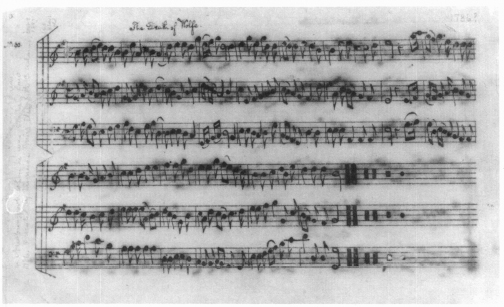
Fig. 406. ms trio harmonized and/or copied by John Quincy Adams, Newburyport, Massachusetts, 1786.
While many of the songs and ballads relating to the events surrounding the Revolution appeared first in the newspapers, several were also printed as broadsides. One of the most popular was The Liberty Song, the text written by John Dickinson of Philadelphia in 1768. Set to the tune of “Heart of oak,” it was prominently sung by the leading Sons of Liberty at Nathaniel Barber’s insurance office on August 1, 1768, in Boston. (See vol. I of this book, figs. 79 and 80, and also 166 and 167 and their accompanying texts for other discussions of The Liberty Song.) Paul Revere made a fine silver bowl for the occasion to honor the Massachusetts legislators’ refusal to bow to the embargo act (see vol. i again, fig. 170). John Rowe records the event in his diary but he talks of the “Silver Bowl” and not of the singing of the eighteen men present. The Boston Gazette for August 8, 1768, tells more of the forty-five toasts drunk and the new song with its opening stanza, “Come, join hand in hand, brave Americans all,” and its rousing chorus, “In Freedom we’re born, and in Freedom we’ll live.”59
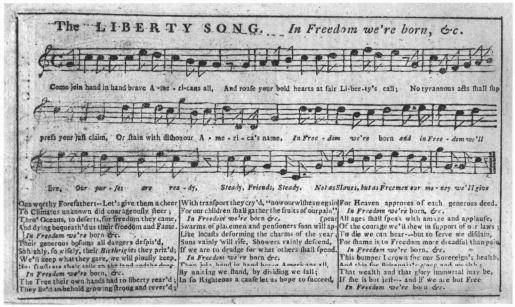
Fig. 407. A broadside song compiled by John Dickinson, set to a tune by William Boyce, from Bickerstaff, Boston Almanack, Boston, 1769.
Unlike most of the popular songs, this one was published with both the words and music. Mein and Fleeming in Boston advertised it in the Boston Chronicle (August 29, 1768) as “Neatly engraved on copperplate, the size of half a sheet of paper, set to music for the voice, and to which is also added, a set of notes adapted to the German flute and violin” (see vol. i, fig. 167). They published it again in Bickerstaffs Boston Almanack of 1769 (fig. 407). A Tory parody of the song, beginning “Come, shake your dull Noddles, ye Pumpkins and bawl,” appeared in the Boston Gazette for September 26, 1768 (see vol. I of this book, fig. 81). The patriot Dr. Benjamin Church published The Parody Parodized, beginning “Come swallow your bumpers, ye Tories, and roar,” in the Almanack of 1770 printed by Edes and Gill (see vol. I again, figs. 168 and 82).60
Another favorite patriotic broadside was the one marking the Boston Tea Party of December 16, 1773 (fig. 408). The verse to this commentary on the resistance to the one remaining duty imposed by the Townshend Act appeared in newspapers in early 1774 and was printed as a broadside later. Many versions of “Yankee Doodle” were printed, one of which is reproduced as figure 378. At the end of the century, the launching of ships to protect the “Sons of Columbia” from the intrusion of the French was set down in verse. A large broadside commemorates the launching of the Merrimack in 1798 (fig. 409).
The songster provided another source for words to popular tunes. Taking for granted that the prospective buyers knew the tunes, publishers included song verses and their parodies in books labeled “songsters” as well as in books printed for other purposes. (For more detail on the subject see Irving Lowens, “Eighteenth-Century Massachusetts Songsters” in this volume.)
An early collection of songster verses printed in America appears at the back of Masonic publications. Benjamin Franklin published The Constitution of the Free-Masons (with songs bound in at the end) as early as 1734 in Philadelphia. No doubt Goelet and his Masonic friends sang many songs printed in Masonic volumes in their post-lodge gatherings. Masonic songs were also bound in general collections, like The Columbian Songster and Freemason’s Pocket Companion, printed by J. Melcher for S. Larkin in Portsmouth, New Hampshire, in 1798 (fig. 410). The publishers label it “a collection of the newest and most celebrated sentimental, convivial, humorous, satirical, pastoral, hunting, sea, and masonic songs, being the largest and best collection ever published in America.”
Fig. 408. Broadside ballad, Boston, ? 1774.
Fig. 409. Broadside ballad, Boston, ? 1798.
Fig. 410. Songster title page, [1798].
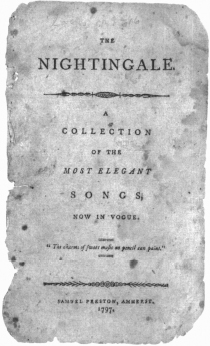
Fig. 411. Songster title page, 1797.
Other songster collections have titles of birds: The Sky Lark: or Gentlemen and ladies’ complete songster (Worcester: Isaiah Thomas, 1795, and again in 1797; see figs. 309 and 312, in this volume) and The Nightingale: A collection of the most elegant songs (Amherst [N.H.]: Samuel Preston, 1797) (fig. 411). Once the theater became established in Boston in the early 1790s, a songster appeared with tunes heard on the stage: The Theatrical Songster; or, Amusing Companion “containing a choice collection of much admired songs sung at the theatres in Boston and other genteel places of amusement. Boston: Printed and sold by J. White, near Charles-river Bridge and by the booksellers, 1797” (see fig. 313 in this volume).
Isaiah Thomas, the successful printer who moved his establishment and his newspaper the Massachusetts Spy from Boston to Worcester when the political climate became too intense, published several songs in his books. A New Academy of Compliments; or, the Lover’s secretary (1795) (for the title page, see fig. 308 in this volume) includes commentary on dancing, fortune telling, and love letters as well as a choice collection of love songs. Noted also for his children’s publications, Thomas printed A Little Pretty Pocket-Book (1787), Tommy Thumb’s Song Book (1788, 1794), and Mother Goose’s Melody (1794) (for the title pages, see this volume, figs. 298, 300, 306, and 305, respectively). These include verses, games, and songs. The title page of Tommy Thumb’s Song Book gives us some indication about how little children learned songs. The songbook is “For all little Masters and Misses, to be sung to them by their Nurses, until they can sing themselves.”
At the end of the eighteenth century, Timothy Swan (born in Worcester in 1758 and died in Northampton in 1842) published The Songster’s Assistant “Containing a variety of the Best Songs, set to Music in two Parts. Most of the Music never before published.” (See Richard Crawford’s contribution to this volume, “Massachusetts Musicians and the Core Repertory of Early American Psalmody,” for a biographical summary of Timothy Swan.) Of the twenty-two songs included, thirteen were written by Swan. The title page is distinguished by the engraving by A. Ely of a canon for two voices on a musical staff in the form of a French horn (fig. 412). This publication and another frequently attributed to Swan, The Songster’s Museum; or a Trip to Elysium (Northampton: Andrew Wright, 1803) (fig. 413), differ in three ways from most songsters in that they included: first, the music for the melody; second, an additional voice part; and third, music newly composed.
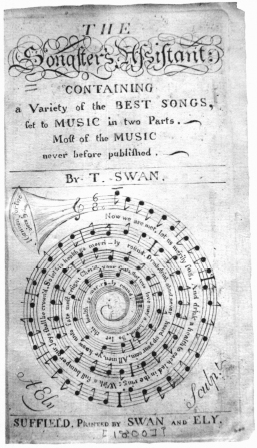
Fig. 412. Music book title page, [1800].
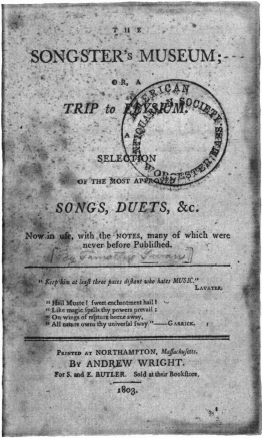
Fig. 413. Songster titlepage, 1804.
Swan, though better known for his psalmody tunes Bristol and Montague (see Table vii in Richard Crawford’s contribution to this volume), is one of the few eighteenth-century American musicians whose portrait is known to exist (fig. 341). The portrait of Swan shows a man of sensitive features and dignified manner. The artist and date of the painting are unknown although it is thought to have been painted about 1800 in Suffield, Connecticut, where Swan lived for many years. The unusual landscape in the background of the Swan portrait compared with an overmantel landscape painting in the Alexander King house in Suffield has led some scholars to ascribe the painting to Luther Allen, who advertised for two consecutive issues on January 19, and 26, 1801, in the Connecticut Courant as
Limner. . . . viz Portrait Painting in oil of all sizes, from busts to full figures; do[.] Painting with Pastils [sic] or crayons, in a very cheap manner, which after glazing will appear almost equal to that of oil. Miniature painting, Hair-work, &c. Coach and Carriage painting done in the neatest and best manner, and embellished with gilding and drawings, after the most approved New-York fashions; Sign painting, lettering with gold leaf, and Smalting, together with clock-face painting, &c. Copperplate engraving of almost every kind, together with Typographical on type-metal or wood.
Said Allen, having had considerable experience in the above arts, flatters himself that he shall be able to give ample satisfaction so [sic] those who favor him with their custom. All orders from those at a distance will be carefully attended to, and the smallest favor gratefully acknowledged.
Ensfield January 19
Another artist suggested is Joseph Steward, a painter in Hartford by 1796 and publisher of the Hartford Selection of Hymns in 1799.61
music teachers
The variety of skills listed by Luther Allen in his advertisement was by no means a unique occurrence in New England. The 1716 announcement of Edward Enstone (see fig. 276 in this volume) illustrates the versatility of his activities. (For citations of primary documentation of his activities as well as those of other dancing and music masters, see Appendix C.) Enstone sold flageolets, flutes, oboes, bass violas, violins, bows, strings, oboe reeds, and books of instuctions for all these instruments. He offered to mend all instruments of music and to string and tune virginals and spinets. He proposed to teach dancing at his dancing school on Sudbury Street and to give instrumental instruction (whether he meant only the virginal and spinet or the entire list is not clear from his advertisement). He was organist at King’s Chapel from 1714 to 1723. The New-England Courant (December 31, 1722) lists him as a sometime landlord: “This is to inform the Publick, That Mr. James Boyer, Jeweller, from London, living at Mr. Enstone’s, a Dancing Master in King Street, Boston, setts all manner of Stones in Rings, &c. . . .” He arranged balls and, as shortly shall be seen, concerts.
As noted earlier, George Brownell taught dancing and treble violin, flute, and spinet as well as writing, cyphering, and needlework. An August 20, 1716 advertisement in the Boston News-Letter listed dancing lessons, many items of finery as well as the “cutting of Gentlewomens Hair in the newest Fashion” (see Appendix C). A Brownell bill from 1718 includes items for dancing instruction, for fitting and tuning a spinet, and for instructing Coffie, the Negro belonging to Mr. Stoddard (see fig. 242 in this volume). Peter Pelham was a painter, mezzotint artist, dancing instructor, assembly and concert manager, and boarding school keeper. What these men offered in common was the opportunity for New Englanders to learn music and dance.
Although some theoretical musical theses were included in commencement broadsides at Harvard (see Appendix D), practical musical instruction was not included in the curriculum of the college or of the public Latin schools. The private school instructors like Brownell and Enstone met this need. Few seventeenth-century instructors have come to light, although the Essex County Courts Records (April 1657) note that Thomas Androus, “the scholar musician, was there with his music,” at the John Androus house in Ipswich in the summer of 1656, at a merriment. No evidence has yet been located to indicate that the scholar-musician taught in the area. In a paper entitled “Observations Made by the Curious on New-England, about the Year 1673,” it was reported that Boston had about 1,500 families, though “there are no musicians by trade,” and “a dancing-school was set up; but put down.”62
In the Boston News-Letter, the first successful newspaper in the colonies, and in later papers, the teachers of music and dance began to come to notice. In addition to Enstone and Brownell, James Ivers advertised a boarding school on April 12, 1714, where needlework, painting on glass, writing, arithmetic, and singing psalm tunes were taught. The Ivers announcement reflects a need for the improvement of psalm singing, a need that culminated in a reformation of church singing and the establishment of singing schools, a source of musical education for many Americans for decades.
Other vocal and instrumental instructors drifted through the city throughout the century. John Waghorne advertised to teach vocal psalmody in the Boston Gazette during the years 1739 to 1741. Peter Pelham, Jr., fresh from nine years of musical study with Charles Theodore Pachelbel in New York and Charleston, returned to Boston in 1743 where he offered to tutor ladies and gentlemen in the art of music as well as harpsichord and spinet. He also advertised in the Boston Evening-Post for May 30, 1743, that he would teach classes on Monday, Wednesday, and Friday from six to eight on “the Rudiments of Psalmody, Hymns, Anthems, &c.” Pelham, organist at Trinity Church from 1744 to 1749, left Boston in 1749 to move to Virginia where he was organist at Bruton Parish in Williamsburg.
Among other teachers available were James Joan (arrived 1768, left in 1771), instructor of violin, German flute, and guitar; and David Propert (arrived from New York in late 1770), who announced in the Massachusetts Gazette for January 3, 1771, that he taught “Harpsichord, Forte Piano, Guittar, German Flute, &c.” Propert is mentioned several times in John Rowe’s diary and was probably the music teacher of Rowe’s niece, Sucky Inman, who lived with the Rowes. On March 15, 1771, after a long meeting with the merchants to prepare an address for the governor, Rowe noted with pleasure, “when I came home I found Mr J. Lane & Mr. Propert who supped & diverted us all the evening by playing on Sucky’s Spinnet & Joyned by Mr J. Lane in singing—Propert is a fine hand.” Propert was also organist at Trinity Church, Rowe’s church. The social benefits of music instruction can be witnessed in an anonymous watercolor, ca. 1800, found in New Hampshire and possibly American (fig. 414a and b), which depicts a scene similar to the one that took place at John Rowe’s house.63
William Selby (organist at King’s Chapel, Boston, 1771–1773; Trinity Church, Newport, 1773–1774; Trinity Church, Boston, 1776–1778; King’s Chapel, 1782–1798) advertised his availability “to instruct young gentlemen and ladies to play upon the violin, flute, harpsichord, guitar, and other instruments, now in use” as well as dancing in the Newport Mercury (January 8, 1774). Similar advertisements have not been discovered after his return to Boston even though the times were so lean that he announced on January 2, 1780, that he sold wines, sugar, tea, and soap.64
In the 1790s many “professors of musick” arrived with the opening of the theaters. The Peter von Hagen family came in 1796. Peter, his wife, Elizabeth, and son Peter, Jr., taught fortepiano, harpsichord, organ, singing, and music theory in Boston. The elder von Hagen made weekly teaching trips to Dorchester, Milton, Dedham, Newton, Watertown, and Cambridge. Peter, Jr., taught in Salem each week and added violin to the list. Mrs. von Hagen taught Tuesdays and Fridays at Mrs. Susanna Rowson’s Academy in Medford. Francis Mallet advertised the teaching of fortepiano, vocal music, and guitar in 1798. Gottlieb Graupner (see fig. 451 below) offered in the Columbian Centinel, for March 3, 1798, to teach vocal and instrumental music. Graupner joined with Mallet and Filippo Trajetta to announce in November 1800 the formation of a conservatory or music academy based on European models. The partnership did not last long but the mere fact of the existence of the academy for two seasons, along with the vigorous singing school activity, indicated that the musical education available to Boston and New England had changed considerably during the century.65
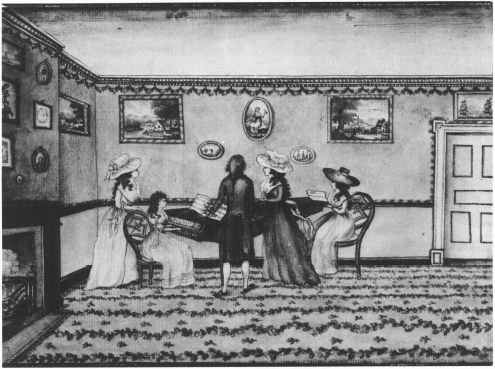
Fig. 414a. “Harpsichord Recital”, a watercolor possibly by Count Rumford, United States or England, ca. 1800.
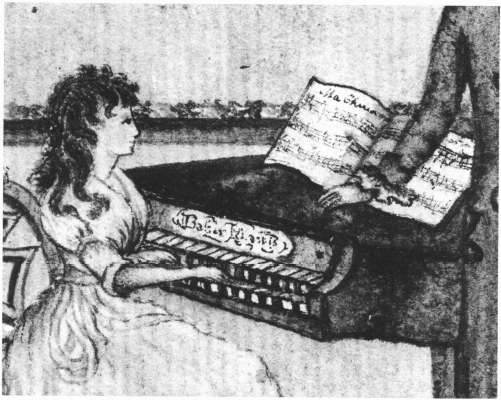
Fig. 414b. Detail of spinet by Baker Harris from the watercolor “Harpsichord Recital”, ca. 1800.
dealers and makers
Music and musical instruments were both imported and produced locally. Although there may have been instrument dealers earlier, the Enstone Boston News-Letter advertisement (see fig. 276 in this volume) shows that by 1716 imported instruments and music were certainly available to the Boston residents. William Price, a print dealer, also offered for sale “Flutes, Hautboys, & Violins, Strings, Musical Books, Songs” as the 1743 version of the Bonner map of Boston reveals on its left border (see fig. 342 in this volume).
An unusually informative advertisement that appeared in the June 25, 1764, issue of the Boston Gazette lists both music and instruments for sale (fig. 415). Among the instruments offered are German flutes, some with two or three extra tuning joints, fiddles “lined and corner stopt, to strengthen ‘em,” a tenor violin, and a six-string bass viol for a girl. The list of music is impressive: Italian and English operas and songs by such composers as Pergolesi and Handel, concertos (including some by Vivaldi), instrumental and vocal tutors, military marches, sacred music by Handel, The Beggar’s Opera, The Merry Mountebank (see vol. I of this book, fig. 226 for a tune from the last) as well as many others. Some of these same items are listed for sale in the New-York Mercury for August 13, 1759, by a gentleman soon to go out of town. Although his identity has not yet been determined, he must have found his way to Boston by 1764.
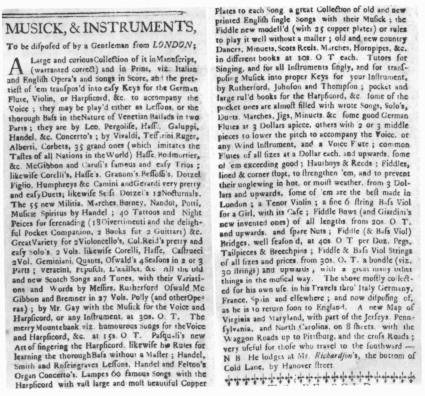
Fig. 415. Advertisement from the Boston Gazette, June 25, 1764.
Besides the dealers listed, music was also available from booksellers and printers. Much of the music sold was religious, reflecting the importance of psalmody and the demands of the singing schools. Printers and engravers like Samuel Gerrish, Thomas Johnston, and Paul Revere not only printed editions of sacred music, but also sold them. One prominent bookseller was John Mein, who worked in partnership with David Henchman and by 1765 owned the London Book Store on King Street. Mein also published the Boston Chronicle in which he advertised in 1768 his and Fleeming’s publication of the Liberty Song with music (see vol. I of this book, fig. 166), probably the first secular sheet music published in Boston. By the end of the century, Peter von Hagen had developed a more ambitious publishing firm which issued such favorites as “Adams and Liberty,” “Rosalin Castle,” and von Hagen’s own “Funeral Dirge on the Death of General Washington.”
For stringed instruments built and sold in Massachusetts, James Joan (sometimes Juhan or Juan) reported in the Boston Chronicle for July 31, 1769, that he made “violins, screw-bows, and cases equal in goodness to the best imported.” He also made bass viols, according to an advertisement which he placed in the Massachusetts Gazette; and the Boston News-Letter for September 6, 1770. The Boston Evening-Post for February 19, 1770, records a benefit concert for him at which all the violins used were manufactured in Boston by Joan. (For further information about Joan, see Appendix C.)
Benjamin Crehore (1765–1832) of Milton made bass viols and violoncellos (as well as pianos; see fig. 423) at the end of the eighteenth century. Based in Milton throughout most of his working career, Crehore is known to have made a bass viol (in Dorchester) as early as 1788 and several ’cellos in the 1790s (for his examples of both types, see fig. 271 earlier in this volume). Crehore associated with the leading professional musicians in Boston and was in partnership with the von Hagens at their Boston music store in 1798–1799. Amateur players in the non-urban areas could possibly have acquired instruments from such Boston dealers, although one extant bass viol with origins in New England suggests that some players may have made their own. This instrument is fitted with a heavy pine top and back held together by ribs apparently made of pressed laminated paper (fig. 416). According to an inscription on the heart-shaped portion of the tailpiece, George Jewett made this instrument in 1794–1795, possibly as a labor of love, for the name “Pamele” is carved inside the heart. A charming carved, painted head replaces the usual scroll.66
Just as cabinetmakers sometimes began making keyboard instruments, ivory turners used their skills on musical items. The 1771 trade card of Isaac Greenwood, ivory turner of Boston, engraved by Paul Revere (fig. 417), lists numerous items made from ivory, silver, brass, iron, horn, and wood. Among the lemon squeezers and twisted bannisters are “Joynts for German Flutes.” In 1780 Greenwood offered fifes and oboes in the Continental Journal and Weekly Advertiser for April 20; by April 27, 1785, his trade had expanded to include “violins and strings for ditto” and “reeds for Hautboys” in the advertisement he placed in the Columbian Centinel. The New-Hampshire Gazette for September 20, 1792, reports that John G. Holland, ivory turner from Boston, had just opened a shop in Portsmouth where he made and sold flutes, fifes, fiddle bows, fiddle pins, and bridges. Holland no doubt made the same items in Boston.67
William Callender, whose fife is shown in figure 260, is listed in the city directories as an ivory turner on State Street in 1789, and as both ivory turner and musical instrument maker on State Street in 1798. From 1803 to 1818 he is a musical instrument maker at No. 62 Middle Street; from 1820 to 1825 both trades are listed (1820–1821 on Mill-pond Street, 1822–1824 on Adams Street); and from 1825 until his death in 1838 he reverts to the simple listing of “turner.”
It will be remembered that Callender also sold violins, bass and tenor viols, clarinets, oboes, drums, trumpets, and bugle horns. He did not necessarily make all these instruments, but, as was the practice here and abroad, his label was stamped or glued on them. Although no early Boston makers of brass instruments have yet been discovered, with further searching one may be found among the tradesmen, similar to New York’s John Balthius Dash, a tinman, who in the New-York Journal Supplement for August 17, 1769, claimed to produce “the best French Horns, Philadelphia Buttons and Shoe Buckles.”68
Fig. 416a. Folk violoncello by George Jewett, Lebanon, Maine, 1794/1795.
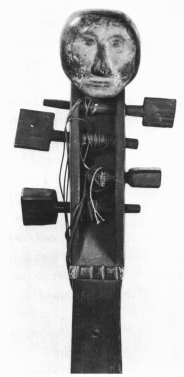
Fig. 416b. Detail of head of folk violoncello by George Jewett, Lebanon, Maine, 1794/1795.
David Propert, in the advertisement already cited (Massachusetts Gazette, January 31, 1771) states that he “has imported a Variety of new Musick and Musical Instruments, among which is a very fine Tone Harpsichord, and a Forte Piano, all which he disposes of at Mr. Rogers’, near Peter Chardon, Esq; in Cambridge-Street, Boston.” Not until the end of the century when the von Hagens set up their “Musical Magazine and Warranted Piano Forte Ware House” in late 1797 or early 1798 does it appear that any dealer made a special effort to sell keyboard instruments in quantity. The source of some of the von Hagens’ pianos can be seen from the announcement of their partnership with Benjamin Crehore in the Columbian Centinel for July 3, 1799. They established the firm of “P. A. Von Hagen jun. & Co. . . . for the purpose of importing from London instruments of the first quality and the best makers. Also from Amsterdam by the justly celebrated Meyer formerly of the City of London.” An extant piano by Meinke, Meyer & Meyer (fig. 418a), which according to its label was imported by the von Hagens (fig. 418b), is fitted with a Hepplewhite stand not typical of other Meyer pianos. It is possible that dealers may have imported only the case and mechanism of the instrument, with the stand to be built after its arrival. In this instance it seems most likely that Benjamin Crehore, von Hagen’s partner, would have constructed this stand.69
Fig. 417. Engraved trade card by Isaac Greenwood (1730–1803) of Boston, by Paul Revere, Boston, 1771.
Fig. 418a. Square fortepiano by Meinke Meyer and Pieter Meyer, Amsterdam, 1798, on a stand probably by Benjamin Crehore, Milton, 1798/1799.
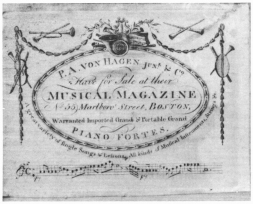
Fig. 418b. Importation label on left keywell of the square forte piano by the Meyers, Amsterdam.
Earlier in the century the sale of harpsichords, spinets, organs, and later pianos seemed to be on an individual basis. An estate settlement would announce one for sale, as happened in an advertisement in the Boston Gazette for October 6, 1729, following the death of Governor William Burnet, whose effects offered at public auction included “harpsichord and other musical instruments” (see fig. 270 in this volume). In other instances, instruments may have been advertised because the family had tired of them or had gone on to different instruments, as suggested in the sale notice from the Newport Mercury, May 17, 1773: “a Spinnet of a proper size for a little miss and a most agreeable tone—Plays extremely easy on the keys. Inquire of the Printer.”
Keyboard instruments cited in New England during the first half of the eighteenth century, such as those belonging to Governor Burnet and Increase Gatchell for example (see figs. 270 and 263 repectively, and Table i in Barbara Lambert’s monograph, all in this volume), were without exception imported. During the second half of the century, however, instruments of the harpsichord family as well as pianos and organs (for the last, see Barbara Owen’s contribution to this volume, “Eighteenth-Century Organs and Organ Building in New England”) were made locally. The earliest reference to a New England harpsichord maker is found in the November 14, 1768, issue of the Boston Chronicle:
From London, John. Harris, Who arrived in Capt. Calef, begs leave to inform the public, that he makes and sells all sorts of Harpsichords and Spinnets. Likewise mends, repairs, new strings, and tunes the said instruments, in the best and neatest manner.
Any Gentlemen and ladies that will honour him with their custom, shall be punctually waited upon. He lives at Mr Gavin Brown’s Watch-maker, North-side of King Street.
Nearly a year later his success was described in the Boston Gazette for September 18, 1769:
It is with pleasure we inform the Public, That a few days since was shipped for Newport, a very curious Spinnet, being the first ever made in America, the performance of the ingenious Mr. John Harris, of Boston (Son of the late Mr. Joseph Harris, of London, Harpsichord and Spinnet Maker), and in every respect does Honour to that Artist, who now carries on Business at his House, a few Doors Northward of Dr. Clark’s North end of Boston.
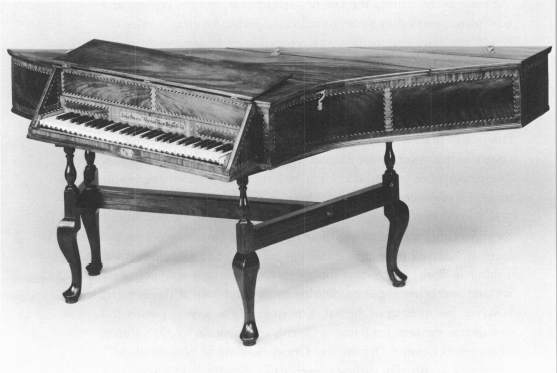
Fig. 419. Spinet (pentagonal harpsichord) by John Harris, Boston, 1769.
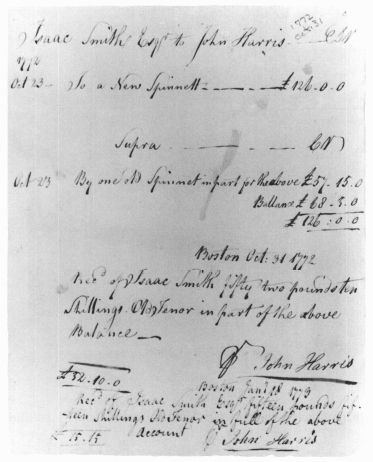
Fig. 420. ms bill from John Harris, Boston, 1772.
Although John Harris probably was the first to make spinets and harpsichords in New England, he was not the first to do so in America. John Harris was born into a London family of harpsichord and spinet builders which included his father, Joseph, and Baker Harris, probably another relative. (It will be noted that a harpsichord which appears to be inscribed “Baker Harris” on its name board (fig. 414b) is depicted in the anonymous watercolor in figure 414a.) The fine workmanship displayed by John Harris in his handsome spinet (fig. 419), thought to be the very one advertised in the Boston Gazette, shows him to be a master builder and cabinetmaker. The instrument is thoroughly English in concept and refinement of details; however, the earlier style of its Queen Anne frame suggests that the latter was made in Newport. John Harris continued to work in Boston for at least another three years; the Massachusetts Historical Society has among its collections a bill from Harris to Isaac Smith in October of 1772 recording a trade-in of an old spinet for probably a newly made one by Harris (fig. 420).
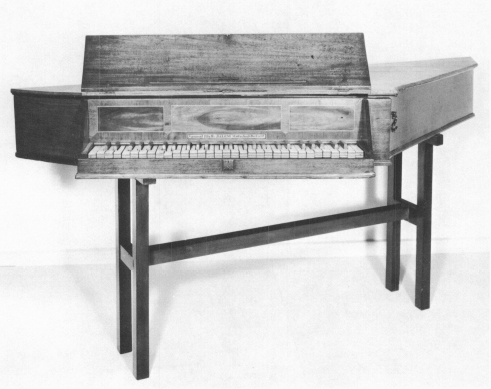
Fig. 421. Spinet (pentagonal harpsichord) by Samuel Blyth, Salem, Massachusetts, 1786.
Another Massachusetts spinet-maker was Samuel Blyth (1744–1795) of Salem. Blyth descended from a family of early settlers in Salem and lived there his entire life, in contrast to the immigrant John Harris. Although Blyth worked primarily as a house, ship, and fancy painter, he was for thirteen years, from 1760 to 1773, organist of St. Peter’s Church in Salem. (For the first ten of those years he played on an organ built in 1754 by fellow fancy painter and musical instrument maker Thomas Johnston of Boston; see Table viii in Ms Owen’s chapter in this volume). A spinet which he modeled after English examples and inscribed, and a bill of sale to Margaret Barton for a spinet are both preserved in the Essex Institute, Salem (figs. 421 and 422).
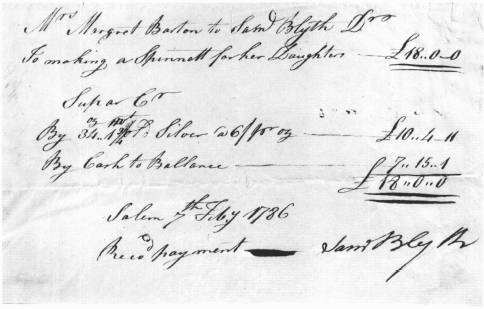
Fig. 422. ms bill from Samuel Blyth, Salem, Massachusetts, 1786.
Harpsichords were still listed for sale and “lately received from London” as late as 1801 in the Mallet and Graupner advertisement in the Boston Gazette for November 23. The list included imported “Grand Piano Fortes, Harpsichords, small do. double action, best English Guitars, &c. Also, for sale at the above place, a large assortment of American Piano Fortes, manufactured by Mr. Benjamin Crehore, whose genius and experience, cannot fail of producing as correct and elegant work, in this line, as any imported from abroad . . .” (fig. 423).
A square piano of an entirely different character from that of Crehore or those imported by the von Hagens, David Propert, and Mallet and Graupner is an anonymous New England example made of northeastern American white pine, maple, and white oak (fig. 424). The desire to have a piano must have been a strong one for its builder. This primitive version seems to have been fashioned after what its maker could recollect of English-type square pianos along with a few of their basic measurements. The result is a charming instrument, not only visually but aurally in its sweet bell-like voice.70
Fig. 423. Square fortepiano by Benjamin Crehore, Milton, Massachusetts, ca. 1805.
In addition to the newspaper advertisements, auctions, and later music dealers and local builders, merchant importers would buy and sell keyboard instruments commissioned for specific patrons, churches, and halls. On May 30, 1763, the Boston Evening-Post announced an entertainment at Concert Hall where could be heard “a delicate and melodious new organ, made by the first hand and lately imported from London in Capt. Burgess.” The organ was imported by the Deblois family, leading merchants of Boston, builders of Concert Hall in 1754 (see fig. 428), and organizers of many seasons of concerts. Of Huguenot descent, the family arrived in Boston in 1728 in the company of Governor William Burnet from New York. The father, Stephen, and his sons Gilbert and Lewis were very musical and they later served as organists and music advisors to King’s Chapel and Christ Church (“Old North”).
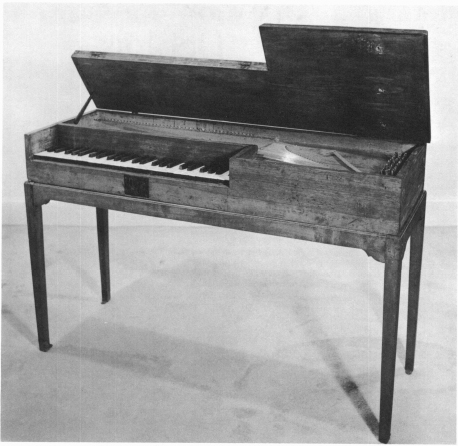
Fig. 424. Primitive square fortepiano, maker unknown, New England, late eighteenth century.
The variety of items sold by the Deblois family is seen in the 1773 trade card of Gilbert Deblois (fig. 425; for Lewis Deblois’s trade card, see fig. 434). Between the “genteel China” and the “Dutch Brushes” one finds “English & German Flutes, Fifes, Violins, and best Roman Strings.” In the second paragraph, dealing with military items, are listed “Fifes, Drums, with all other Sorts Instruments proper to compose a Band of Music for a Regiment with Books of Instruction, &c. &c.” Deblois must have viewed this last paragraph with sadness a few years later, for in 1776, the actions of some of these regiments challenged the Deblois’s loyalty to the king and caused the family to be banished to England and most of their property to be confiscated.71
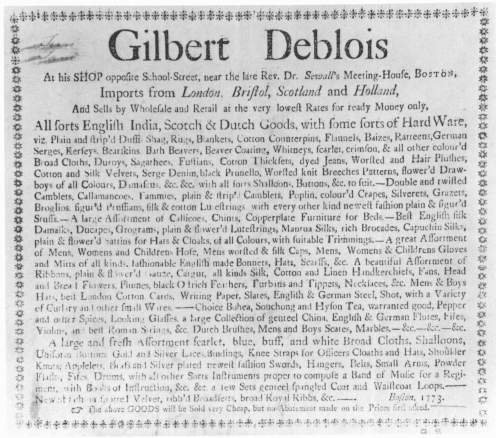
Fig. 425. Letterpress trade card of Gilbert Deblois, Boston, 1773.
concerts
Members of the Deblois family figure importantly in the development of concert life in Boston. Although others are credited with staging the first Boston concerts, the Deblois influence is recorded from the 1730s through the 1760s, with their opening of Concert Hall in 1754 a major addition to the musical life of Boston.
It is quite possible that the father, Stephen Deblois, took part in the first concerts. In early 1729, the Boston Gazette (February 3 and again on 10) included an announcement that “there will be a Consort of Musick performed on sundry Instruments, at the Dancing School in King-Street, on Tuesday the 18th Instant, at Six o’Clock in the Evening.” Admission price was seven shillings and sixpence (see fig. 237 in this volume. For a summary of the earliest-known concerts in Boston, see Table iii, pp. 437–441, in Barbara Lambert’s contribution to this volume).
The Deblois family had arrived with the entourage of the governor, William Burnet, the preceding year. The arrival of the governor’s party from his previous post as governor of New York and New Jersey was recorded in the Boston News-Letter for July 25, 1728. The account states that the preceding Friday at twelve o’clock, Burnet, “with the Attendance of Five Troops, a vast Number of Gentlemen on Horseback, and a great Number of Coaches and Chaises, was usher’d into Boston with a Splendor and Magnificence superior to what has ever been known in these Parts of the World.” Guns saluted him. “From the Fortification to the Town House the Windows, Turrets, & Streets seem’d to be alive with joyful Spectators.” He was met by the Boston Militia and the town’s leading citizens, entertained at dinner at the Bunch of Grapes tavern, and at six o’clock conducted to his lodging by young gentlemen cadets and “a long Procession of Gentlemen, Merchants, etc.”72
Burnet, born in The Hague, Holland, in March 1687, was a learned man and, from the instruments listed in the inventory following his untimely death in September of 1729, he had a strong interest in music. (For his portrait, see fig. 269 in this volume. The instruments in his inventory are listed in Table i of Barbara Lambert’s contribution to this volume; see also figs. 270 and 372.) He no doubt had heard many fine musical performances in Holland and England. Any Boston citizen with musical talent could have been encouraged by the arrival of a regime so inclined toward music.
How many in Burnet’s following were musical besides Stephen Deblois is not known. But Deblois did not enter a city devoid of musical talent. Edward Enstone had come fourteen years earlier; Peter Pelham arrived just months before; William Price had long been active and was known to have served as the first organist at King’s Chapel. These gentlemen, along with their friends and pupils, could well have played on the “sundry Instruments” announced in the Gazette.
The location of the concert was the dancing school on King Street. In the Boston Gazette for September 12, 1720, Enstone had announced his removal to “a Large House in King Street.” The announcement in the Boston Gazette for February 3 and 10, 1729 (see fig. 237 in this volume), mentions the dancing school, but not Enstone’s name. Those who bought tickets could attend.73
The details of this concert and the possible explanation for its taking place when it did are described at length because this event precedes by almost three years the date usually given as the first American concert recorded in colonial newspapers. The latter concert, advertised in the Boston News-Letter for December 16, 1731, was to take place on December 30, 1731, at “Mr. Pelham’s great Room” (fig. 426). This date, discovered by Oscar G. T. Sonneck and recorded in 1907 in his landmark book, Early Concert-Life in America (1731–1800), has been repeated again and again as the beginning of concert life in America. Sonneck himself made it clear that scholars after him might find earlier announcements. With even more searching through newspapers, diaries, and public records, scholars yet to come may find even earlier examples.
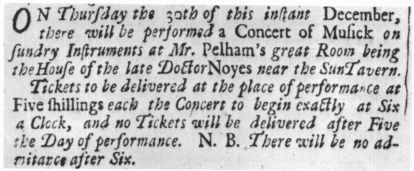
Fig. 426. Concert advertisement from the Boston News-Letter, December 16, 1731.
Locations of Concerts
The 1729 concert was held in the dancing school on King Street. The 1731 event was at another dancing room, this time Pelham’s. Pelham obviously scheduled an evening of music in November of 1732, for the quotation of this date in the section on Pelham in Appendix C was a reaction to the notice of this “Entertainment of Musick and Dancing (call’d by the fashionable name of an Assembly).” About this same time, “Consorts of Musick performed on sundry instruments” at the “Concert Room in Wing’s Lane near the Town Dock” were announced in the New-England Weekly Journal for November 13 and December 25, 1732.
Stephen Deblois must have fitted up his house with a concert room, for on November 29, 1733, in the Boston News-Letter he advertised “a Concert of Vocal and Instrumental MUSICK” in Wings Lane at his house, “Tickets to be had . . . at Mr. Frederick Hamilton’s (Grocer) in Union Street, near the Sign of the Corn Fields at 5 s. each.” Among the other concerts held there was one in 1739 related to a celebration of the Free and Accepted Masons of New England. The Boston Gazette for June 25, 1739, reports that the lodge gathered at the home of John Waghorne, already mentioned as a teacher of vocal psalmody:
. . . from whence they walk’d in Procession to His exellency’s House, properly Cloathed, and Distinguished with Badges, and other Implement pertaining to the several Orders and Degrees of the Society, preceded by a Compleat band of Musick, consisting of Trumpets, Kettle Drums, &c.
The Society was elegantly entertain’d at the governour’s, from whence they walk’d in the same Order with his excellency their Brother, to their Brother Stephen Deblois House, where they were entertained with a fine Concert of Musick: . . .
Not long after the fine building given to the city by Peter Faneuil opened in 1742, Deblois and his friends petitioned for its use as a concert room (fig. 427). Some of these concerts celebrated the king’s coronation day or the king’s birthday, some were for the benefit of the poor. According to the city records, the benefit sponsored by Deblois (near Queen-Street) on December 6, 1744, brought in 205 pounds, five shillings Old Tenor. In addition to Deblois, the town records note that “Mr. William Sheaf with a Number of Gentlemen” and Thomas Hancock petitioned for the use of Faneuil Hall in the 1740s.74 William Sheafe was the deputy collector of the port of Boston and Thomas Hancock was a rich merchant whose wealth was bequeathed at his death to his nephew, John Hancock. The concerts and dancing described by Alexander Hamilton (p. 752) and Francis Goelet (p. 758) were probably also held there.
In 1754 the Deblois family opened Concert Hall at the junction of Hanover and Queen Streets (fig. 428). Gilbert and Lewis Deblois had their shop, the Crown and Comb, on the ground floor; the concert room was above. The Rev. Andrew Burnaby saw it during his 1759 visit and described it as “an elegant private concert-room, highly finished in the Ionic manner.”75 The year previous to this, the elegance was noted by John Adams who on October 24 had spent an uneasy first day at court in Boston. At night, he records in his diary, he:
went to Consort with Samll. Quincy and Dr. Gardiner. There I saw the most Spacious and elegant Room, the gayest Company of Gentlemen and the finest Row of Ladies, that ever I saw. But the weather was so dull and I was so disordered that I could not make one half the observations that I wanted to make.
From the several references to performances and assemblies at Concert Hall attended by John Rowe, attendance of 100 to 150 people was not unusual. Concert Hall served the Boston musical community until 1869, when the building was demolished during the widening of Hanover Street.76
Fig. 427. Engraving by S. Hill opposite p. 129, from the Massachusetts Magazine, i (March 1789).
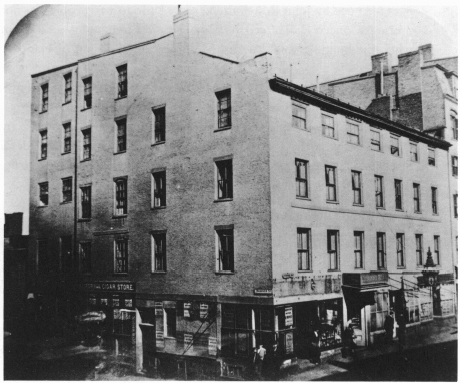
Fig. 428. Stereoscopic view of Concert Hall, Boston, ca. 1860.
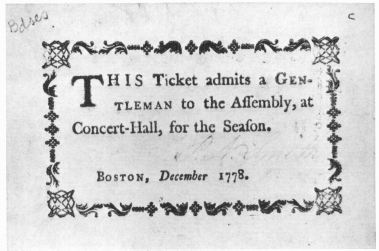
Fig. 429. Printed season ticket, Boston, 1778.
In addition to Faneuil Hall and Concert Hall, other concert sites included the British Coffee House (David Propert’s concerts, 1773), Stone Chapel or King’s Chapel (various performances organized by William Selby in the 1780s), and later the Boston Theatre on Federal Street (see figs. 446, 447, and 453 below), Haymarket Theatre (see fig. 452 below), Bowen’s Columbian Museum, and other churches.
Organization of Concerts
The earliest concerts advertise admission by tickets that could be bought through various taverns, booksellers, or other agents. Although these appear to be open to anyone with the price of the ticket, the later concerts appear to be private subscription affairs, not open to the general public. That private clubs for gentlemen flourished at this time can be seen from a reading of Rowe’s diary which mentions frequent evenings out at the Fire Club, Merchants Club, Wednesday Night Club, the Possee, and the Free Masons. Hamilton’s description of the cities he visited in his 1744 journey confirms this.
From the early concerts, it appears that both men and women attended, for the 1732 Boston Gazette article writer complained about the attendance of his wife and daughter. Later in the century, John Rowe’s diary makes it clear that both men and women attended entertainments at Concert Hall and that some evenings were just assemblies, as a subscription ticket dated 1778 suggests (fig. 429). From some references, though, it appears that some concerts might have been private clubs attended only by their male members.
The journal written by Francis Goelet during his visit to Boston in 1750 offers one instance. Goelet, who had an eye for the ladies in other journal notations, makes no mention of the “finest Row of Ladies” observed by both Hamilton and Adams. On October 9 he dined with Edmund Quincy, Quincy’s family (including two daughters), and two other young ladies. Just following the notation of the pleasant afternoon during which he heard Mrs. Quincy and her two daughters play on the harpsichord, he wrote: “Mr. Chief Deputy Collector [William Sheafe], invited me to go to the Consort of which he was a Member, I went accordingly, the Performence was as well as Could be Expected, it Consisted of One Indifrent, Small Oargon, One Base Violin, One German Flute, and Four small Violins. Spent remaing the Eveng with Capt. Maxwill.” From the last sentence it is clear that Goelet did not attend an assembly following the concert, for he would have described it in some detail as he did the one he attended with Quincy on October 18.77
The Deblois notice in the Boston News-Letter on April 29, 1762, also suggests a private club or at least a private subscription:
The members of The Concert, usually performed at Concert-Hall, are hereby notified, That the same is deferred to the End of the Summer Months: And it is desired, That in the mean Time each Member would settle his respective Arrearage with Mr. Stephen Deblois, with whom several Accounts are lodged for that Purpose.
The private nature of the series is confirmed in later announcements by Deblois through the 1760s. In addition to this Deblois private series, there were benefit concerts for specific performers from 1755 on, subscription series organized by William Turner, Sr., and David Propert, sacred concerts arranged by William Selby, and by the last decade, several series were arranged by the wave of musicians brought in by the opening of the theaters in the 1790s.78
That most of these events were exclusive was pointed out in 1792 by a “mechanick” who was one of the “primitive” Bostonians who rose up against the government’s continued resistance to the introduction of the theater in Boston. In the Columbian Centinel for December 8, 1792, he wrote:
I am really a poor man, and have the feelings of a poor man. . . . From my situation in life, I am virtually debared from any of the common amusements of this town—I cannot attend the concerts, assemblies, or card-parties—I do not say, that their regulations exclude Mechanicks; but then the distance that is always observed by those who move in the higher sphere, and the mortification which I and my family must inevitably undergo, if we were with them, exclude us as much as if there was a solemn act of exclusion.
Programs and Performers
The early announcements provide little information about the performers and their repertory. In 1729 all that is known is that the “sundry Instruments” begin their “Consort” at six. In 1731 and 1732 it is “sundry Instruments” again at six. In 1733 Deblois gave a “concert of vocal and instrumental music.” By 1733 some of the three-hour concerts from six to nine had been shortened to six-thirty to nine.
Goelet’s diary provides the most specific information. In 1750 there were seven instrumentalists: four violins, one German flute, one bass violin, and one organ. Who played them is not revealed but perhaps the Messrs. Deblois, William Price, and other gentlemen were among the musicians involved.
Fig. 430. Portrait of Man with a Violin, by J. Cooper, North America, 1714–1718.
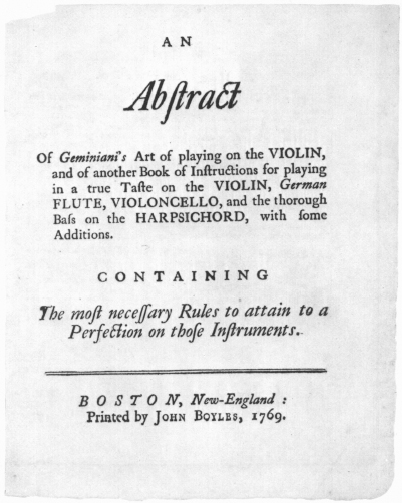
Fig. 431. Music instruction book title page, 1769.
The unidentified gentleman holding the violin in the oil painting ascribed to J. Cooper (active 1714–1718) (fig. 430) could represent the type of violinist appearing in the early eighteenth-century American concerts. He could have learned his technique from his local teacher, aided after 1730 by the violin method published by Francesco Geminiani. By 1769 he could have bought An Abstract of Geminianis Art of playing on the Violin published in Boston by John Boyles in that year (fig. 431). He would probably be playing on an imported violin, but later could have played on one by James Joan, or by Peter Young of Philadelphia (fig. 432).
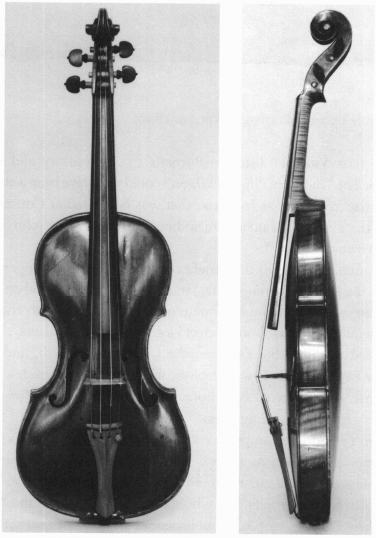
Fig. 432. Violin by Peter Young, Philadelphia, 1788.
The German flute, probably imported, would have been a conical transverse flute with one key. Usually made of boxwood, it would have resembled the flute made about 1810, probably in London, and used by the Atkinson-Lancaster family of Boston (fig. 433). The bass violin would have been either a violoncello or a double bass—perhaps even the “Large bass Violone” listed in Burnet’s 1729 inventory and sold at auction. The “Indifrent, Small Oargon” could well have been a chamber organ made by Thomas Johnston that was later used at Concert Hall before the 1763 “delicate and melodious new organ” by John Snetzler arrived from London.79

Fig. 433. Transverse flute by an unknown maker, ca. 1810.
The announcement of the benefit concert for Thomas Dipper advertised in the Boston Evening-Post, January 31, 1757, and held on February 3, 1757, included the information that the vocal and instrumental music would be chosen from “Select Pieces by the best Masters”. Tickets were sold at the Deblois’s store, the Crown and Comb, and at the Golden Eagle, run by Lewis Deblois, whose handsome trade card for that year was engraved by Thomas Johnston (fig. 434; for Gilbert Deblois’s trade card, see fig. 425).
From 1769 on, the program and performers became more explicit as the competition for an audience became keener. A concert organized by Josiah Flagg on June 29, 1769, at Concert Hall included vocal music performed by four voices, the whole evening to end with the “British grenadiers.” Flagg, who had published a collection of psalm tunes in 1764, claimed to be the first founder at great expense, time, and trouble of a “band of musick” for a local regiment of militia. His concerts of 1771, played by the British band of the 64th Regiment, included works by Handel (overture to Ptolomy and selections from Acis and Galatea and the Messiah), Stanley (first and sixth concertos), J. C. Bach (third symphony), and Stamitz (Periodical Symphony). The concert for May 17 gives some hint of the instrumen ts in the regimental band: “vocal and instrumental musick accompanied by French horns, hautboys, etc. by the band of the 64th Regiment.” The October 4, 1771, Flagg concert also included an organ concerto played “by a gentleman lately arrived from London,” William Selby.80
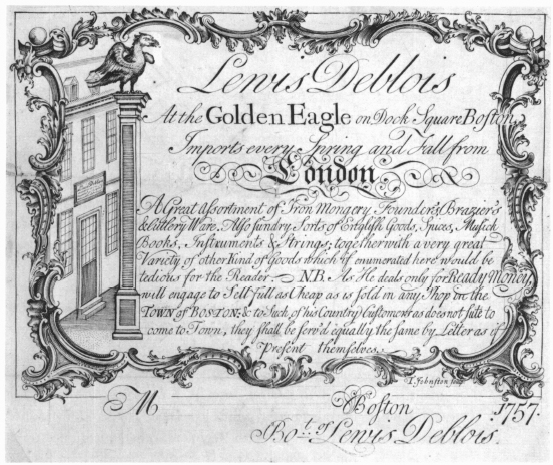
Fig. 434. Engraved trade card of Lewis Deblois, by Thomas Johnston Boston, 1737.
Selby, organist at King’s Chapel, announced a concert for October 26, 1772, that included, among other pieces, a Bach symphony, a Corelli concerto, and “Handel’s Grand Coronation Anthem in 22 parts.” Selby was “assisted by the band of his Majesty’s 64th Regiment.” The 1773 season carried on with more of the same composers and a lively competition between the series sponsored by William Turner, Sr., who had taken over Concert Hall in 1769, and David Propert, organist at Trinity Church. The band of the 64th Regiment appeared often at these concerts, as they did later.81
A benefit and farewell concert for Josiah Flagg at Faneuil Hall on October 28, 1773, advertised in the Boston Evening-Post, October 18, 1773, included music by William Boyce, a chorus from the Messiah, and The Liberty Song, the concert performed by “upwards of 50 performers” led by W. S. Morgan. A benefit concert on September 8, 1774, for this same Morgan (a violinist whose reported excesses in drinking and spending seemed to call for an assist) had an especially large orchestra made up of the “Gentlemen Performers of the Army, Navy and of the Town” as well as “some of the best performers from the several bands of music of the line.” The Boston Evening-Post announcement for September 5, 1774, lists the soloists Morgan (violin), Steiglitz (German flute), and Selby (harpsichord), as well as the instruments of the band: clarinets, hautboys (oboes), bassoons, French horns, trumpets, and kettle drums (fig. 435).
In a city with no theater orchestra to provide a nucleus of instrumentalists upon which to rely for concerts, Boston was fortunate for a time in having good regimental bands available. The band mentioned most frequently was from the 64th Regiment; others mentioned upon occasion were from the 29th and the 59th. According to John Rowe’s diary, the 29th came to town on October 1, 1768. On November 10 “Colo Pomroy arr’d with part of the Irish Regiments No 64 & 65.”82
These troops and their bands had not arrived in a spirit of friendliness. The town merchants on March 4 had issued a set of resolutions stating their intention to limit trade with England and to encourage local production until several grievances were made right. When the royal government did not respond to these grievances, the relations became tense. On August 1, the Revere bowl and The Liberty Song were introduced. By September 29 twelve British armed ships were in the harbor; on October 1 the troops began marching into town.
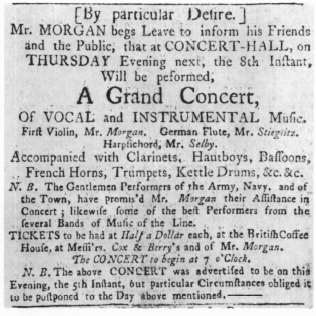
Fig. 435. Concert advertisement from the Boston Evening-Post, September 5, 1774.
Yet, in spite of the tense times, the regimental bands marched a few weeks later in a parade marking the installation of John Rowe as grand master of the Masons. As Rowe wrote in his diary for November 23:
I had the honour & pleasure of being Installed Grand Master of Masons for North America at Concert Hall this morning[.] This was a very solemn Ceremony[.] After the Installation the whole Fraternity proceeded in Order & marched in Procession from Concert Hall round the Town House, accompanied with two Brass Bands of musick, the 59th & 64th Regiments, to Trinity Church, the Revd Mr Walter read Prayers & our Worthy Brother the Revd Mr Bass of Newbury preached from the 21st Chap. St. John & part of the 20th Verse[.] After service wee returned in Procession to Concert Hall and dined on an elegant Entertainment provided by a Committee, appointed by the Grand Lodge—there were one hundred thirty four Brethren present—wee spent the afternoon very cheerfully & in good order which did honour to the Craft[.] I came home at Eight of Clock in the evening & spent the evening at home with Dr Catherwood, Mrs Rowe St Sucky[.]
The good relationship and the general musical quality obviously improved for music-lover Rowe, after attending the benefit concert for the fife major of the 29th Regiment a few months later, notes for March 16, 1769: “. . . Spent the evening at the Fife Major’s Concert at Concert Hall—there was a large genteel Company & the best Musick I have heard performed there. . . .”83
Fig. 436. A Harrnoniemusick ensemble from a hand-colored engraving published by H. Parker, London, 1753.
As noted earlier, from 1769 on, the programs and performers improved, owing to the influence of the fine British military bands, lately arrived. The Flagg concert of May 17, 1771, mentions the “French horns, hautboys, etc. by the band of the 64th Regiment.” The Morgan benefit of September 8, 1774, also mentions clarinets, bassoons, trumpets, and kettle drums.
From prints, military records, and diaries, it can be determined that the British regimental band of music of this time was usually made up of eight players: two oboes (or hautboys), two clarinets, two French horns, and two bassoons. In the engraving A View of the Royal Building . . . (1753) this combination can be observed (fig. 436; for a detailed view, see vol. I of this book, fig. 72). Sometimes the band had only six instruments, for an August 1, 1779, inventory of the instruments captured from the British 17th Foot at Stony Point lists only two French horns, two bassoons, and two clarinets. The 64th Regiment band probably consisted of eight players for New Englander John Andrews, in a letter commenting upon the improvement of the local militia companies, wrote that the American Grenadiers had “a grand band of musick consisting of eight that play nearly equal to that of the 64th.” This local band of music could be the one trained by Josiah Flagg.84
That armies of the Revolutionary period had more than fifes and drums is obvious from these concert announcements, illustrations, and diary accounts. The bands of music functioned apart from the fifes and drums, and although they had official functions in military parades and marches, much of their time was spent in entertaining the troops and officers with music for concerts and dances.
The instrumental wind combination is the standard used for Harmoniemusik popular in Europe in the second half of the eighteenth century. Haydn and Mozart wrote music for this type of wind ensemble as did many lesser composers of the time. Musicians in military bands were versatile. Some mounted horses to play trumpets and played other winds for the Harmoniemusik. Others played wind instruments for marching and stringed instruments for concerts and dances.
The oboe of the period could have resembled the one shown here even though this one, made by John Meacham of Hartford, Connecticut, was built over a generation later between 1805 and 1808. Fashioned out of boxwood stained dark reddish brown and ivory, it is turned in three parts and is fitted with two round, flat brass keys (fig. 437). The typical clarinet was made of boxwood and fitted with five square brass keys, not unlike the clarinet made by the Klemm Brothers in Philadelphia, ca. 1820 (fig. 438). The horn resembled a hunting horn, its approximately five-and-a-half feet of tubing wound three-and-a-half times in a circle, similar to the horn in F made by William Bull in London in 1699 (fig. 439). Although extra crooks were known to be in use for orchestra horn parts in the first quarter of the eighteenth century, the military horns used in marching had no crooks and were played in hunting style with the bell pointing over the shoulder (see fig. 436). The bassoon, usually of maple, was made in four sections with six finger holes in the front, two thumb holes in the rear and four keys. By the end of the eighteenth century the six-keyed bassoon had replaced the four-keyed model as the standard instrument. One of the earliest extant American bassoons is a transitional example of maple with four brass spade-shaped keys (fig. 440). Its maker, John Meacham, began making instruments around 1807 in Hartford, later moving his business to Albany, New York about 1813.
Fig. 437. Oboe by John Meacham, Hartford, Connecticut, ca. 1805–1808.

Fig. 438. Clarinet by the Klemm Brothers, stamped Philadelphia, ca. 1820.
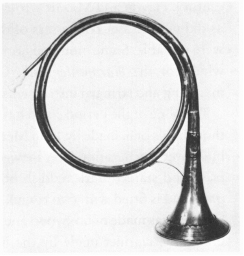
Fig. 439. Natural horn by William Bull. London, 1699.
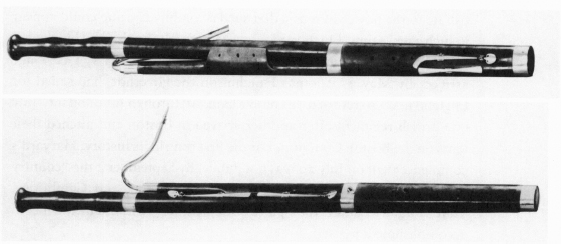
Fig. 440. Bassoon, front and back, by John Meacham, Hartford, Connecticut, ca. 1805–1808.
From the forces listed in the announcement of the Morgan benefit held on September 8, 1774 (see fig. 435), it is apparent that one of the largest orchestra groups ever available performed that evening. While the combined musical talents of the “Gentlemen Performers” of the “Army, Navy, and of the Town” and “the best Performers from the several Bands of Music of the Line” must have produced a splendid sound, it is a tribute to the power of music that such a combined group could appear in such a tense time. On the preceding May 13, the British had blockaded the harbor, and by June 1 the harbor was closed. On May 17 Gen. Gage arrived. By May 31 Thomas Hutchinson the governor, had sailed for England never to return to his native land. All through June and into July one British regiment after another arrived in Boston and pitched their tents on the Boston Common. For the first time in its history, Harvard’s commencement on July 20 was not public. By September 2 the “country people” began gathering at Waltham, Watertown, and Cambridge. That Morgan’s concert took place on September 8 without incident is an accomplishment in itself.
Fewer concerts are listed after this. The flutist Steiglitz who played in Morgan’s concert had a benefit on February 21, 1775. About two months later, on April 19, the “People in the Country” (as Rowe refers to them), near Lexington and Concord, fought in the first battle with the British troops and all thoughts of music were suspended for some time as Boston residents fled to safety. By May 25 Gens. Burgoyne, Howe, and Clinton had arrived. Although entertainments (especially drama) are known to have taken place during Burgoyne’s stay, little music is mentioned. By March 1776 the times were very bad. Food and other provisions became scarce as the American forces placed an effective blockade on the Boston neck, the land entry to Boston. The British troops plundered Boston shops and homes. By March 17 the British troops had evacuated and the American troops under Gen. Putnam “came into Town to the Great Joy of the Inhabitants that remained behind.” On March 19 Gen. George Washington entered the city.85
The next few years were difficult times; the regimental bands were otherwise occupied and few entertainments took place. John Hancock gave a grand ball at Concert Hall in honor of Count D’Estaing and the officers of his fleet on October 29, 1778. The count had arrived the preceding August bringing French silver crowns to pay the wages of the American Army, long in arrears. The ball appears to have been more of a diplomatic courtesy than a cultural extravagance.86
William Selby, who had left Boston in 1773 to become organist at Trinity Church in Newport, returned to Boston, perhaps in 1774. He was organist at Boston’s Trinity Church (Rowe’s church) from 1776 to 1778 and was organist at King’s Chapel, then called Stone Chapel, in 1782 after a six-year period with no Anglican services. It was William Selby who dominated the concert scene in the 1780s with the most notable concerts featuring sacred music performed at Stone Chapel. On April 22, 1782 in the Boston Gazette, Selby announced the following concert for Stone Chapel: “Musica Spiritualis, or Sacred Music being a Collection of Airs, Duetts, and Choruses, selected from the Oratories of Mr. Stanly [sic], Mr. Smith and the late celebrated Mr. Handel; together with a favourite Dirge, set to music by Thomas Augustus Arne, Doctor in Music. Also, a Concert on the organ by Mr. Selby.”
On January 20, 1786, and a year later, January 16, 1787, following the precedent of the huge 1784 Handel concert at Westminster Abbey, Selby scheduled ambitious programs that alternated vocal and instrumental music of Handel, Bach, Arnold, Felsted, and Selby himself with prayers and scriptures (fig. 441). Another noteworthy concert was given at Stone Chapel on October 27, 1789. “Part the First” included music by Selby and Handel; “Part the Second” was a performance of an entire oratorio, Jonah, by S. Felsted. In the audience was President George Washington whose entry into the city on October 24 had been graced with a procession through a triumphal arch and a colonnade, parades, and the singing of an ode composed for the occasion. This was a reception that far surpassed the one given to Governor William Burnet earlier in the century.87
Among other concerts organized by Selby was a benefit for William Billings at Stone Chapel, December 15, 1790. A benefit for Selby himself and Mons. Jacobus Pick, singer and player on the glass årmonica (fig. 442a and b), was held at the Concert Hall on June 20, 1793. This concert represents the end of Selby’s activity on the Boston concert scene (although he remained as organist at King’s Chapel until his death in 1798) and the beginning of a new era in the musical life of Boston—the beginning of the theater and the arrival of musicians related to it.
Fig. 441. Concert advertisement from the Massachusetts Gazette, January 2, 1786.
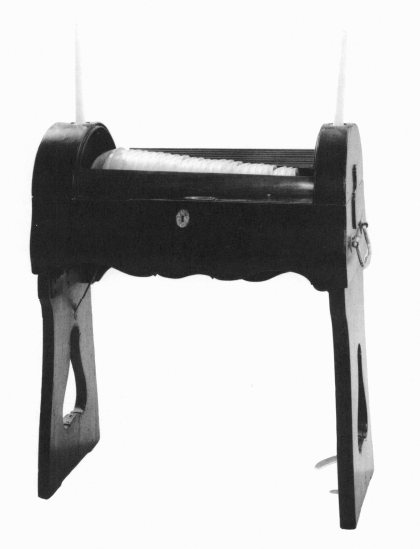
Fig. 442a. Glass årmonica, ?London, last half of the eighteenth century.
Although the Boston concerts until the last decade of the eighteenth century had been a mixture of vocal and instrumental music, the instrumental portions predominated. In vocal portions solos and choruses by Handel were the most frequently performed. After the arrival of the theater and the opera, the concert fare began to include more non-Handel vocal selections, many of them sung by women, a category of performer new to the Boston concert scene. The vocal repertory became so popular that by 1799 an entire program played on the concert organ at Bowen’s Columbian Museum was devoted to tunes, predominantly vocal in origin. Although Bowen also offered programs featuring symphonies, concertos, and quartets, the organ concerts represent the type of fare Bowen offered his patrons every Tuesday, Thursday, and Friday evenings. The entire program for the opening night is shown in fig. 443.
Fig. 442b. Concert advertisement from the Columbian Centinel, June 15, 1793.
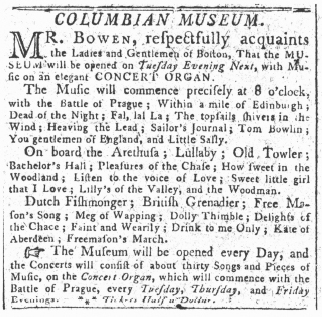
Fig. 443. Concert advertisement from the Columbian Centinel, July 27, 1799.
theatrical entertainments
From the mid-1790s on, theatrical entertainments and the actors and musicians who took part in them provided the citizens of Boston with many hours of diversion and enjoyment. An evening at the theater was filled with music: orchestral music before and between the acts of the plays and operas; the operas themselves with singers, dancers, and instrumentalists; pantomimes, and as one critic wrote, “impudent Dances and Songs” larded between the acts.
But the establishment of a resident theater, sanctioned by law, was long in coming. Although other colonial communities objected to theaters and legislated against them, Massachusetts was among the last to allow theatrical entertainments. The absence of the theater in Massachusetts was determined primarily by two sets of laws, one group passed in the 1640s in England and the second passed in 1750 in Massachusetts. In the 1640s three ordinances suppressing stage plays in England were enacted, a provisional one on September 2, 1642, and two more definitive ones on October 22, 1647, and February 11, 1648. The latter two ordered that stages, seats, and galleries be torn down, that actors be punished as rogues, and that spectators be fined five shillings.88
Fig. 444. ms legislation from the Massachusetts Bay Colony, 1750.
On April 11, 1750, the General Court of Massachusetts passed An Act For Preventing Stage-Plays and Other Theatrical Entertainments (fig. 444). This act levied a fine of £20 a day against anyone who for gain “used and improv’d any house, room or place whatsoever, for acting or carrying on any stage-plays, interludes or other theatrical entertainments. . . .” It also fined actors and spectators £5 for being present at any such gathering “where a greater number of persons than twenty shall be assembled together.” The act was renewed regularly until the 1790s and prevented the development of public theatrical entertainments in Massachusetts until the last decade of the eighteenth century.89
Both the English and colonial acts were passed in reaction to the abuses, distractions, and disorder surrounding public performances. In the 1640s not only did the middle-class Puritans object to stage-plays on moral and religious grounds, but Charles I following the advice of Bishop Laud also withdrew his support. Thus, just at the height of the English drama of Shakespeare, Marlowe, and Jonson, “deprived both of middle-class and court patronage, the English theatre had no audience left but the sort that attends burlesque shows today; and the English theatre became not much better than burlesque shows.”90 The 1640 acts called a halt to a theater that was already in decline. By 1750, however, the theater had again revived in England and her colonies. But when two English actors attempted to stage Thomas Otway’s tragedy The Orphan or Unhappy Marriage in Boston, the audience was so eager to get in that there were “some disturbances arising at the door” which “rendered the affair more notorious.” The 1750 act was passed in reaction to this event and its accompanying disorder. The preface to the act suggests that the reasons for passage were not strictly religious: stage-plays encouraged “great mischiefs,” they were expensive and discouraged “industry and frugality,” and, last of all, they tended “generally to increase immorality, impiety and a contempt for religion.”91
Private Entertainments
Massachusetts was founded by Puritans, whose teachings were strongly against stage-plays. Until the late 1680s the Puritan leaders not only preached, but also governed. Thus, as long as they were in power, theatrical performances in Massachusetts were not even attempted. But with the restoration of Charles II in 1660, and more important for Massachusetts, with the reign of James II beginning in 1685, a new era began. A new charter for the colony was written, with the direction of the colony given to royally appointed governors, most of them men of fashion and members of the Anglican church. With the governors came an entourage of assistants and royal troops who sought the “Entertainments” familiar to them in England, where even before the Restoration musical plays in the form of “Italian opera” had been staged.
In England, after the return of Charles II (who had developed great admiration for the music of Lully at the court of Louis XIV during his exile), stage presentations were more frequent and Charles himself was linked with the actress Nell Gwynn. John Evelyn (an Anglican) recorded with distaste in his diary the effect of Restoration theater and its players on leading English citizens. He wrote that he very seldom went “to the public theatres for many reasons now, as they were abused to an atheistical liberty; foul and undecent women now (and never until now) permitted to appear and act, who inflaming several young noblemen and gallants, became their misses, and to some, their wives . . .” leading to the “ruin of both body and soul.”92
It was the fear that similar evils would come to Massachusetts that caused Increase Mather to add a preface against stage-plays in his Testimony against several Propbane and Superstitious Customs, Now Practiced by some in New England. The testimony itself was against “Health-Drinking,” dicing, cards, “Christ-Mass-Keeping,” “New-years gifts,” “Candle-mass,” and Shrove Tuesday. Before it was published, Mather added a preface (dated September 30, 1686) prompted by “much discourse of beginning of Stage-Plays in New-England.” The year before, “Promiscuous Dancing was openly practiced, and too much countenanced in this Degenerated Town” and Mather had issued his Arrow (see fig. 382). Both Mather and Samuel Sewall made it clear in 1685 that one of the reasons they objected to Francis Stepney, the dancing master, was his claim that “by one Play he could teach more Divinity than Mr. Willard or the Old Testament.” The Arrow argued that “Scripture-stories acted in a Play, which indeed is a profane Practice common amongst the Papists,” were “prohibited in Reformed Churches under pain of highest censure.” But Stepney left town on July 28, 1686, without staging a play.93
Yet others wanted their pleasures. According to Sewall, the royal officers on board the frigates in the harbor celebrated the queen’s birthday on September 25, 1686, with the firing of guns and “many Hussas.” For the king’s birthday celebration on October 13 and 14, there were guns and fires and even a parade through the streets “with Viols and Drums, playing and beating by turns.” On December 20 Governor Edmund Andros arrived, with his red-coated aides. On March 10, 1687, Sewall noted that “Mr. Mather preaches the Lecture. Speaks sharply against Health-drinking, Card-playing, Drunkenness, profane Swearing, Sabbath-breaking, &c.” It was not just Stepney but also the royal governor and his entourage that led Mather to speak out against the “abominable vanities” and “lewd Inventions” of stage-plays that corrupted manners and caused young people to learn to practice vice instead of learning to hate it.94
Later in 1687, others must have come to town to attempt to stage an exhibition of talents, more likely magicians than actors. Sewall notes in his diary for the “Sabboth,” December 4, 1687, of going to see John Wing, the keeper of the Castle Tavern on Wing’s Lane at Dock Square. He wrote that:
In the Even Capt. Eliot, Frary, Williams and Self, Treat with Brother Wing about his Letting a Room in his House for a man to shew Tricks in. He saith, seeing ’tis offensive, he will remedy it. It seems the Room is fitted with Seats. I read what Dr. Ames saith of Callings, and Spake as I could, from this Principle, That the Man’s Practice was unlawfull, and therefore Capt. Wing could not lawfully give him an accommodation for it. Sung the 90th Ps. from the 12th v. to the end. Broke up.95
Despite this opposition, plays were not totally suppressed. The students of Harvard College apparently were the next to attempt a play. Increase Mather, nonresident president of the college from 1685 to 1701, notes in his diary for October 10, 1698, that he “visited the Colledge . . . examined several of the Scholars about the Comedy etc.” Had Mather himself resided on campus to supervise the daily routine of the scholars, the “Comedy” would certainly never have taken place. Under the guidance of tutors John Leverett and William Brattle from 1686 to 1697 and Ebenezer Pemberton and Jabez Fitch following that, the students had been exposed to a more liberal atmosphere. It was such an atmosphere that prompted the Rev. Solomon Stoddard (a.b. 1662) of Northampton and father of two graduates (1697 and 1701) to preach in 1703 that “Places of Learning should not be Places of Riot and Pride. . . . fond and proud Parents should not be suffered to introduce evil customes; ’tis not worth the while for persons to be sent to the Colledge to learn to Complement men, and Court Women; they should be sent thither to prepare them for Publick Service, and had need to be under the over-sight of wise and holy men.”96
It seems probable, although evidence is lacking, that the more “liberal” Harvard graduates and the growing community of Anglicans read plays and even staged them privately with friends. Sewall himself notes reading a folio of Ben Jonson while waiting for dinner at Bright’s Tavern in Rhode Island on September 16, 1706. It is clear, though, that in 1714 someone must have suggested that the handsome new Town House (recently rebuilt after having been destroyed by fire in 1711) be used as a place to stage plays. Sewall objects strenuously to this in a letter to Isaac Addington on March 2, 1714: “There is a Rumor, as if some designed to have a Play acted in the Council-Chamber, next Monday; which much surprises me: And as much as in me lyes, I do forbid it. The Romans were very fond of their Plays: but I never heard they were so far set upon them, as to turn their Senat-House into a Play-House. Our Town-House was built at great Cost and Charge, for the sake of very serious and important Business. . . . Let it not be abused with Dances, or other Scenical divertisements. . . . Ovid himself offers invincible Arguments against publick Plays Let not Christian Boston go beyond Heathen Rome in the practice of shamefull Vanities. . . .” His diary makes no mention of the event nor does it seem to have taken place. The proposed stage-play could have been the desire of the same citizens who went to Brownell’s dancing classes or those who had caused such grief to Sewall the month before on February 6 by drinking (after sundown on Saturday) to the queen’s health on her birthday at the tavern kept by John Wallis.97
It is quite likely that, as the city grew and more musicians became residents, private theatrical entertainments were staged. A Boston shopkeeper, Benjamin Walker, Jr., suggests this in his journal in 1729 as he recorded the movements of Governor William Burnet (whose entourage had brought the Deblois family, likely participants in the public concert announced for February 18, 1729, and discussed on pp. 803–804). Walker recorded the following for May 26, 1729:
Mond 26 The Cade[t]s muster’d B. Pollor[d] Captn J. Green ensign Phillips Liuett its sd Gouer Wm Burnet. Ltt Govr Dummer Councillors N. Byfield. Cushing Dauvenport T: Hutchinson Dows. Secretary Willard, Came out of ye Town house ye Cade[t]s 24 of ym Came up Kings Street before ye Gentlemen to Guard ym To Captn Pollords House to an Entertai[n]ment, and ytt Pollard Green & Phillips reed from Colol Burnet gaue ym in Kings Street Their Staues & Ensign.98
Just what the entertainment was at Benjamin Pollard’s house is unknown. It could have simply been a meal with health-drinking and singing or possibly something more elaborate that included the dances and “other Scenical divertisements” disapproved by Sewall earlier. Although unlikely, it could have been a reading of John Gay’s The Beggar’s Opera, which was first performed in London on January 29, 1728, sixteen months before the gathering at Pollard’s house. This opera was the greatest theatrical success of the century. Through its use of English dialogue portraying the low life in London, it satirized English politics and the Italian opera. The audiences found the use of familiar tunes (forty of the sixty-nine are from Thomas D’Urfey’s Wit and Mirth; or, Pills to Purge Melancholy, London, 1719–1720) a refreshing change from the Italian operas which had become so popular, especially after the arrival of Handel in London in 1710. The use of English ballads and tunes in operas became the new fashion, leaving the Italian works with little or no audience.
These popular tunes were familiar to the colonists, too, even though they probably did not have the opportunity to hear them in Gay’s opera in the colonies immediately. One colonist who saw the opera in London commented on the transformation of these tunes so often heard sung by street singers. James Ralph, a Philadelphian who went to London in 1724 with his friend Benjamin Franklin and stayed on in England to become a successful writer, wrote in his publication The Taste of the Town; or, a Guide To All Publick Diversions (London, 1731):
The Beggar’s Opera by robbing the Performers at Pye-corner, Fleet-Ditch, Moor-fields (and other Stations of this Metropolis, famed for travelling Sounds) of their undoubted Properties, has reinstated them in Wealth and Grandeur; and what shock’d most Ears, and set most Teeth on Edge, at turning the Corner of a Street, for half a Moment; when thrown into regular Entertainment, charms for Hours.
He also discussed other theatrical entertainments including pantomimes and the opera that preceded the debut of The Beggar’s Opera. He wrote that
after the Restoration, we had at different Times several Entertainments, which were then stiled Drammatick Operas; which were indeed regular Stage plays larded with Pieces of occasional Musick, vocal and instrumental, proper to the Fable, and introduced either in the Beginning, Middle or End of an Act, by single Voices, two or three Part Songs, and Chorus: These were likewise embellished with Scenes, Machines, French Dancing Masters, long Trains, and Plumes of Feathers.99
Although the evening’s diversion at Pollard’s was probably neither The Beggar’s Opera nor an elaborate “Drammatick Opera” similar to those described by Ralph, both types of theatrical entertainments were familiar to members of the Boston community who had been in London. The words and music from current hits were available to them in such English periodicals as the Gentleman’s Magazine and later in the London Magazine. In 1732 they could even follow the play George Barnwell printed in installments in the New-England Weekly Journal. That small private entertainments were not uncommon and were condoned is evident from the second section of the previously cited 1750 Act For Preventing Stage Plays (see fig. 444). In that section, groups of up to twenty people gathered for stage entertainments were allowed and were not to be fined.100
Newspaper announcements and notations in private diaries indicate that private readings continued after the 1750 act and that the plays themselves were being imported for sale. On February 19, 1757, the Boston Gazette offered for subscription “The Suspected Daughter; or, the Jealous Father, a farce of three acts, both serious and comic, as it was acted by a number of gentlemen and ladies. Written by T.T. jun.” In 1759 Samuel Gardner of Salem noted in his diary that he “Spent the Evening at the Buttery, Mr. Watson being there, a Tragidy acted.” Also in 1759 Harvard College student Nathaniel Ames recorded seeing The Drummer acted at How’s, The Revenge acted at Bowman’s, and admitted on June 12, 1760, to his own participation in Tancred and Sigismunde “for which we are likely to be prosecuted.” Although Morison reports that Harvard College authorities permitted student playacting in 1762 as an “academical exercise,” the College Book for November 12, 1762, prohibits any undergraduate to be “an Actor in, a Spectator at, or any Waies concern’d in any such Stage Plays, Interludes or Theatrical Entertainments in the Town of Cambridge or elsewhere.” The booksellers were not discouraged by such a proclamation. In the same year Rivington and Miller of the London Book Store advertised several plays, including Musical Lady, Don Quichote, and Love in a Village. At least one copy of The Beggar’s Opera was available for purchase in Boston in 1764 as the advertisement in the June 25 Boston Gazette indicated (see fig. 415). On July 19, 1765, the New-Hampshire Gazette lists the “Beggar’s Opera in two acts” for sale.101
public entertainments
While private readings of theatrical works may have been condoned, the 1750 act made it clear that public entertainments were not. In a community that included a handsome building like Faneuil Hall (given to the city in 1742) and that had a history of several concerts given there and in large meeting rooms in taverns, it would be surprising if citizens such as the “Number of Gentlemen” who performed in and attended the concerts did not desire stage-plays also. Public opinion must have been against attempts, perhaps by the same “Gentlemen,” to organize stage-plays in the city and there was no area outside the city limits similar to Philadelphia’s “Liberties” where acting companies could perform without much fear of arrest.
Attempts were made, though, and in many instances they coincided with times of war and the presence of large gatherings of troops in the area. At such times the citizens complained of a general lowering of moral standards which was often accompanied by talk of and the setting up of stage-plays for the diversion of the officers and men. For instance, in the summer of 1746, a large concentration of troops fresh from victory at the battle of Louisbourg was stationed in the Boston harbor for several weeks. As one historian wrote, the “large assemblages of soldiers in the Town, holiday celebrations, and reception of persons of rank, of course tended to loosen the reins both of government and morals.” The town fathers responded with an attempt to enforce more stringent regulations and the editor of the Boston-published American Magazine and Historical Chronicle printed an article “On Theatrical Entertainments” appearing in the August 1746 issue. The article reviewed the wickedness of the theater. Ticking off the list of evils, the author wrote:
For whether I insisted on the Lewdness or Impiety of most of the Plays themselves, on the infamous Characters of the Actors and Actresses, on the scandalous Farces they commonly tag the gravest Plays with, or, above all, on the inhumanly impudent Dances and Songs, with which they lard them between the Acts; I say, which soever of these Particulars I insisted on, each of them would furnish Matter for a great many pages . . . now a-days, a good Play is no other than a Trap to draw in the Modest and Innocent to a Love of Theatrical Entertainments: And the Minds of the Spectators are not the safer from being polluted and debauched, tho’ the Play itself be in the main decent & modest; since the ingenious Contrivance of the Managers entirely prevents the good Effect of any worthy Sentiment expressed in the Play, by introducing a painted Strumpet at the End of every Act, to cut Capers on the Stage in such an impudent and unwomanly Manner, as must make the most Shocking Impressions on every Mind. . . .102
Later infusions of troops from 1768 through the evacuation of the city in 1775 brought similar complaints and the actual staging of several works. Before their arrival, a few attempts at public theatrical events were made. Two young Englishmen mentioned previously in connection with the 1750 Act For Preventing Stage Plays (see fig. 444) are said to have held an exhibition at the Royal Exchange Tavern sometime before the act was passed in April 1750. The players were assisted by local volunteers in Thomas Otway’s The Orphan or Unhappy Marriage. The eagerness of the spectators to get in caused a disturbance which resulted in the adoption of the act by the legislature. The Englishmen could have been Walter Murray and Thomas Kean who were known to have had an acting company in Philadelphia in late 1749, in New York from February 1750 to July 1751 and in Virginia and Maryland in 1751 to 1752. The Otway play as well as Shakespeare’s Richard III and Gay’s Beggar’s Opera were among the many offerings of the Murray and Kean troupe. Because of the act, Boston audiences obviously did not get the opportunity to see any of this repertory.103
Another troupe, this time under the direction of David Douglass, ventured as far into New England as Newport for a successful season from August through early November 1761 when they returned to New York for five months. Back again in Newport in the summer of 1762, they also went to Providence where William Goddard, the publisher of the Providence Gazette, noted that “much company from Boston, etc. attended the theatre and were highly gratified. The theatrical campaign was short. Party politics occasioned the suppression of plays.” Douglass must have sensed that there was potential opposition, for his Providence performances were held at the “New School House” and were advertised as “Concerts of Musick” which had such works as the tragedy Fair Penitent and the pastoral farce Damon and Phillida sandwiched (gratis) “Between the several Parts of the Concert.” The opposition forces were not fooled and an Act to Prevent Stage-Plays very similar to that of Massachusetts was passed by the Rhode Island legislature on August 30, 1762.104
Boston theater-lovers who might have made the trip to Providence to the “Concerts” almost had an opportunity to see the same troupe in nearby Portsmouth, New Hampshire. On June 3, 1762, forty-five leading wealthy citizens of Portsmouth, acting on a “proposal made by one of the actors of the plays, sometime since at Newport but more lately at New York, to erect a play-house here sometime hence,” petitioned Governor Benning Wentworth for permission to allow the play-house. Although objections by other citizens and the legislature (on grounds of morals and hard times) convinced the governor to reject the proposal, Portsmouth citizens had theatrical entertainment of sorts within a few years. On November 3, 1769, they could have attended a reading of Thomas Arne’s Love in a Village at Staver’s Long Room. It was performed by “a Person who has read and Sung in most of the great towns of America. He personates all the characters, and enters into the different Humors and Passions, as they change from one to another throughout the opera. The Songs in this Opera (of which there are Sixty-Nine) are set to Musick by the Greatest Masters.” The same person must have been in Salem on October 10, for the Essex Gazette (October 3, 1769) announced a reading of the ballad opera Damon and Phillida “By a Person who has Read and Sung in most of the great Towns in America.” Between the acts in this entertainment, the performer (possibly Mr. Wardwell, an itinerant English actor) also sang songs from Arne’s serious opera Artaxerxes. The evening ended with a cantata, called Neptune & Amymone.105
By this time, though, the scene had changed in Boston. The British troops, responding to the Boston merchants’ resolutions to limit trade with England, began to occupy the town in October of 1768. In A Journal of the Times, the effect of this occupation upon the morals of the citizens is noted daily. By January 8, 1769, the situation had become so bad that the author of the Journal article wrote that the “unhappy consequences of quartering troops in this town, daily visible in the profaneness, Sabboth breaking, drunkenness, and other debaucheries and immoralities, may lead us to conclude, that our enemies are waging war with the morals as well as the rights and privileges of the poor inhabitants.” That the officers in addition to the enlisted men contributed to the general disorder is clear from the following incident described in the Journal for January 26.
The court concert of last evening was it seems, turned topsy turvy, as Joan the Italians was a week or two before—Some officers of the army were for a little dancing after the music, and being told that G[overno]r B[ernar]d did not approve of their proposal, they were for sending him home to eat his bread and cheese, . . . they then called out to the band to play the Yankee Doodle tune, or the Wild Irishman, and not being gratified they grew noisy and clamorous; the candles were then extinguished, which, instead of checking, completed the confusion; to the no small terror of those of the weaker sex, who made part of the company.—The old honest music master, Mr. D[e]bl[oi]s, was roughly handled by one of those sons of Mars; he was actually in danger of being throatled, but timeously rescued by one who soon threw the officer on lower ground than he first stood upon; the inoffensive Bartholomew Gr[ee]n, who keeps the house for the commissioners, presuming to hint a disapprobation of such proceedings, was, by an officer, with a drawn sword, dragged about the floor, by the hair of his head, and his honest Abigail, who in a fright, made her appearance without a head dress, was very lucky in escaping her poor husband’s fate. . . .
Little wonder that at the town meeting on March 13, 1769, Boston citizens sought to “check the progress of vice, and immoralities now breaking in upon the town like a flood,” vices which included the preparations for a play to be given by some officers.106
Although no record of a performance has been located for that time, it is not long before they begin to appear. John Rowe, a wealthy merchant and former selectman, recorded several evenings of theatrical entertainment in his diary. On March 23, 1770 (just eighteen days after the “Boston Massacre”), Rowe wrote that in the evening he “went to the Concert Hall to hear Mr Joan read the Beggars Opera & sing the Songs. He read but indifferently but Sung in Taste, there were upwards one hundred people there.” Mr. Joan, a violinmaker and player (see p. 789) is “Joan the Italian” referred to in the concert account of January 26, 1769 above. On August 6, 1771, Rowe went on board the ship Salisbury with over sixty other invited guests who “spent the evening had a fine entertainment & the Genteelest supper I ever saw.” On November 1, 1771, he marveled at a Yorkshire man’s skill on horseback at Brackets. Exhibitions are noted from Mrs. Clappams’s balcony on King Street near the anniversary of the March 5, 1770, “massacre” in 1772, 1773, and 1774, but these are, according to the March 7, 1774, Boston Gazette, “Exhibition Portraits of the Murderers and the slaughtered Citizens.”107
In Portsmouth, New Hampshire, W. S. Morgan (a musician who was frequently heard in concerts in Boston) staged several elaborate entertainments between September 1772 and January 1773. Advertised as exhibitions, the programs included satires, comic dances, pantomimes, and other acts. The program on October 23 included (1) “A New Prologue”; (2) “A Song”; (3) “The Devil and the Doctor, or, a hint to the College of Physicians”; (4) “An Interlude of Singing & Dancing Call’d Navel Glory; or, The British Tars Triumph”; (5) “A Pantomimical Entertainment in Grotesque Characters, call’d Win Her and Wear Her; or, Harloquin Skeleton”; concluding with (6) “an Epilogue Addres’d to Everybody, not meant at Anybody, to be spoke by Somebody, in the Character of Nobody.” His audience included the country folk as well as the wealthy, for he acknowledged in the November 27, 1772, New-Hampshire Gazette that “many Complaints have been made by persons from the Country, being disappointed at there being no Performance, on account of Extremity of Weather.” He gave them “this Public Assurance that nothing of the nature shall happen again, but will positively Exhibit on Mondays, Wednesdays, and Fridays, till Notice is given in the Paper, for a stop to prepare something new.” Morgan never attempted these entertainments in Boston, although he was very much a part of the musical scene there. His benefit concert on September 8, 1774 (see fig. 435) featured one of the largest orchestral groups that had ever appeared in Boston.108
With the blockade of the Boston harbor on May 13, 1774, and the uprising in Concord on April 19, 1775, more British troops arrived. Among those who arrived on May 25, 1775, was Gen. John Burgoyne. As tense as the times were, Burgoyne set out to produce plays in Faneuil Hall. The performers were “a society of ladies and gentlemen.” Burgoyne had successfully written and produced a masque, The Maid of the Oaks, for the wedding of his nephew the Earl of Derby in June 1774. In that production, described in the Gentleman’s Magazine for 1774, professionals took the main roles but relatives and friends (including some children as cupids) also performed in the choruses and dancing. That entertainment, which cost £12,000, so impressed the producer and actor David Garrick that he convinced Burgoyne to expand it for a full-length production which took place at Drury Lane in London on November 5, 1774.109
Now six months after his Drury Lane triumph, Burgoyne was in Boston marshaling what dramatic and musical resources he could find in an occupied city. He wrote and produced his second play, The Blockade of Boston, which even Bostonians saw, for Rowe notes in his diary for January 22, 1776: “This evening The Tragedy Tamarlane to which was added the Blockade of Boston was performed at Faneuill Hall.” Just how many citizens active in resisting the British saw the play is not known although its impact was felt by the most ardent patriots. One talented patriot, Mercy Otis Warren, wrote a rebuttal to Burgoyne in her short play The Blockheads; or, the Affrighted Officers, printed in Boston in Queen Street in 1776 (fig. 445). Although the play was probably never staged in Boston, it was read by many colonists who enjoyed her spirited style and her political jibes.110
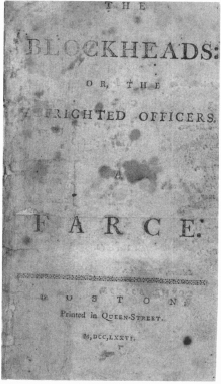
Fig. 445. Theatrical play title page, 1774.
Burgoyne’s theatrical season in Boston was short. On February 23 Rowe saw a presentation of The Wonder of Wonders. On March 3 the country people began throwing “Many Shells in Town,” on March 7 the British troops prepared to leave (gathering provisions by raiding Rowe’s and others’ warehouses on March 11 and 12). The British evacuated on March 17 and Gen. Washington arrived in town two days later. Although historians record that theatrical entertainments left Boston with Gen. Burgoyne, Rowe wrote on March 28, 1776, that “This day The General Court made a handsome Entertainment at Capt Marston’s that now lives in Colo. Ingersoll’s house, for Genl Washington & the other Generalls of the United Colonies.” The “handsome” entertainment must not have been drama for Rowe immediately follows that passage with “& the Revd Dr. Elliot preached at Dr. Chauncey’s meeting a Sermon on the Occasion giving a History of what has hapind in Town during the Siege.”111
During the next few years, music and other entertainments were rare in Boston. Because of the war and the new constitution and new allies, some Massachusetts residents were required to live in other areas and became exposed to new experiences such as the theater in New York, Philadelphia, London, or Paris. The altitudes developed during these years, especially in children who went to school in Europe, brought to the Boston of 1790 young adults with far more liberal ideas. It was the determination of this generation that finally made it possible for Boston to have a handsome and legitimate theater.
To cite one noted family, John Adams went to France, accompanied by his eleven-year-old son, John Quincy, in 1778. The two of them often went to concerts and other entertainments. John Quincy went to school from 1778 to 1779 in Passy where he studied French, Latin, fencing, dancing, music, and drawing. At the age of twelve he went to the University of Leiden. In 1782 he was in Russia as a French translator, returning through Finland, Sweden, Holland, London, and Paris. In London and Paris he and his parents attended concerts and the theater. His mother, Abigail, was at first shocked at the ballet dancers in Paris. In a letter (February 20, 1785) to Mrs. Cranch she wrote that she “was ashamed to be seen to look at them. Girls, clothed in the thinnest silk and gauze, with their petticoats short, springing two feet from the floor, poising themselves in the air, with their feet flying, and as perfectly showing their garters and drawers as though no petticoat had been worn, were a sight altogether new to me.” A year later (March 4, 1786) she asked in another letter to Mrs. Cranch, “Shall I speak a truth, and say that repeatedly seeing these dances has worn off that disgust which I first felt and that I see them now with pleasure?”112
In the fall of 1788 Mr. and Mrs. Smith announced in Boston “Moral Lectures” including a “dialogue on the horrid crime of murder, from Shakespeare’s Macbeth” at Concert Hall. On June 5, 1790, Hallam and Henry of the Old American Company petitioned the legislature for permission to “open a theatre in Boston under proper regulations,” but the request was refused. That many of the citizens were going to work for a theater is indicated in a letter from architect Charles Bulfinch writing to his mother from New York in 1789 when he and his wife were attending the inauguration of George Washington: “Among the pleasures my companions promised themselves in this journey, you know that the seeing of a play was not reckoned among the least; I have the pleasure to inform you that although their expectations were highly raised, they have been more than gratified. . . . You must expect our ladies to form a party in Boston for establishing a Theatre there, and they are pretty sure of success.”113
The success was not immediate, but it eventually came. The supporters of the theater sought the repeal of the antitheater law at the town meeting on October 22, 1791. The petition, opposed by Samuel Adams and other leading citizens, was voted down but a committee composed of Perez Morton, James Hughes, Charles Bulfinch, James Prince, Samuel Cabot, and Joseph Russell was formed to study the matter. Benjamin Russell, editor of the Columbia Centinel, gave it full support, stating in an editorial on October 26 that “the question which is to be agitated this day, is not, whether a Theatre shall be erected in this town, or not? It is, whether the citizens of this metropolis will any longer silently submit to an infringement on their natural and imprescriptable Rights.”114
The committee reported to the General Court on November 10, 1791. They urged the legislators to repeal the law for various reasons: A well-run theater would “essentially Advance the interest of Public and Private virtue,” would have “A Tendency to Polish the Manners and habits of Society” and could “improve and refine the literary taste of our rising Republic.” The committee even recommended the appointment of an arbitor to judge the taste and decency of proposed exhibitions. On January 25, 1792, the legislators voted ninety-nine to forty-four to keep the act.115
There followed considerable activity on the part of those determined to have a theater. Newspapers were full of letters. Essays, such as The Rights of the Drama by “Philo Dramatis” and The Effects of the Stage on the Manners by William Haliburton, were published. Philo Dramatis tried to find advantages for various classes of citizens and to win their support by suggesting that there be benefit performances not only for the poor but also for the University at Cambridge. Haliburton seemed to be speaking more of the wealthy class, for he maintained that “head-work is now in more repute than hand-work, and ease will not be exchanged for toil.”116
A committee of five leading citizens did more than write letters and essays. They created a theater in Board Alley, in a structure variously described as “a wooden shed of the rudest construction” and as “one of a row of wooden stables with a raised platform at one end.” Holding five hundred persons, this “New Exhibition Room” had a pit, one row of boxes, and a gallery. It opened on August 10, 1792, with dancing on the tightrope by Messieurs Placide and Martin, singing by Mr. Wools, The Gallery of Portraits by Mr. Harper, a “Dancing Ballet” called The Bird Catcher with the minuet and gavotte danced by Mr. and Mrs. Placide. Many other entertainments followed, including the “Moral Lectures” of George Barnwell, Rosina, Love in A Village, and Hamlet. Placide and his French troupe presented four operas in French: The Blacksmith (an adaptation of Philidor’s Le Marechal Ferrant); The Cooper (an adaptation of Audinot Gossec’s Le Tonnillier); The Deserter (an adaptation of Monsigny’s Le Déserteur) and Le Devin du Village (by Jean Jacques Rousseau). The leader of the orchestra, Alexander Reinagle (a leading musician who had come from England in 1786 and was filling in at Board Alley before taking on his new position as co-manager of Philadelphia’s Chestnut Street Theatre), formed an ensemble that, according to the Columbian Centinel (March 23, 1793), included “some of the best performers in the new world.”117
On December 5, 1792, at the end of the second act of School for Scandal the sheriff arrested Mr. Harper on the charge of breaking the law against theatrical entertainments. The crowd was enraged “and the resentment of the citizens at what they conceived to be a violent and untimely measure, discovered itself in several spirited proceedings, and a loud call for the performance to go on” according to the Columbian Centinel, September 8, 1792. The more moderate members persuaded the audience to leave quietly; Mr. Harper was defended (by Harrison Gray Otis) before the judge at a hearing at Faneuil Hall on the grounds that the warrant was not issued upon complaints made on oath. The judge ruled in his favor; Governor John Hancock was unhappy with the disregard for the law. Performances resumed at the Board Alley Theatre. The season included at least twenty-five full-length plays, one full-length English opera, four French operas, and thirty-five afterpieces, about one-fourth of these pantomimes or ballets. The announcement for the last performance concluded with the advice that “the public must rest assured this will be positively and definitely the last night of performing this season, as the house will be taken down on Saturday.”118
Even before the house was taken down a group of fifty-seven leading citizens proposed to build a permanent theater for Boston. Among the “Proprietors” who promised their financial support on April 9, 1793, were John Quincy Adams, Joseph Russell, William Tudor, Charles Bulfinch, Gen. Henry Jackson, and William Scollay. The newly appointed manager, Charles Stuart Powell, went to England to assemble a company of actors and musicians. Architect Charles Bulfinch began to design the building, which was erected on an open area on Federal Street at the eastern end of Bulfinch’s new development of the Tontine Crescent. The handsome Georgian structure was opened on February 3, 1794.119
Bulfinch himself described the theater as “a lofty and spacious edifice, substantially built of brick, with stone fascias, imposts, &c. It is one hundred and forty feet long, sixty-one feet wide, and forty feet high.” The front and rear were decorated with Corinthian columns and pilasters, the front having a projecting arcade for “the convenience of carriages landing their company under cover.” Patrons to the boxes entered under this cover; pit and gallery ticket-holders entered the doors on each side. Inside, the elegant interior included four Corinthian columns supporting the ceiling and a stage thirty-one feet wide; the back walls were painted light blue, the boxes and column straw and “lilach,” trim was gilded, “a crimson silk drapery suspended from the second boxes, and twelve elegant brass chandeliers of five lights each, complete the decoration.” At the east end of the building on the second level with the theater was an elegant dancing room (fifty-eight feet long, thirty-six feet wide, and twenty-six feet high) for the “lovers of innocent and cheerful amusement.” On the ground floor were dressing rooms under the stage for the players, “spacious card and tea rooms” (one which was leased as a restaurant to Michael Mahony) and a room leased to Pierre Landrin Duport for dancing classes.120
Fig. 446a. Personalized admission ticket for Charles Bulfinch to the Boston Theatre in the form of a gold model (recto) by Joseph Callender, Boston, 1795.
Fig. 446b. Verso of gold medal by Joseph Callender, Boston, 1795.
In this Boston Theatre on Federal Street, Bulfinch incorporated architectural details from other theaters he had visited, especially from one in Birmingham, England, and from the Chestnut Street Theatre in Philadelphia which had been under construction since 1792. A likeness of the Federal Street façade is preserved on the engraved medal presented to Bulfinch by the proprietors (fig. 446), a medal which reserved for him a seat in the Boston Street Theatre for life—benefit nights excepted. This same facade can also be seen in an engraving of the theater made by Paul Revere on a silver punch urn presented in 1796 to Gen. Henry Jackson by the proprietors (fig. 447). The design of the theater’s interior (especially the stage) had details similar to those of the Chestnut Street Theatre (fig. 448), although in the beginning Boston had only two tiers of boxes with a total capacity of about 1,000 patrons, half that of the Chestnut Street Theatre.121
Fig. 447. Silver punch urn, full view of front (above), detail of back (opposite), by Paul Revere, Boston, 1796.
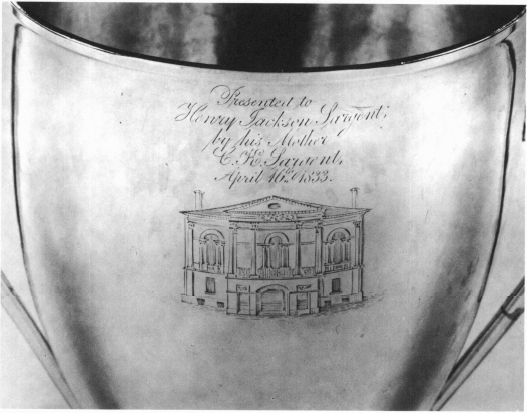
The opening was a gala occasion attended by most of the leading citizens dressed in their finest. The main dramatic feature was “the truly Republican Tragedy” of Gustavus Vasa followed by an entertainment called Modern Antiques; or, the Merry Mourners (fig. 449). Charles Stuart Powell, the manager, spoke the prologue written by young Thomas Paine who won a gold medal from the proprietors for his poetic efforts. From the announcements of the evening on broadsides and in newspapers, it appears that every effort was made to include music that would please a wide range of tastes: from “Yankee Doodle” and “General Washington’s March” to symphonies by Stamitz and Haydn.122
Fig. 448. Engraving by William Ralph from the New-York Magazine, V (1794), 194.
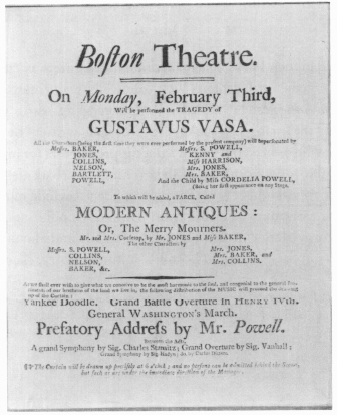
Fig. 449. Broadside, [Boston, 1794].
For such an important event in Boston’s cultural history, every detail was planned with care. The main dramatic piece, Brooke’s Gustavus Vasa, was a tragedy whose hero was a “model of patriotic virtues” and whose conduct was “at all times tempered by humanity and feeling.” Written in 1739 for a Drury Lane production that never took place because its “spirit of liberty” was too strong for the monarchy’s liking, the play was first performed in America in 1782 in Baltimore where it was dedicated to George Washington, the “deliverer of his country.” The 1794 Boston critics described the acting in the tragedy as “majestic,” “true to nature,” and “all that could be expected.” The farce Modern Antiques, written by the Irishman John O’Keefe whose works such as The Poor Soldier and The Agreeable Surprise were very popular with British and American audiences, was also well received.123
There were no arrests of the actors that evening even though the anti-theater law was still technically in force. Perhaps even the bitterest theater opponent, Samuel Adams, who was serving as governor (John Hancock had died the preceding fall) realized that he could no longer hold out against those that maintained that it was “both theoretically and practically true, that the increase of publick amusements within a town becomes absolutely necessary with the increase of its inhabitants.” The act, though not repealed during the 1793 legislative session, in essence expired quietly with the opening of the theater.124
Even Samuel Adams must have been impressed with the efforts of the proprietors to establish a well-run theater. On January 22, 1794, about two weeks before the opening, the Columbian Centinel published a list of theater regulations. These dealt with ticket prices and distribution, prompt curtain times, guarantee of heat during winter, the trustees’ right to request additions or deletions from the list of actors and musicians, and the appointment of a master of ceremonies. With the publication and enforcement of these regulations, the proprietors felt that they had covered most of the possible causes of dissension and disorder.
The two crucial appointments to be made by the proprietors were those of manager and master of ceremonies. Charles Stuart Powell, appointed as manager, had the responsibility for the quality of performance and behavior of the theatrical troupe. And, as the third regulation stated, “if in the opinion of the trustees, there be a deficiency in the music, the manager at their request, shall be held to enlarge the band, and if any of the performers on the stage or in the orchestra, shall be guilty of gross misconduct, the manager shall dismiss the delinquent at the request of the trustees.” The master of ceremonies was “to take care, that the ladies and gentlemen are seated in their places, to which they are entitled by their Tickets; to direct the disposition of the carriages coming to and going from the Theatre and generally to arrange the whole etiquette of the auditory and to prevent or suppress all kinds of disorder and indecorum.”
Col. John Steele Tyler, a respected Bostonian and brother of Royall Tyler (author of the comedy The Contrast), was chosen as master of ceremonies. In the same January 22 newspaper announcement of the regulations, Tyler laid out some of the ground rules: (1) ladies destined for the boxes were requested to attend “without hats, bonnets, feathers or any other high head dress, that the sight of the gentlemen, who are seated behind them, may not be obstructed!”; (2) no one was admitted behind the scenes (a practice so common in other theaters that sometimes the management had to stop the performances while the audience was removed from the stage); and (3) the music was assigned for each evening and the audience was requested not to call for requests as “such a request would destroy the arrangement and of course cannot be attended to.”125
From all accounts the audience followed the guidelines for opening night. The season proceeded with a busy schedule until it closed for the summer with Mr. Powell’s benefit on July 4. The account of an English visitor, Henry Wansey, who attended a performance in May, his first experience at the theater in America, describes how well Powell and Tyler had carried out their responsibilities.
A very elegant theatre was opened in Boston about three months ago, far superior in taste, elegance and convenience, to the Bath, or any other country theatre that I have ever yet seen in England. I was there last night, with Mr. and Mrs. Vaughan. The play and farce were Inkle and Yarico, and Bon Ton; I paid a dollar a ticket. It held about twelve hundred persons. One of the dramatis personae was a negro, and he filled his character with great propriety. The dress of the company being perfectly English, and some of the actors, (Jones and his wife) being those I had seen perform the last winter in Salisbury, in Shatford’s company, made me feel myself at home. Between the play and farce, the orchestra having played Ca Ira, the gallery called aloud for Yankee-doodle which after some short opposition was complied with. A Mr. Powell is the manager of the play-house, Mr. Goldfinch, the ingenious architect of this theatre, has also lately built an elegant crescent, called the Tontine, about fourteen or sixteen elegant houses, which let for near two hundred pounds sterling, a year.126
From Wansey’s account it appears that the management had succeeded in bringing a level of theatrical entertainment at least as good as that enjoyed by Wansey in the provincial theaters in England. It also appears that Tyler’s policy about musical requests had changed. From newspaper accounts this change occurred soon after the opening. In the February 13, 1794 Independent Chronicle the following pieces were recorded as performed on the February 10 concert: “Grand Symphony by Sig. Haydn, favourite Air, Yankee Doodle, General Washington’s favorite March; Grand Overture; Air, Machere amie; Grand Smyphony [sic]; Air, The Mulberry Tree; Grand Overture.” In this same paper, a notice from a “friend to the BOSTON THEATRE” urged the management to add “the truly ‘harmonic’ and republican tune of GAIRA” (Ça Ira, the then official song of the French Revolution) to the published list of music. The above-quoted review in the Independent Chronicle of the February 10 performance mentioned that the music was received with:
reiterated bursts of applause. . . . This circumstance, we conceive, evidently shews the impropriety of a bill of the Music being directed and published; and we are happy to find it is done with, and the Music left to the direction of the audience, for whose amusement they are employed. The omission of a favorite tune in the first play-bill, contrary to the original wish of the Trustees, has caused much uneasyness to many, and we fear, inconceivable mortification to some.127
The “uneasyness” was experienced not only by the management and by partisan theater-goers whose politically charged tunes were not played but also by the members of the orchestra who found themselves victims of the ardent partisanship. The tradition of calling for favorite tunes was long-standing; even the officers at the previously cited 1769 concert in a smaller and more select audience (p. 840) felt it their privilege to call for tunes and, failing to get them, “grew noisy and clamorous.” The Boston Theatre audiences of nearly a thousand people from many segments of the society must have reacted similarly, for in the Columbian Centinel on February 22, 1794, the following notice appeared:
The Musicians that perform in the Orchestra of the Boston Theatre, assure the public, that it is not more their duty than it is their wish to oblige in playing such tunes as are called for, but at the same time they wish them to consider the peculiar poignancy of insult to men not accustomed to it. Thus situated they entreat a generous people so far to compassionate their feelings as to prevent the thoughtless, or ill disposed, from throwing Apples, Stones, &c into the Orchestra, that while they eat the bread of industry in a free country, it may not be tinctured with the poison of humiliation.
The season proceeded without serious incident and with some dramatic if not financial success. The repertory included a variety of plays by Shakespeare (Hamlet, Merchant of Venice, Richard III, Romeo and Juliet, Twelfth Night), Sheridan (School for Scandal, Rivals), Goldsmith (She Stoops to Conquer), Addison (Drummer), and many others. The musical entertainments made up about a third of the total 118 performances. Many of these were musical afterpieces, which were mainly pastiches, a type of entertainment in which most of the songs were borrowed, not from traditional ballads as in The Beggar’s Opera, but from fully composed songs. These borrowed songs were provided with instrumental introductions and postludes and were woven into the spoken dialogue which carried the plot.128
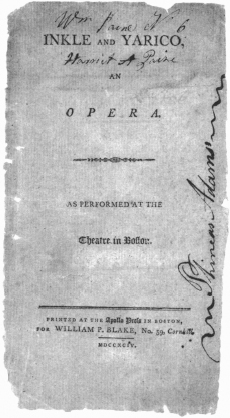
Fig. 450. Opera libretto title page, Boston, 1794.
As far as can be determined, Powell mounted fourteen different musical productions that season. The opera Inkle and Yarico (fig. 450), a very popular work first produced in London in 1787, was performed five times. With a good libretto (the story deals with the problems of slavery) written by George Colman, Jr., and the music compiled by Samuel Arnold, this work was one of the twelve most performed mainpieces in London in the last quarter of the eighteenth century. Powell staged several other proven London hits such as The Agreeable Surprise (libretto by John O’Keefe, music compiled by Samuel Arnold), The Poor Soldier (libretto by John O’Keefe, music by William Shield), and Rosina (libretto by Mrs. Frances Brooke, music by William Shield).129
An analysis of the first season in the new theater in Boston reveals that audiences heard the leading opera composers/arrangers: Thomas Arne, Samuel Arnold, Charles Dibdin, William Shield, and Stephen Storace. They were exposed to several types of musical entertainment: pastiches, burlesque masques, one-composer operas, and modified ballad operas. They heard works from four decades (1760s: 8; 1770s: 8; 1780s: 20; 1790s: 1).
When the theater closed in July 1794, Powell set off for England to recruit performers for the coming season. Among those he brought back was the singer Mrs. Catherine Hellyer (sometimes Hillier) who in 1796 became the wife of oboist and conductor Gottlieb Graupner (fig. 451), both of whom later settled in Boston to become important members of the Boston musical community. Powell’s second season ran from December 15, 1794, until June 19, 1795. The biggest new production was the mainpiece The Mountaineers, a dramatic work by George Colman, Jr., with music by Samuel Arnold. Based on two episodes from Don Quixote, the play had only nine vocal pieces in the three acts, four of these for chorus. First introduced in London in August 1793, the work was performed seven times in Boston during this second season. Powell also mounted the pantomime Robinson Crusoe (which had been performed at Board Alley in 1792). Of the total of over 140 performances, over one-fourth of them were musical, the heaviest concentration of these occurring from mid-March through mid-May.130
Fig. 451. Miniature portrait of Johann Christian Gottlieb Graupner (1767–1836) of Boston, by William M. S. Doyle, Boston, 1817.
Financially, the season was not successful and Powell was not reappointed as manager. Unhappy with this decision he announced that, upon his return to England, he would publish “A true and perfect account of The Rise, Progress and Tragi-Comical Revolution of the boston theatre.” He did not leave the Boston theatrical scene, however, and within a year he had garnered the support for a rival, the Haymarket Theatre, which will be described later.
The trustees of the Boston Theatre appointed Col. Tyler, the respected master of ceremonies, as manager for the third season. Tyler made arrangements with the successful New York troupe the Old American Company under the direction of Lewis Hallam and John Hodgkinson. This company joined forces with some of the best of the Boston players for a brilliant season of seventy-five performances from November 2, 1795, through January 20, 1796. Of the twenty-four musical productions which accounted for thirty-five of the total performances, eighteen of these were new to the Boston Theatre. Among these was The Beggar’s Opera, the first Boston performance (on January 6, 1796) of the century’s most popular ballad opera about sixty-eight years after its London premiere in 1728. Another performance to note was the benefit on December 28 for Mr. Deblois of the orchestra, probably a relative of one of the Deblois family who had contributed so much to Boston’s eighteenth-century musical life.
After the Old American Company returned to New York, the second half of this season began on January 25, 1796, with fresh recruits from England. Among them was John Brown Williamson who by the spring was managing the theater. The season ended on May 16 with Williamson’s benefit which featured Gen. John Burgoyne’s The Maid of the Oaks. The combined productions of the veteran theatrical company, the Old American Company, and the newly organized local troupe provided Boston audiences with the most ambitious and successful season yet. Of the roughly 120 productions, about forty-eight of them were musical (as compared to the fifteen or sixteen of the previous season). Some of the favorites were The Children in the Wood (libretto by Thomas Morton, music compiled by Samuel Arnold), the pantomime Le Forêt Noire (music compiled by Victor Pellissier of the Old American Company) and the opera Tammany (libretto by Ann Julia Hatton, music by James Hewitt of New York City).131
Before the season was over Powell, who had been giving entertainments at the Concert Hall, solicited subscriptions to build a new theater. Financed by Boston mechanics and by supporters of the French cause, the theater, named the Haymarket, was built at the corner of Tremont and Boylston Street (fig. 452). It was “an immense wooden pile, proudly overtopping every other building in the metropolis. It had three tiers of boxes, a gallery, a pit, drawing room, &c.” Similar to European theaters of the time (but not yet at the Boston Theatre), the pit offered the choicest seats at three shillings, the first gallery next at two shillings threepence and the upper gallery the least expensive at one shilling sixpence. The new theater opened on December 26, 1796, just eight months after Powell advertised his first proposals for subscription.132
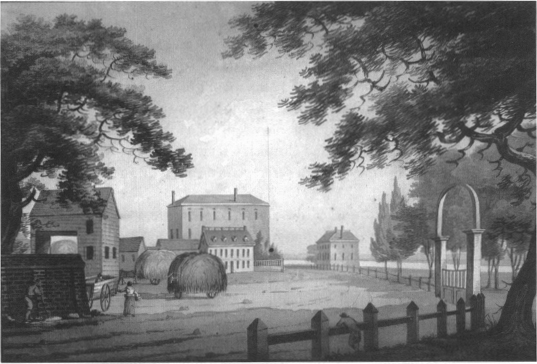
Fig. 452. Watercolor by Archibald Robertson, Boston, 1798, of the Haymarket Theatre.
With the threat of competition, John Brown Williamson worked hard to arrange an exceptional season at the Boston Theatre. In his agreement with the trustees he promised to present three performances a week with a pantomime or musical drama at least once a week, and on occasion an “opera dance” or “some short entertainment” between the play and the farce. He was to provide an orchestra of at least ten musicians. The records of the Boston Theatre preserved at the Boston Public Library reveal that Williamson scheduled many new attractions fitted out with elaborate costumes and scenery. These included Richard Coeur de Lion (a musical drama adapted by John Burgoyne and Thomas Linley from Gretry’s work with orchestral arrangements by Trille Labarre of the Boston Theatre orchestra), some original productions (Williamson’s version of Preservation, Mrs. Rowson’s Americans in England, William Charles White’s Orlando, Thomas Paine’s Taste of the Times), as well as over twenty pantomimes and ballets (including The Birthday on February 22, 1797 and Shipwrecked Mariner Preserved, both with music by Raynor Taylor of Philadelphia). Other musical innovations were the two performances of “The Battle of Prague” for “grand orchestra” by a member of the orchestra, J. G. C. Schetky, who was a nephew of Alexander Reinagle, the composer and co-director of Philadelphia’s Chestnut Street Theatre. For the month of October, Williamson featured Mrs. Elizabeth Kemble Whitlock, a member of the famous theatrical Kemble family. The Rowsons made their first Boston appearances and Catherine and Gottlieb Graupner returned to perform for a few months (they did not settle permanently in Boston until the next season).133
As mentioned earlier, the Haymarket Theatre opened on December 26, 1796, with a season that relied heavily on pantomimes, ballets, local productions (including The Battle of Bunker Hill and West Point Preserved), and works that would especially appeal to the Jacobin element of the subscribers (for example, The Death of Louis XVI). Many of the productions of earlier seasons were also performed, but the Haymarket season seemed specifically tailored to attract the audience partial to spectacles and to France. The competition for audiences was keen. William Priest, a bassoonist with the Boston Theatre that season, wrote that the “opposition rages with great violence. Much ink has been shed. One third of the public papers are crammed with what is called Theatrical Critique. . . . The dispute has lately taken a political turn. It seems ours is the aristocratic theatre. The democrats at the New Theatre are commanded by the Moral Lecture manager. . . .” One noted musician associated with the new theater was Peter van Hagen (later von Hagen) who conducted, among other works, his own orchestral accompaniments for the Battle of Hexham. Von Hagen, his wife, and his son Peter remained in Boston where they published music, performed, and taught (seep. 792).134
Fig. 453. Engraving by Abel Bowen, Boston, before 1825, opposite p. 334, from Caleb H. Snow, A History of Boston, Boston, 1825.
Both theaters suffered great financial losses. During the summer an agreement was made to use the Haymarket for summer and fall performances and the Boston Theatre during the winter. A highlight of the fall season at the Haymarket was John Hodgkinson’s original production called The Launch; or Huzza for the Constitution. With orchestral parts by Victor Pelissier of New York’s Old American Company, the presentation was in celebration of the launching of the frigate Constitution.
The Boston Theatre opened in December but a fire destroyed the interior on February 2, 1798. Bulfinch redesigned the theater (the pit was enlarged and improved so that the choice seats were now there), an extra tier of boxes was added and the Federal Street façade was altered (fig. 453). It reopened on October 29, 1798, and continued as a theater until 1833. Before it burned in 1872 it served as the center for the Society of Free Thinkers, as Lowell Mason’s Academy of Music, and as a warehouse. The Haymarket Theatre had a shorter life. It was sold at auction in March 1803 with the condition that it be torn down within sixty days.135
In the preceding discussions of the repertory and through the accompanying tables, one sees the types of presentations available to Boston audiences in the first five seasons of theatrical entertainments. The top five hits of these years are listed in Table ix. Although no attempt will be made to treat in detail the many other elements involved in the theaters (such as the makeup and behavior of the audiences, fuller description of the programs and the performers, criticism of the performances, and availability of libretti and scores), some comments about the orchestra should be made. The formation of an orchestra added greatly not only to theater music but also to the development of the entire concert scene in Boston. Even though it is difficult to trace every change in the size, instrumentation, and personnel of the orchestras, a look at the 1796–1797 Boston Theatre season will give some indication of what was becoming available.
Most Frequently Performed Musical Productions in Boston 1792–1798
| Title | Librettist/Composer | Number of seasons performed | Total number of performances |
|---|---|---|---|
|
The Mountaineers |
George Colman, Jr./Samuel Arnold |
4 |
21 |
|
Rosina |
Frances Brooke/William Shield |
6 |
18 |
|
The Agreeable Surprise |
John O’Keefe/Samuel Arnold |
5 |
14 |
|
Inkle and Yarico |
George Colman, Jr./Samuel Arnold |
6 |
14 |
|
The Poor Soldier |
John O’Keefe/William Shield |
4 |
13 |
Musicians Listed in Boston Theater Records 1796–1797
| Name | Instrument | Weekly pay |
|---|---|---|
|
Mr. Anderson |
clarinet |
$10 |
|
Mr. Austin |
unknown |
10 |
|
Mr. Barbotheau |
unknown |
10 |
|
Mr. Louis Boullay |
violin |
15 |
|
Mr. Brook[e] |
unknown, violin? |
12 |
|
Mr. Dubois |
violin and corps de ballet |
18 |
|
Mr. Henry L’Epousé |
unknown |
10 |
|
Mr. B. Glaan |
piano? |
10 |
|
Mr. Frederick Granger |
violin, clarinet? |
10 |
|
Mr. Johann Gottlieb Graupner |
Oboe |
15? |
|
Mr. Trille Labarre |
composer |
16 |
|
Mr. Trille Labarre |
composer |
16 |
|
Mr. Layerne |
unknown |
10 |
|
Mr. R. Leaumont |
conductor, violin |
14 |
|
Mr. Francis Mallet |
violin, keyboard |
10 |
|
Mr. Muck |
unknown |
12 |
|
Mr. William Priest |
bassoon, trumpet? |
12 |
|
Mr. Renaud |
violin and corps de ballet |
12 |
|
Mr. Rogers |
violin and corps de ballet |
10 |
|
Mr. Sçavoye |
unknown |
14 |
|
Mr. Johann G. C. Schetky |
’cello, violin |
10 |
|
Mr. Stone |
flute, oboe |
10 |
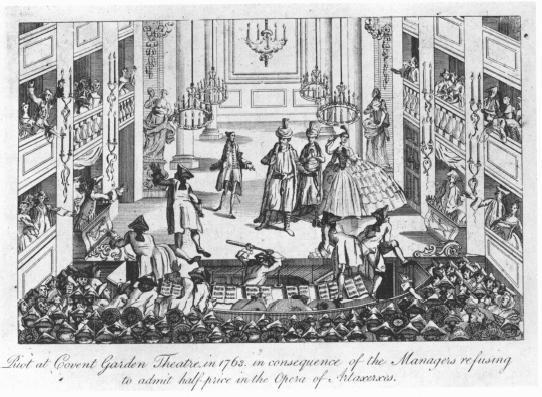
Fig. 454. Engraving by an unknown artist, England, 1763.
The records show at least twenty musicians listed during the season. It is not likely that the orchestra was always that large; a band of ten to fifteen players was probably the more normal size. Table x lists the names, instrument played (when known), and the weekly pay of musicians for that season. No doubt many musicians played more than one instrument. Frequently an oboist doubled on the flute. As can be seen, the orchestra of that year had several French musicians, many of whom had fled from France or the French West Indies. Mr. Leaumont was the conductor and principal violinist, and Trille Labarre (who died in late 1797 at the age of thirty-nine) was the house composer. Except for Francis Mallet, most of these Frenchmen did not become involved in Boston’s musical life. The pay scale for the instrumentalists was about the same as for the actors and dancers in the troupe, the major exceptions being the ballet master, Mon. Lege ($32.67), the master of ceremonies, Mr. Tyler ($28.66), and the imported stars, Mr. Bates ($40), Mr. Chalmers ($100), and Mrs. Elizabeth Kemble Whitlock ($275). The fourteen members of the 1798 orchestra at the Park Street Theatre in New York each received $10 a week, the leader James Hewitt receiving $14.136
The orchestra itself sat between the pit and the stage and, as was pointed out by the musicians in their 1794 newspaper announcement, they sat close enough to the audience to become the target of the spectators’ enthusiasm or displeasure. The description (most likely written by Bulfinch) of the proposed theater in the 1792 Rights of the Drama allowed the area for the orchestra “six feet in width . . . sufficient to admit a long table in the center, capable of affording a seat for musicians on each side of it. The music, thus situated, will convey its softest tones to every part of the building.” English illustrations from earlier in the century suggest how these musicians might have arranged themselves around a table in such close quarters (fig. 454).137
From the discussion of the first five seasons of theatrical entertainments in Boston, it can be seen that when the theater finally arrived Boston audiences were introduced to many leading plays and musical productions that were favorites of audiences in other cities in England and America. With the coming of the theater they were introduced to much music not available to them before. Because many of the “composers” of the productions used music borrowed from a wide range of preexisting musical sources, the types of new music heard by Boston music lovers were much more varied than the lists of dramatic works might indicate. Perhaps, most important of all, the presence of the theater attracted to the city a nucleus of singers, dancers, and instrumentalists, many like the Graupners and the von Hagens who remained to become important members of the musical community of Boston and her suburbs.

 CYNTHIA ADAMS HOOVER
CYNTHIA ADAMS HOOVER
